St+Art has completely transfigured the look of Delhi ‘s street, yet again. A good 2 hours walk between Khanna market & Meherchand market in Lodhi Colony will leave you astounded as they illustrate their ideas into big art on the big walls.
The Lodhi Colony of Delhi is India’s very first open public art district. Art information courtesy to Start India.
Enjoy the photographic journey of this amazing street walk by Robindro – founder, travel curator & photographer of Serene Journeys, a bespoke travel & experiential based in Delhi welcoming our LGBTQ+ travellers & hetero-friendly 😉
@aaronglasson || ‘The Sacrosanct Whole’
New Zeland artist Aaron Glassons’ ‘The Sacrosanct Whole’ is a magnificent ode to the underlying sacredness of all the things of the world.
Watch the movie and try to spot all the cultural references that Aaron drew from traditional Indian history and the Indus valley civilization.
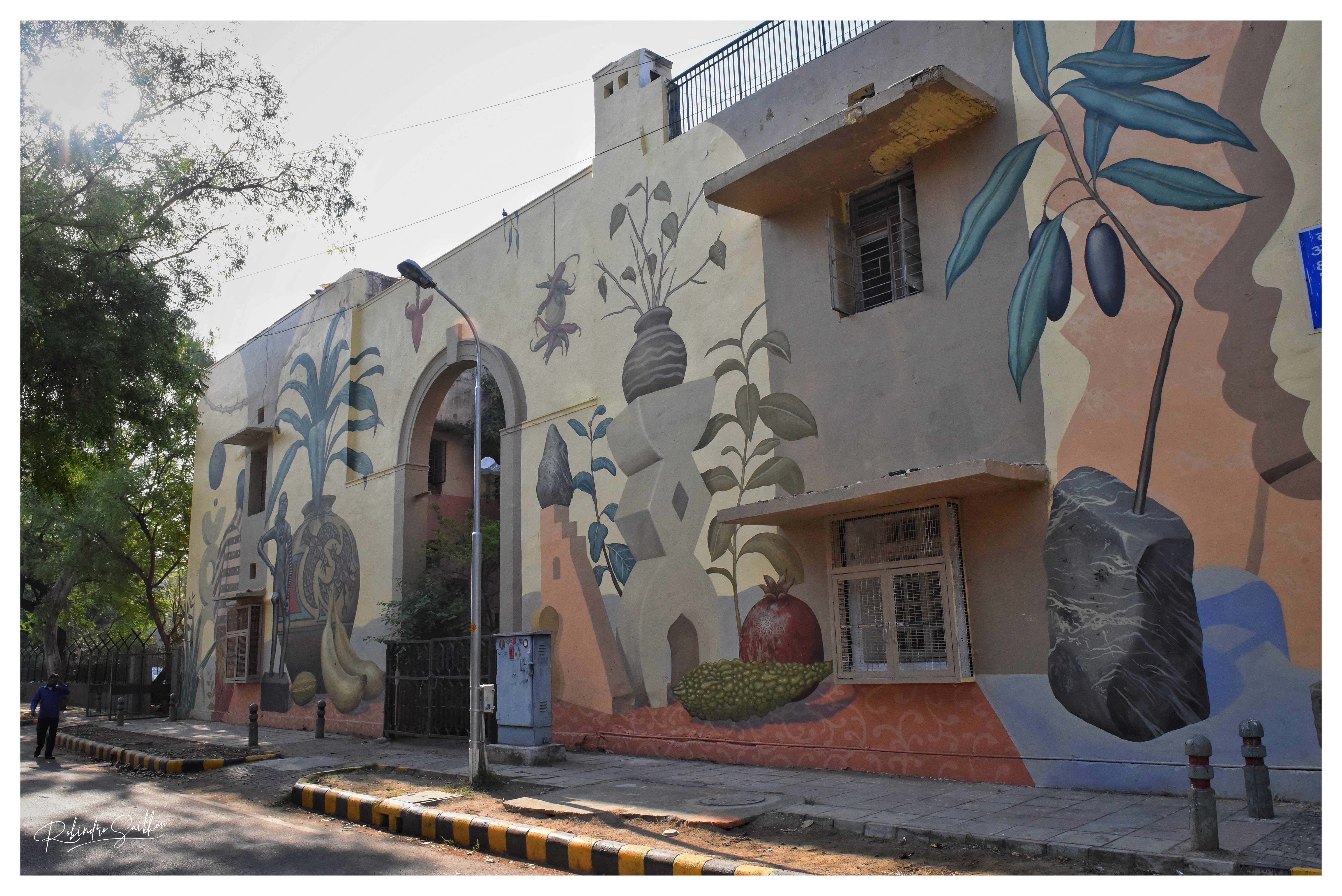
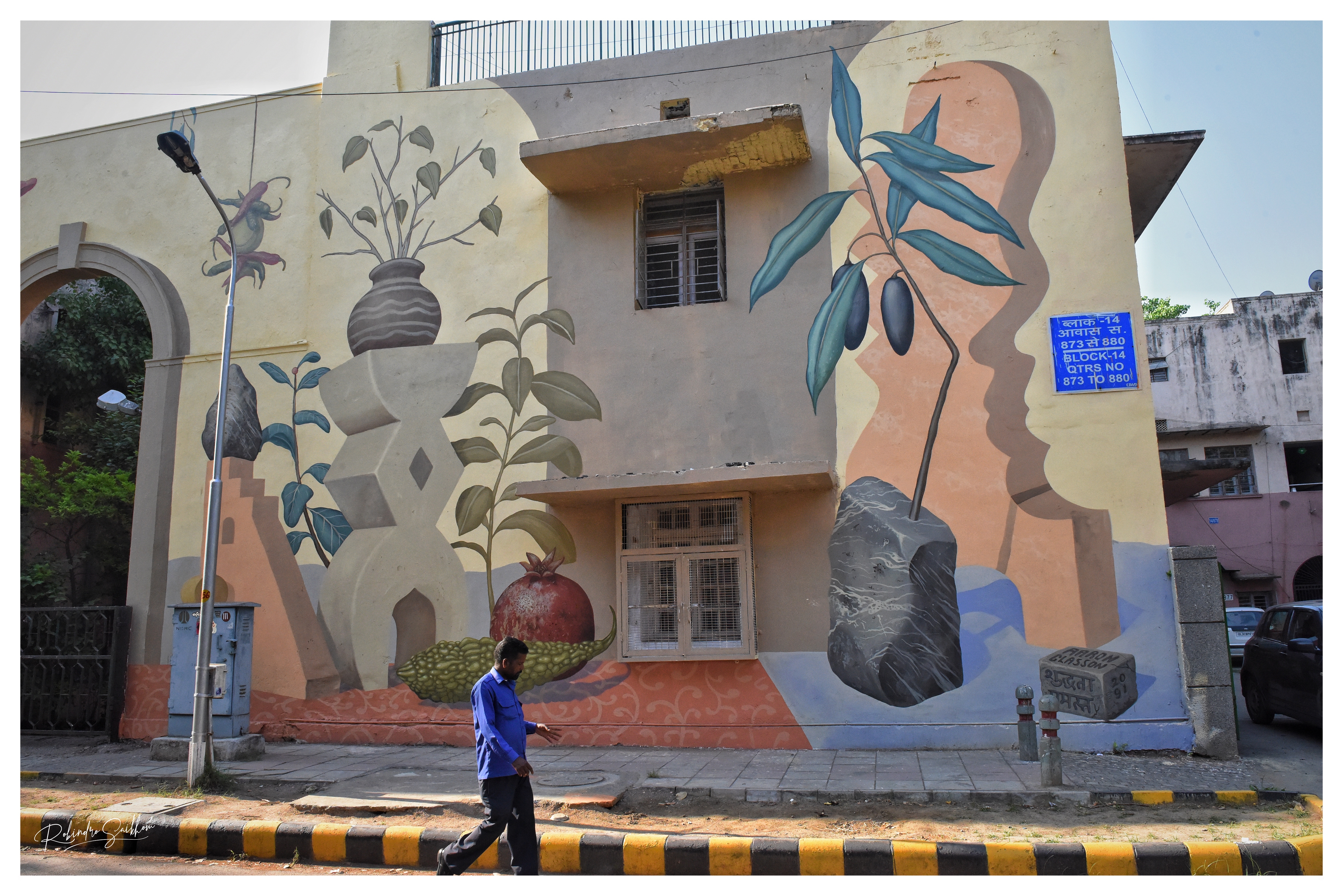
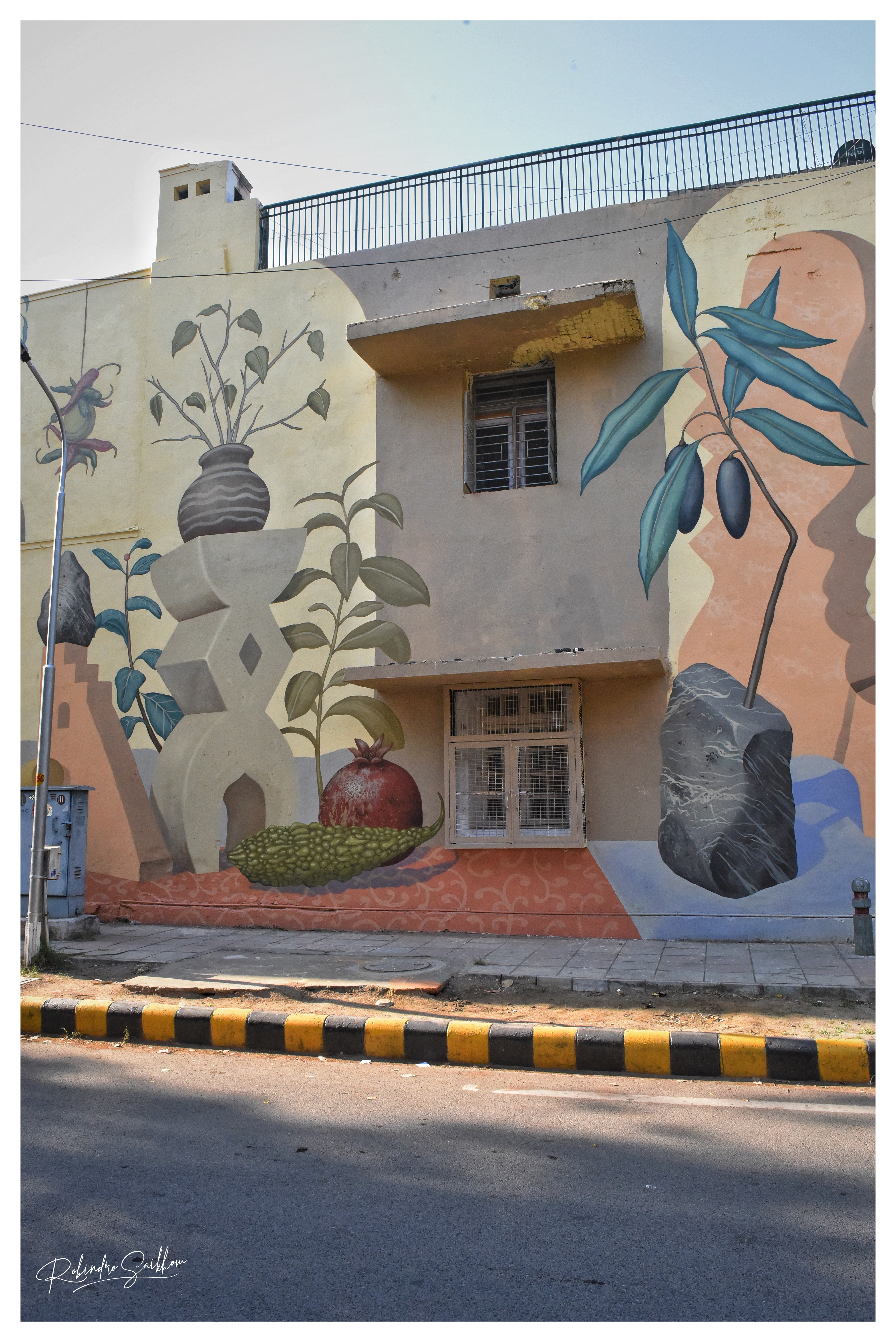
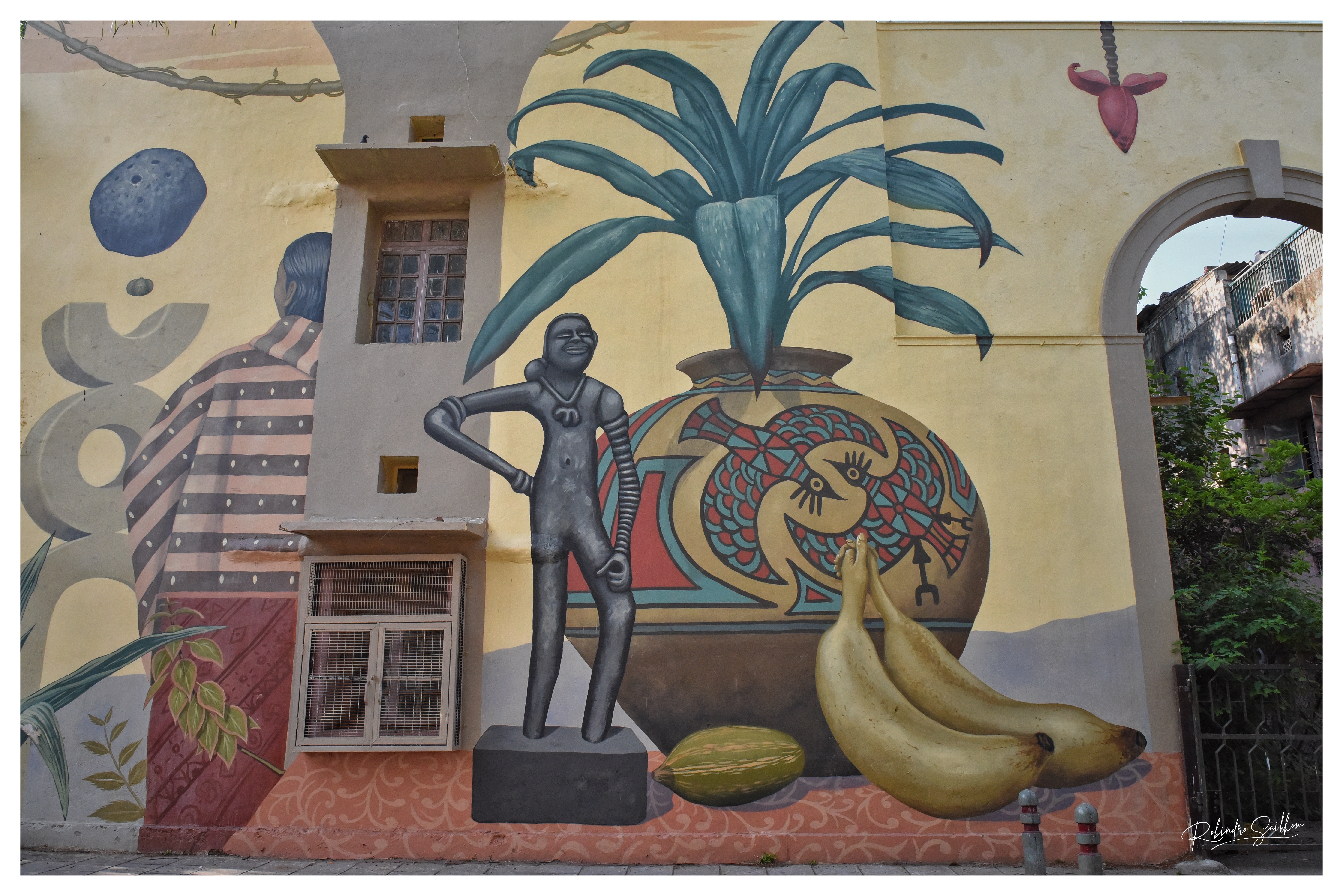
@yohnagao || ‘The Light Fort’
Inspired by the unity in diversity Yoh Nagao experienced throughout his time in India, he decided to depict this thought as a wish in his mural for the Lodi Art District.
The mural is a wish for the community to stay together, and build on this openness and acceptance as long as possible. Yoh used patterns from Japan and India to create a piece that presents a mashup of cultural symbols from both nations.
He used the Arabesque Pattern which has traditionally been a part of the Islamic and Japanese traditions, and represents eternity. Spikes depicted in the artwork are a symbol for protection amongst the Ainu people in the Northern part of Japan whom Yoh also draws his ancestry from.
To build on the Indian context, he used the image of a hand holding a flower which represents the idea of welcoming a guest, and being open and inclusive. As Indians it is part of our tradition to be gracious hosts. We have a proverb stating ‘Athithi devo bhava’, which translates to ‘The guest is God’, and the symbol of a hand holding a flower builds on that idea. This image is also used extensively as a sticker in public transport such as Auto rickshaws and buses.
Therefore, the mural becomes a representation of diversity that welcomes people visiting Lodhi Colony.
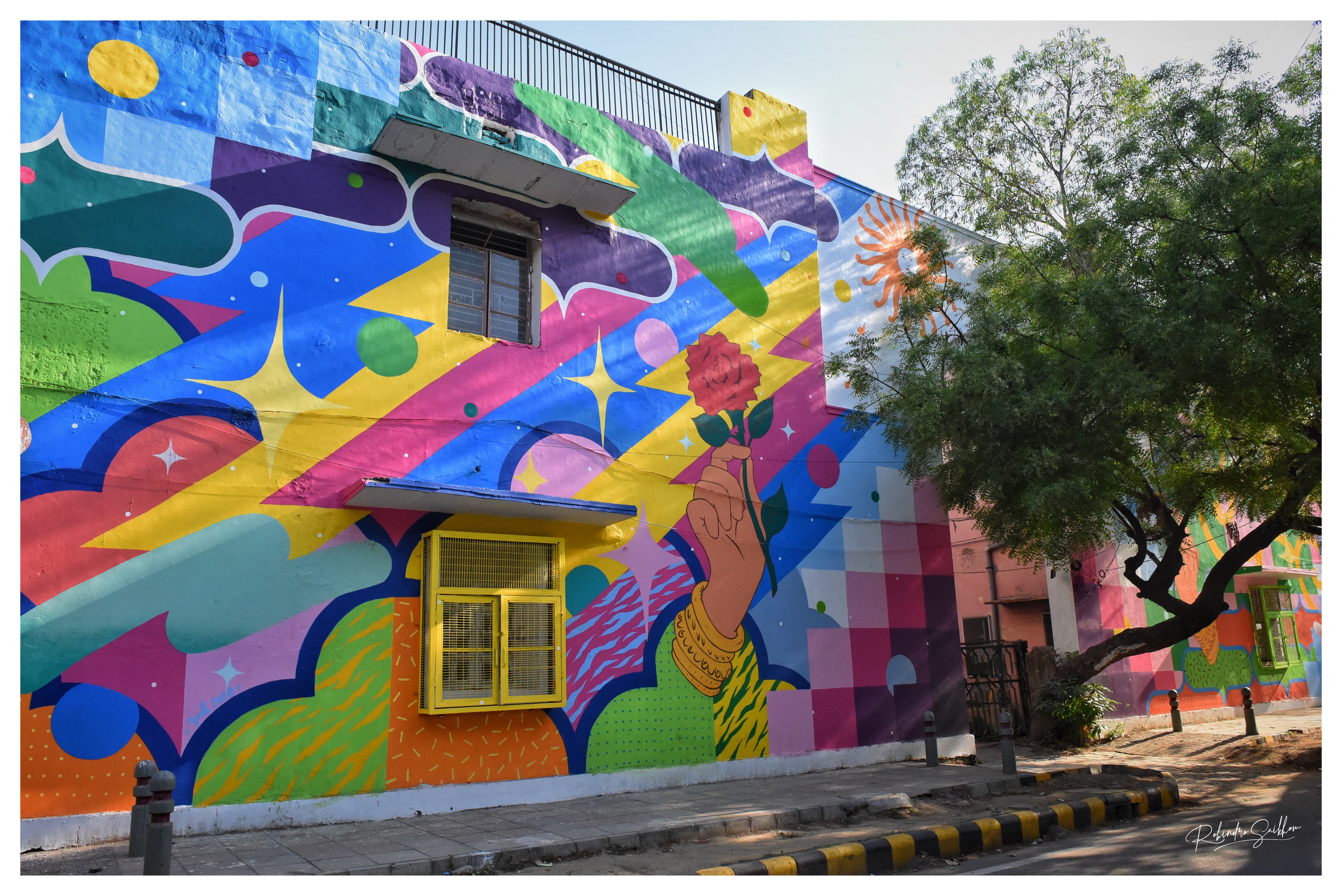
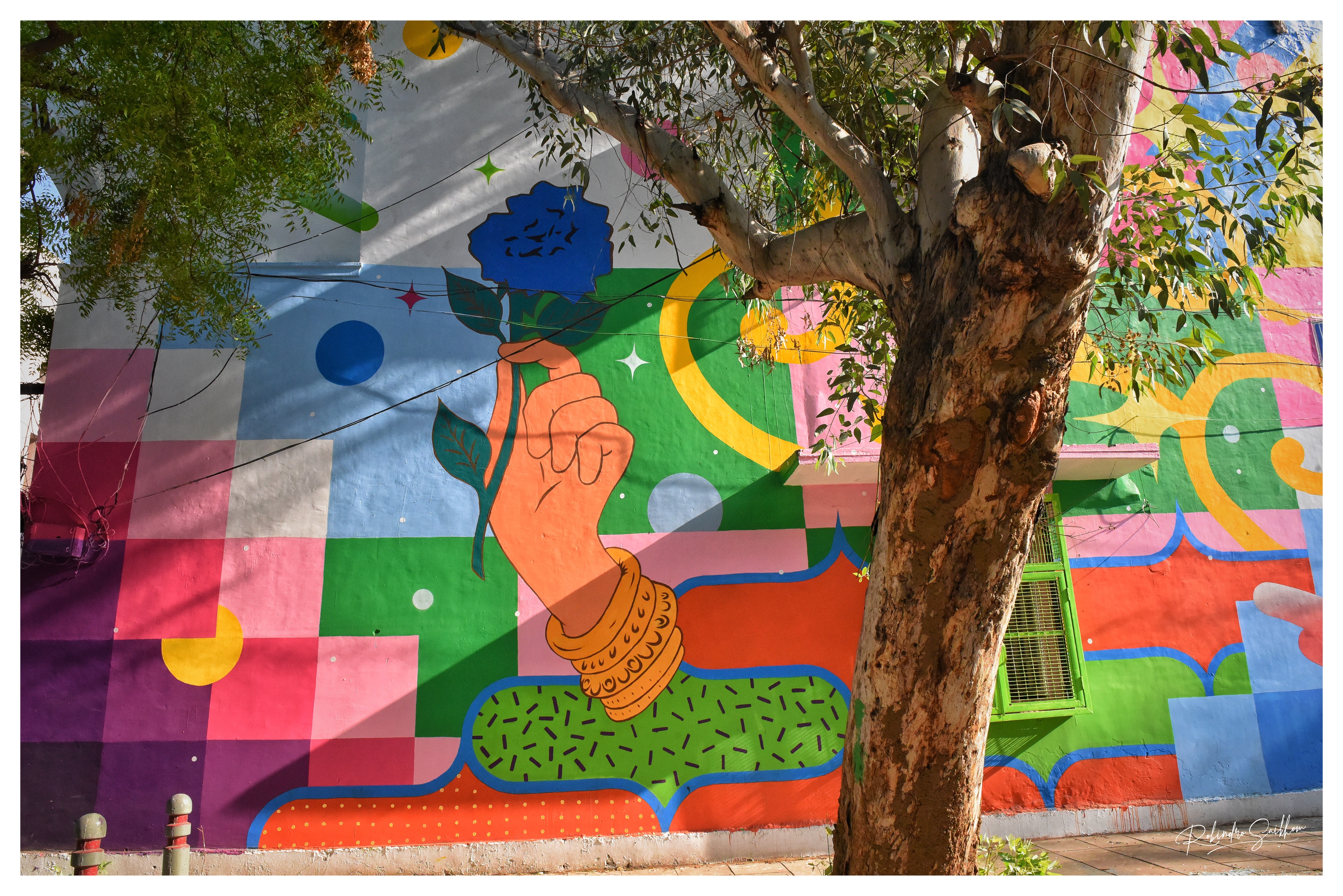
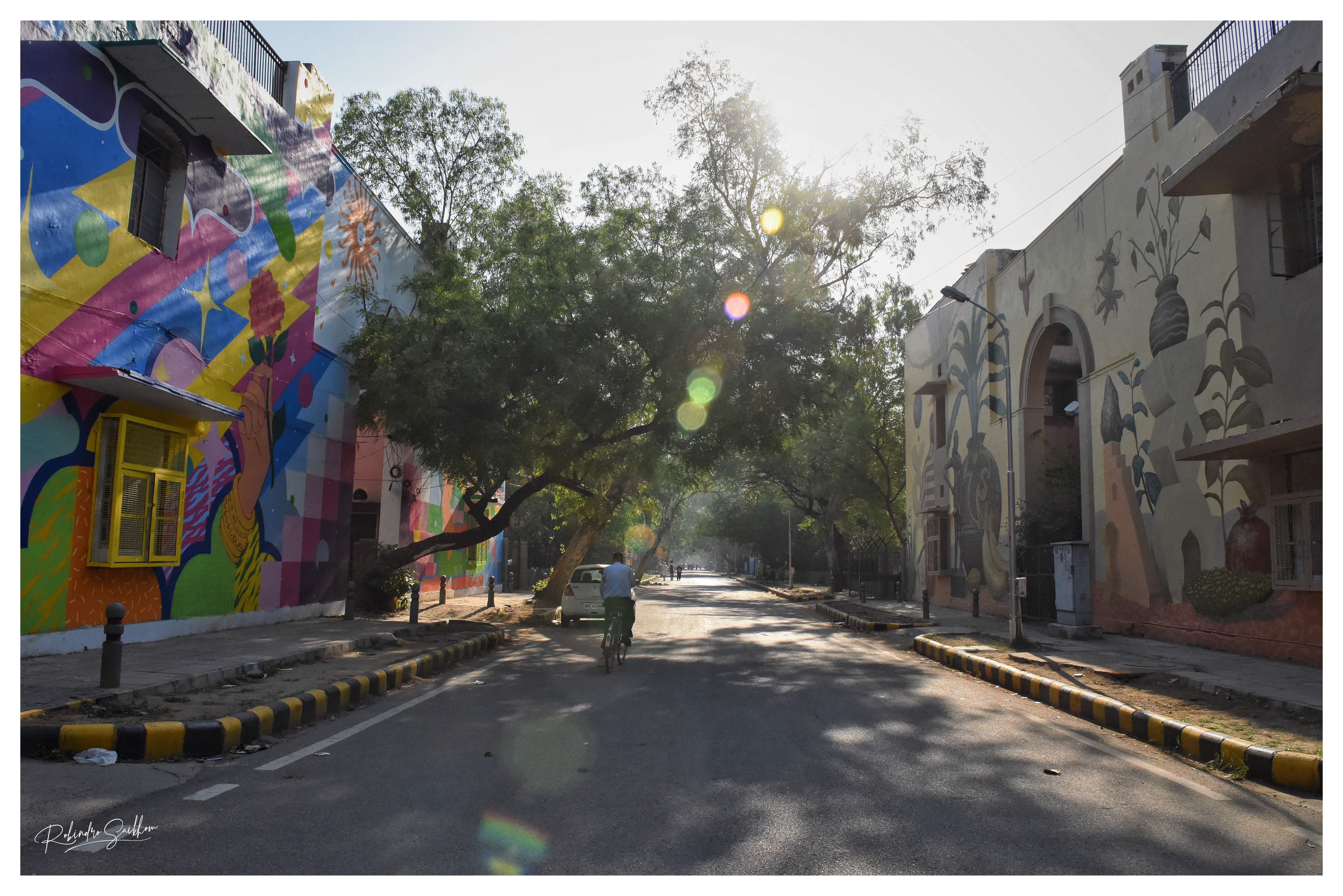
@sam_kulavoor || ’Social Media Friendly Plants’
Mumbai based artist Sameer Kulavoor is a multifaceted, and is as comfortable working on the streets as he is in the gallery. For Lodhi Art District, he produced a work which is part of his ongoing series of looking at life in the digital age. Here’s what he had to say about his work with us. “Algorithms are a process or set of rules to be followed in calculations or other problem-solving operations, especially by a computer. In the 21st century, algorithms are the basis of social media and its influence can be seen on the way we live at a micro and macro level. They seem to have control over the human psyche – how we feel, what we think, what we eat, where we live, how we live, who we make love with, how our surroundings look like. Algorithms are said to have allegedly influenced international politics and the rise of right-wing thinking. Trollers and influencers are legit professions.” This thought by artist Sameer Kulavoor, is what stands behind the intricate composition.
Over the past two weeks, Sameer worked with a dedicated team of volunteers from St+art, painting his enigmatic figures that transcended dimensions and gravity, taking selfies mid-air and critique our digital lives where plants, as Sam observes, help you get a bunch of likes on your selfies.
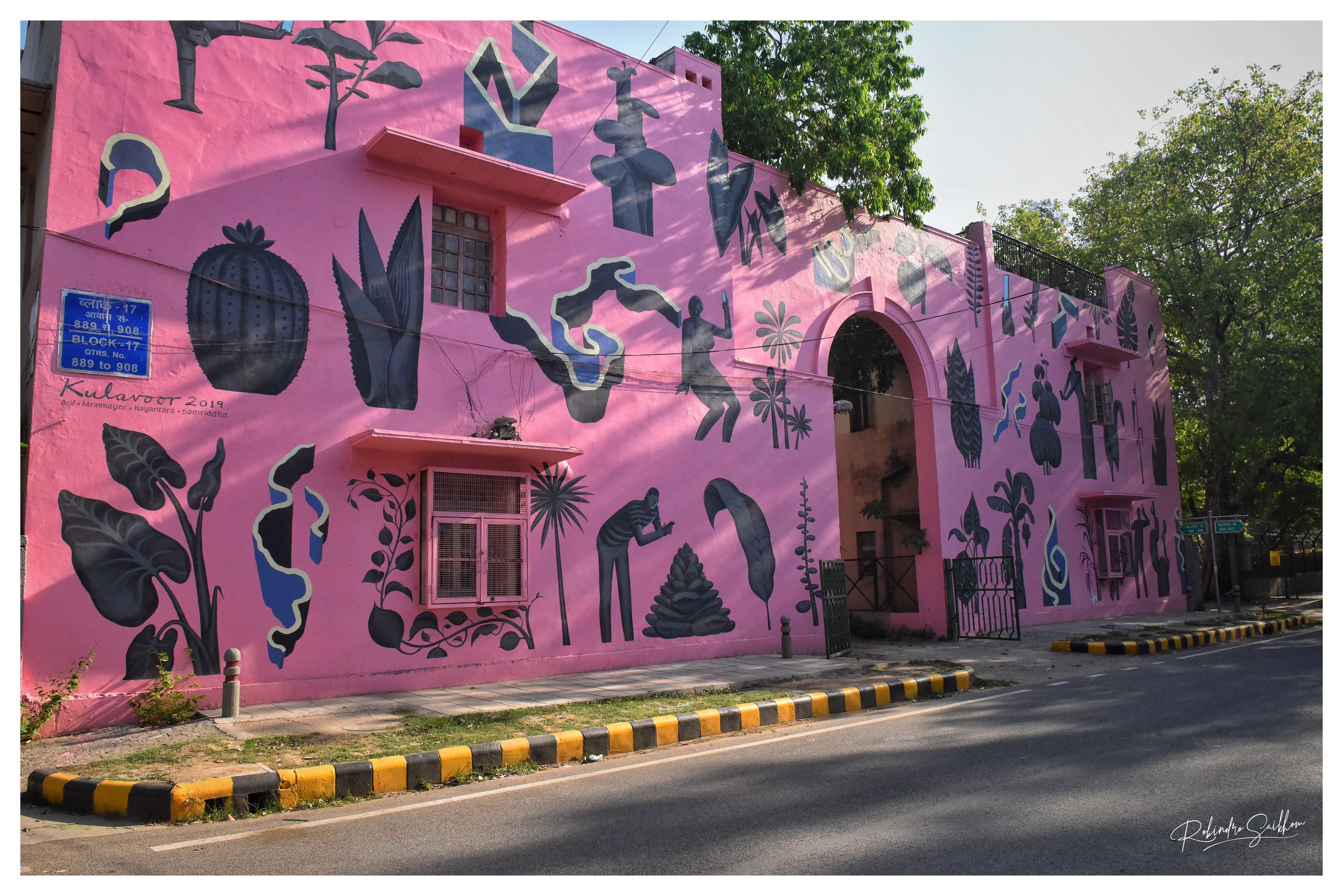
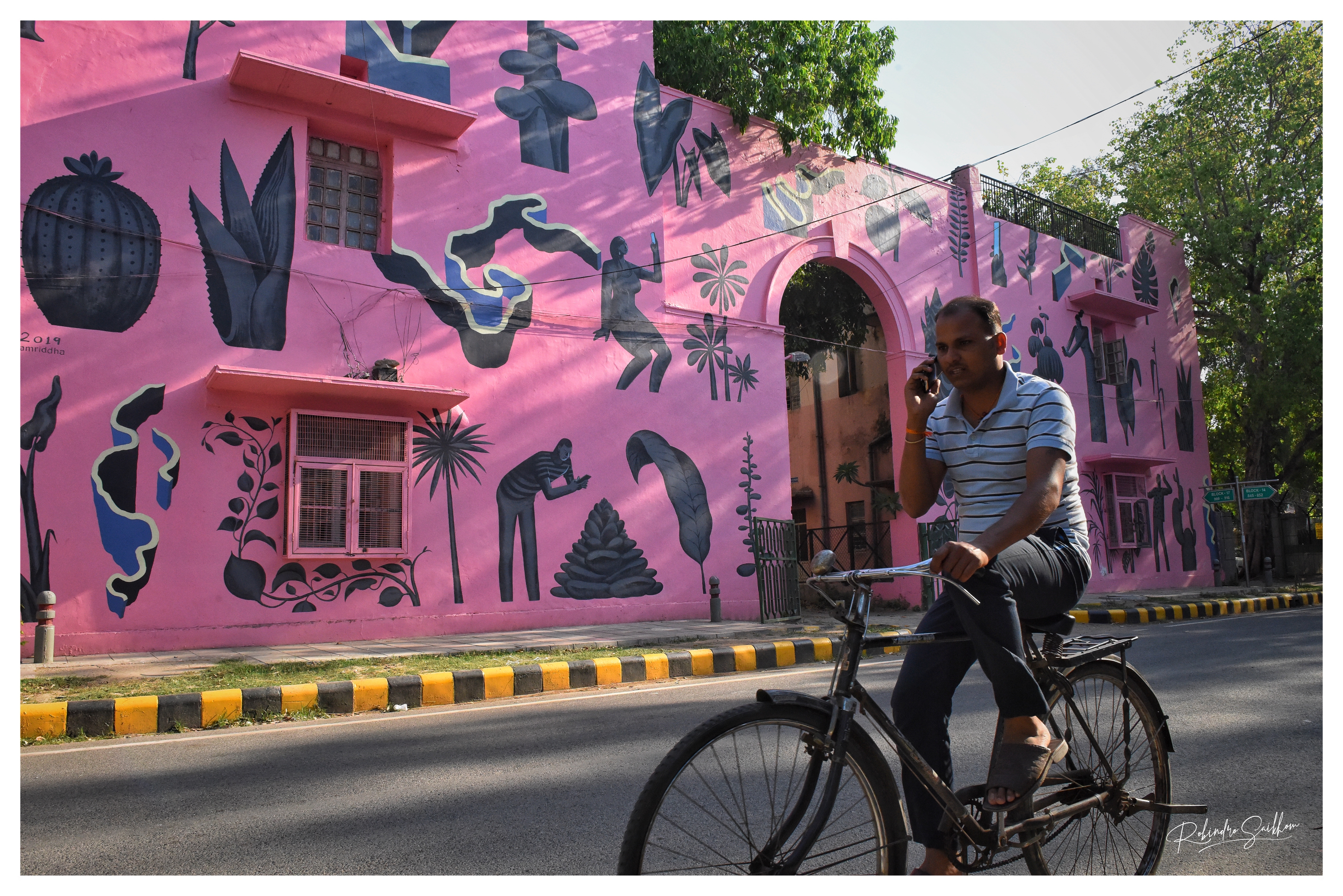
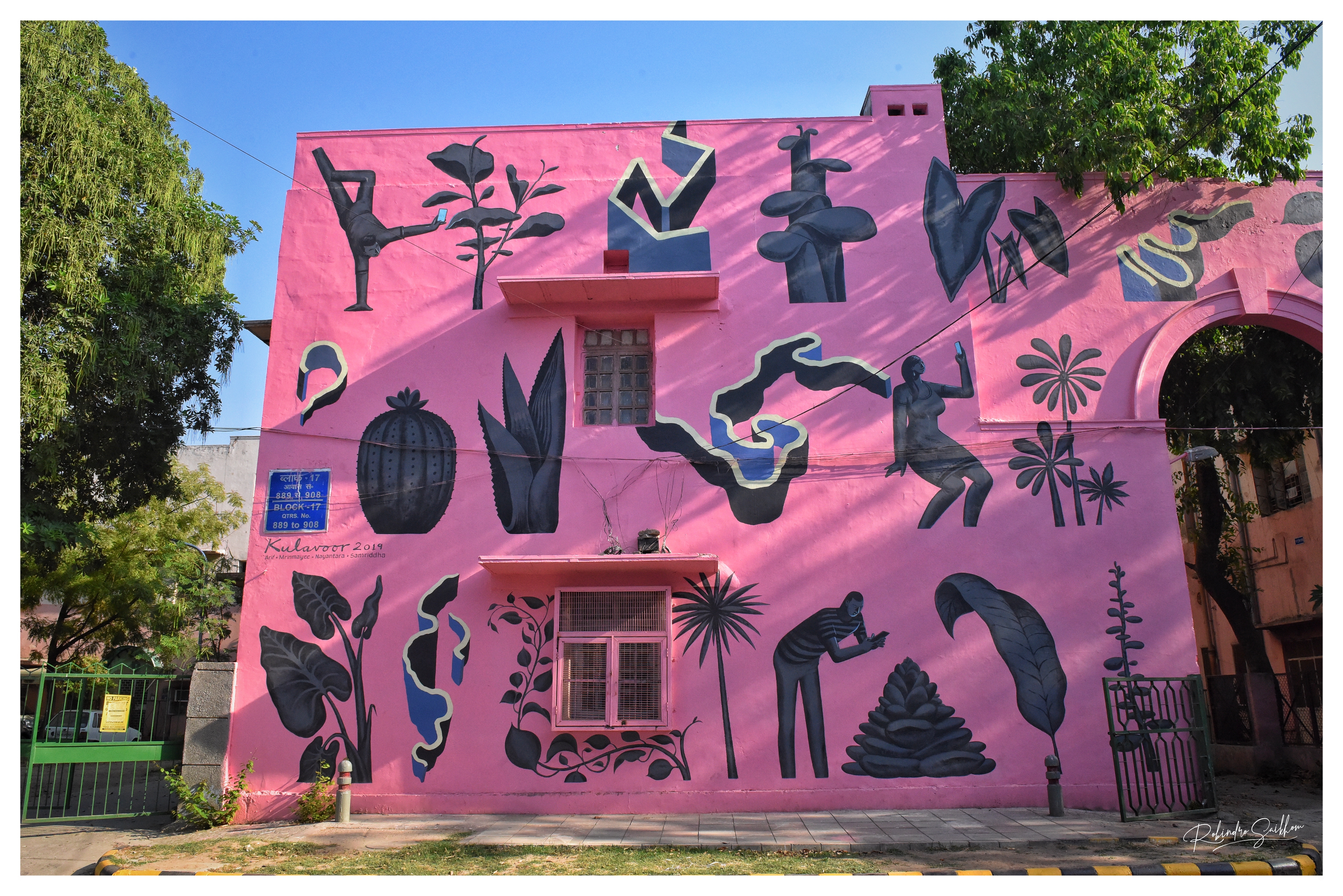
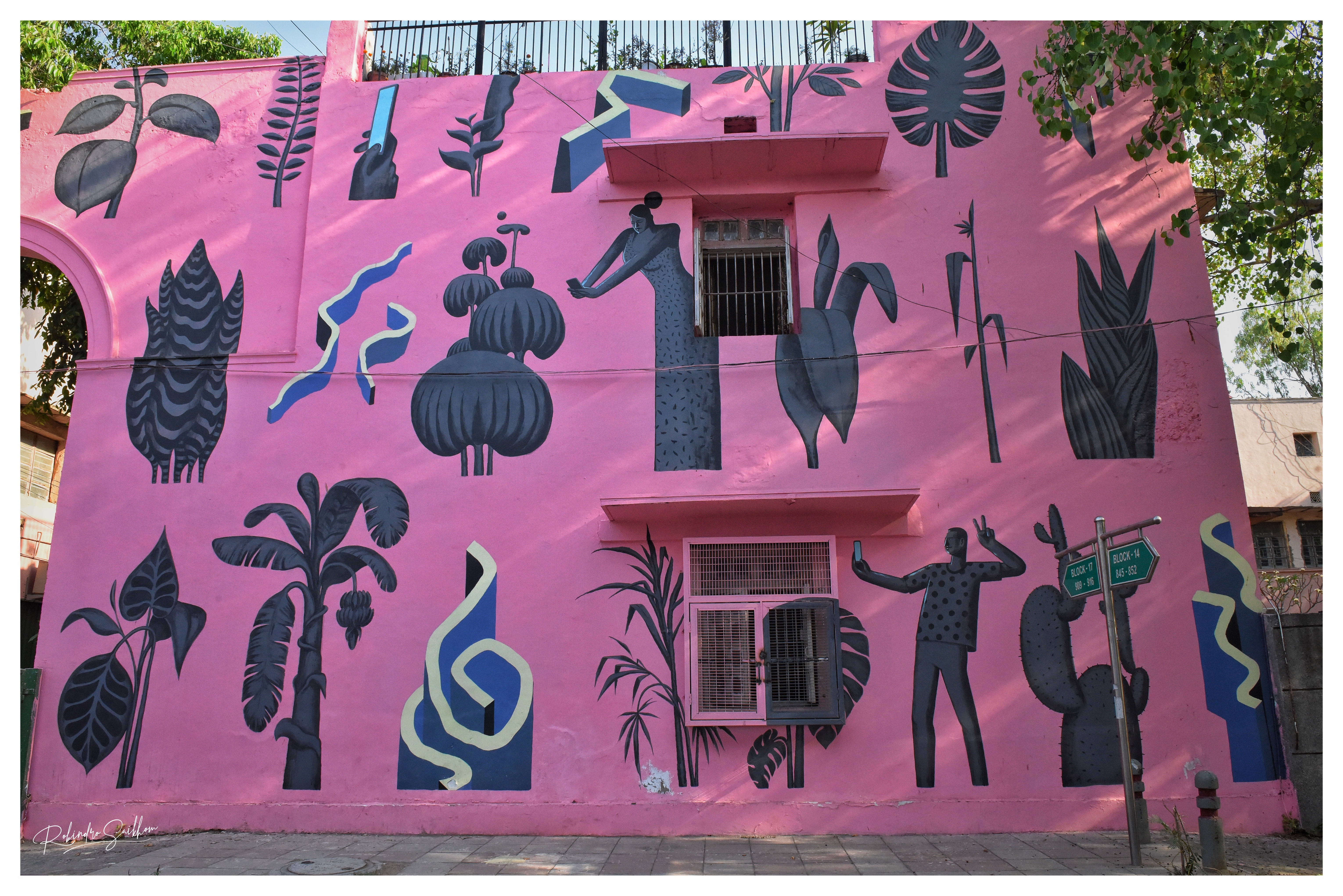
@andreco_ || ‘Climate 05 – Reclaiming Air and Water quality’
Italian scientist-artist Andreco’s mural is a one-of-a-kind example of environmental activism through street.
From its design, to the ink used, to the graphs drawn on the wall, Andreco’s mural is a warning on how climate change is taking pace and the huge risks it poses for the environment and all living species if we don’t drastically change our mindset and habits.
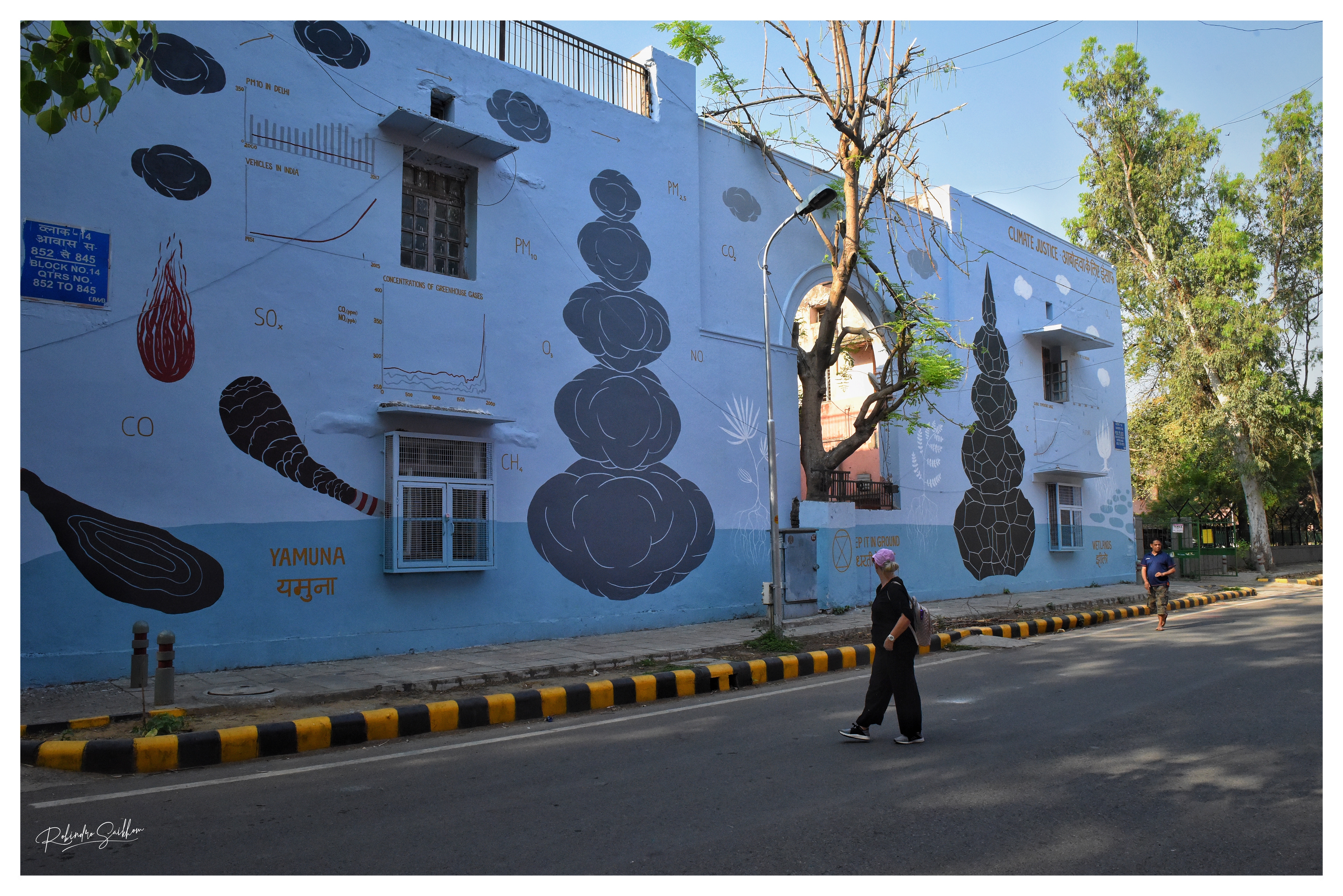
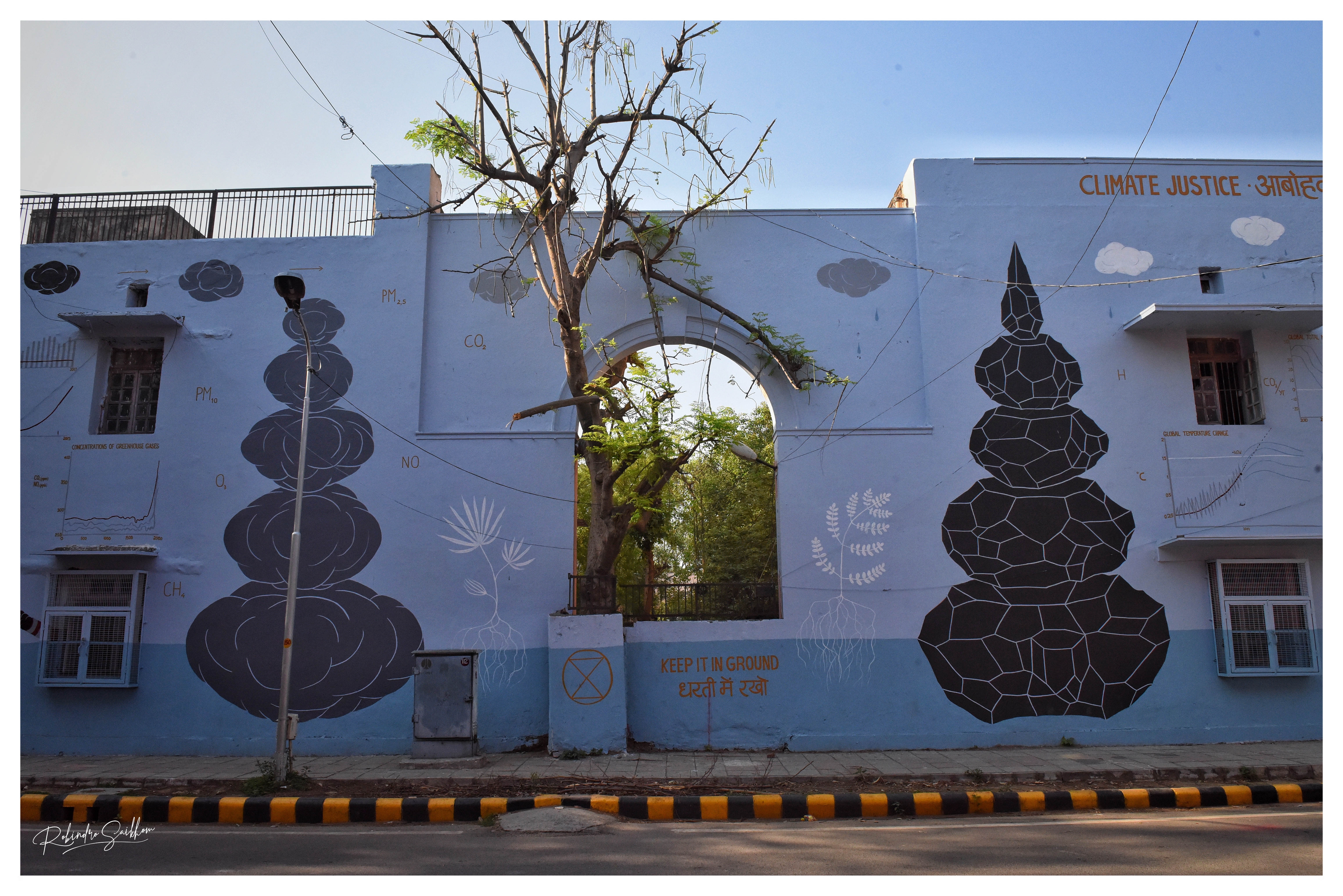
Majili Art Forum || ‘Gracious Heritage’
Majili Art Forum is a New Delhi based organisation which acts as a platform for promoting local artists and creative talents through exhibitions, talks and workshops. In the spirit of building new synergies through artistic collaborations, St+art invited the Majili Art Forum to experiment the large canvas of one of the walls in Lodhi Art District.
15 artists from the collective got together to bring to life their first large public art mural. Mindful of the pockets of greenery embedded within Lodhi Colony’s landscape and Delhi at large, the artists created an artwork utilising the trees in front of the wall to create a dream like image to speak about the city’s heritage that exists in the form of nature. Drawn delicately onto the walls, Asian elephants emerge as a symbol of endangered species creating a giant yet soft presence within the piece.
For the collective, these elephants are a larger metaphor of our natural heritage that is slowly fading away due to urbanisation and the increase in pollution levels. As a way to reminisce the lost richness of nature in our cities, the artists created this dream-like image emerging from the real trees that face the wall. Thus, to project the grey area between what is present and what is slowly becoming absent.
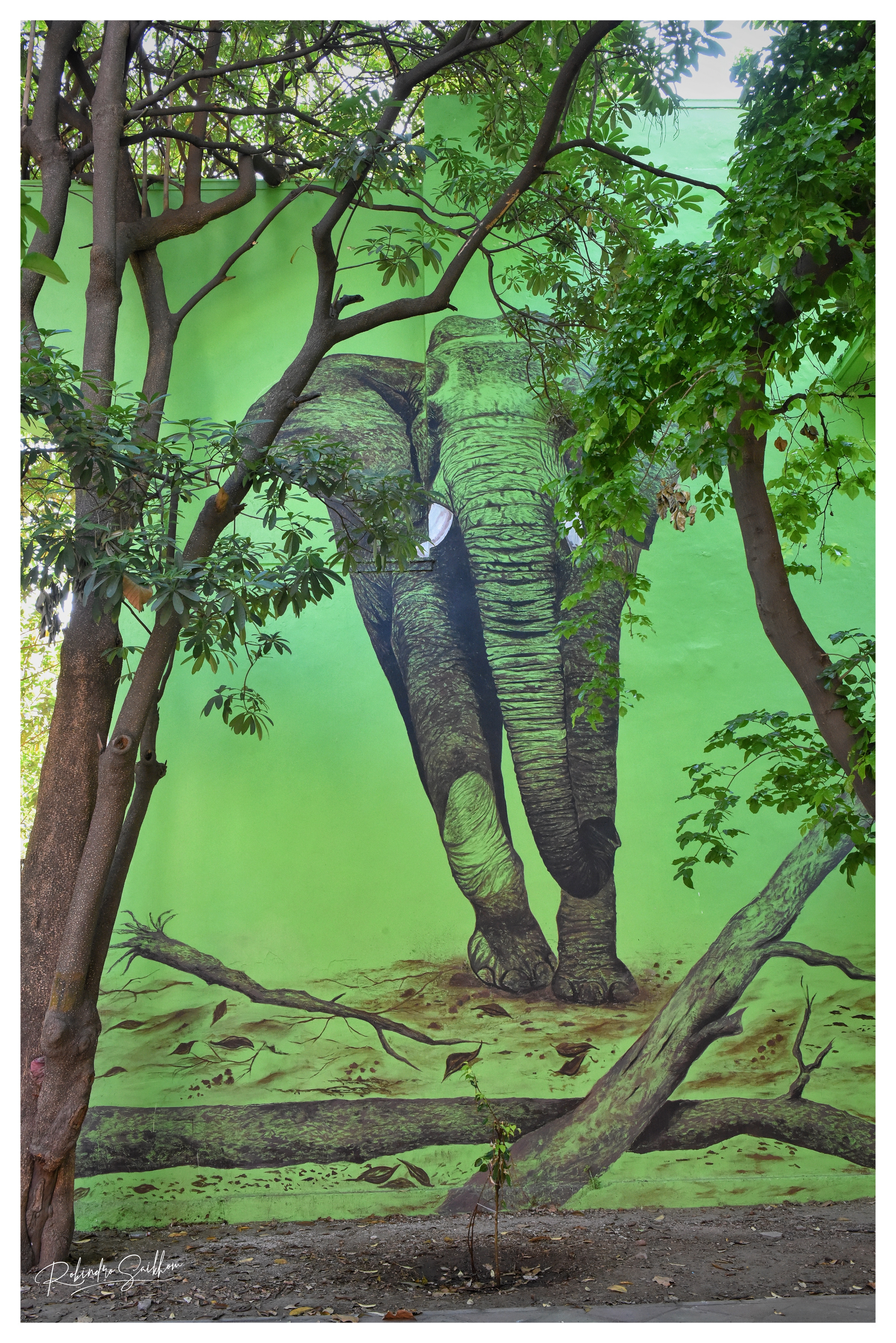
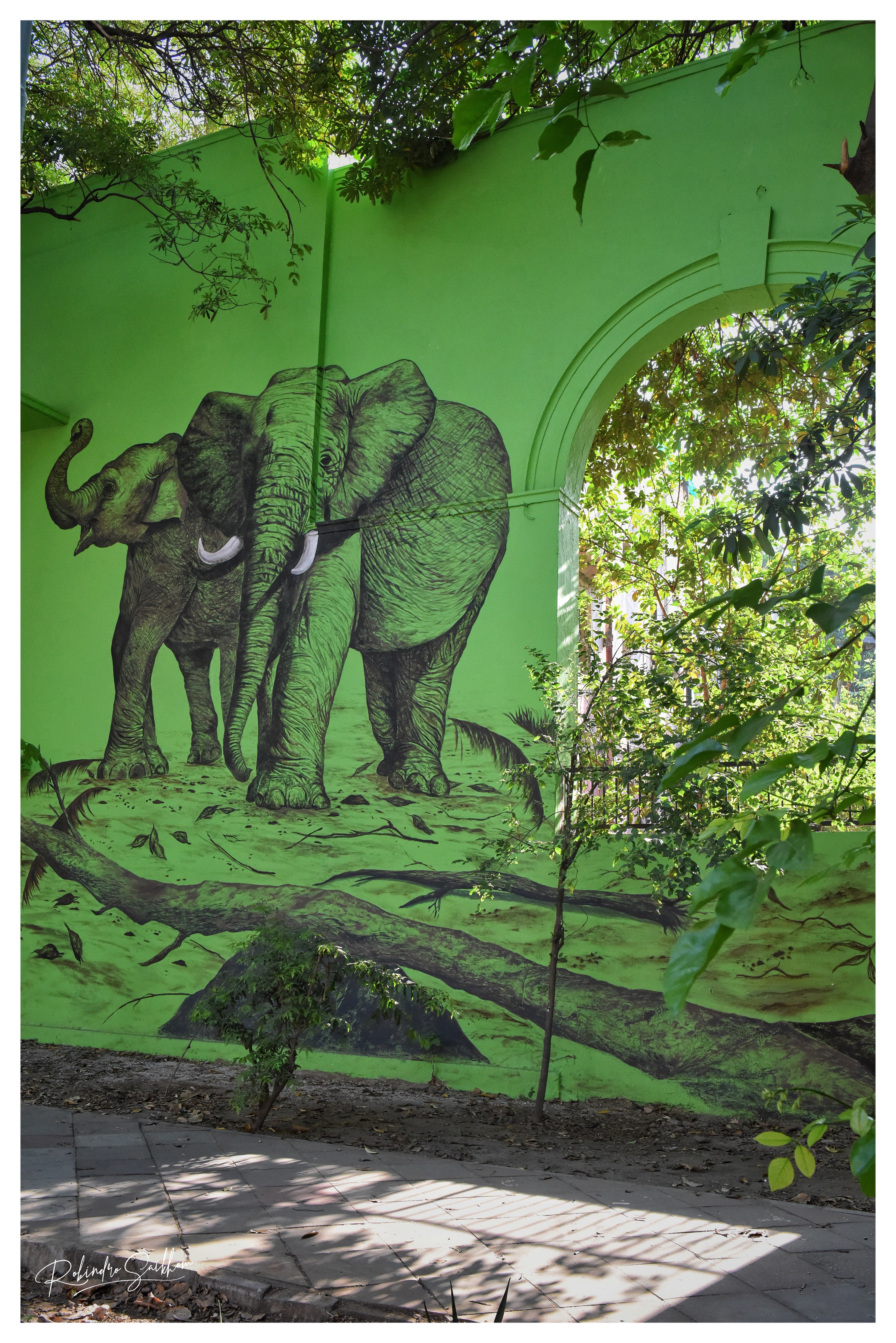
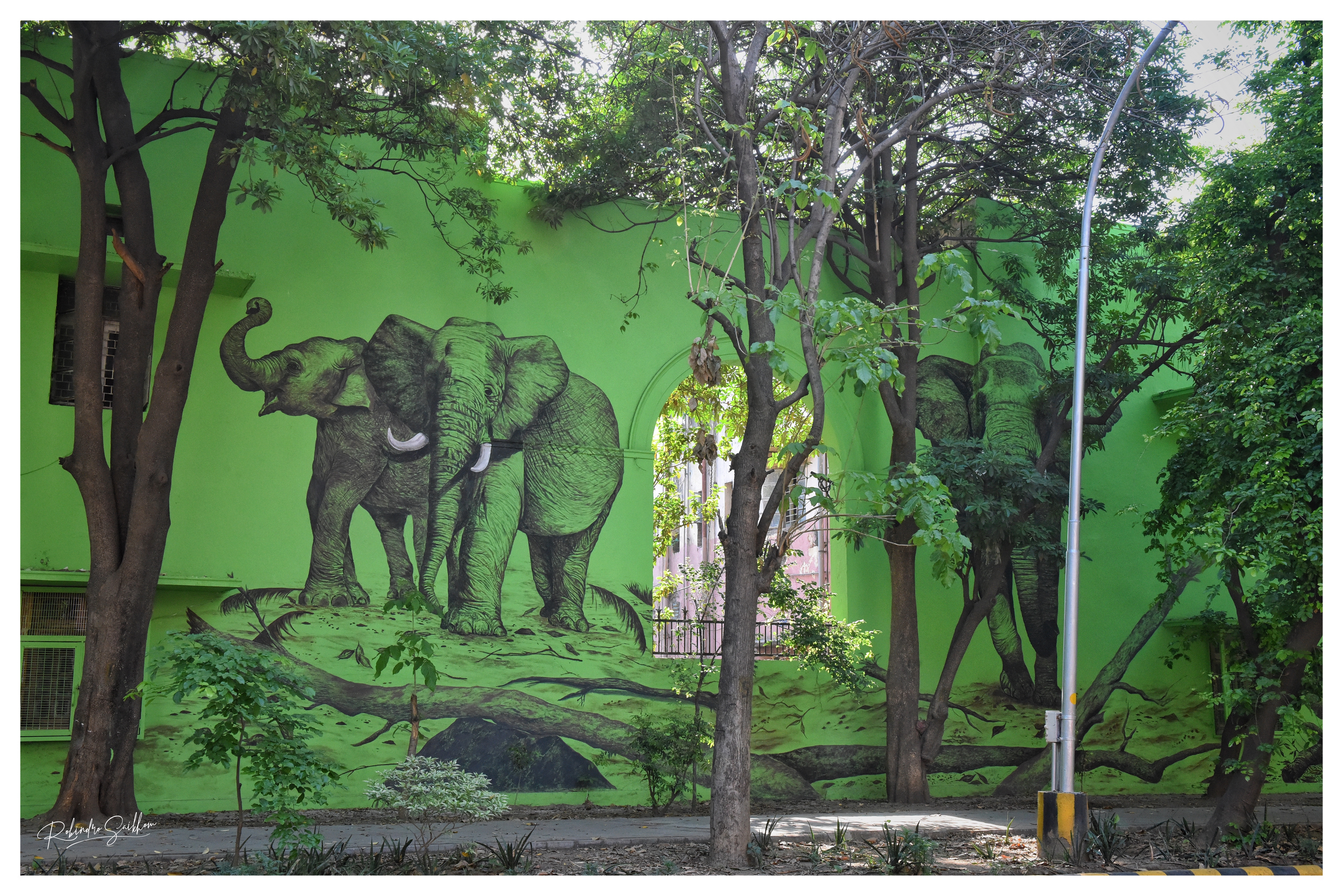
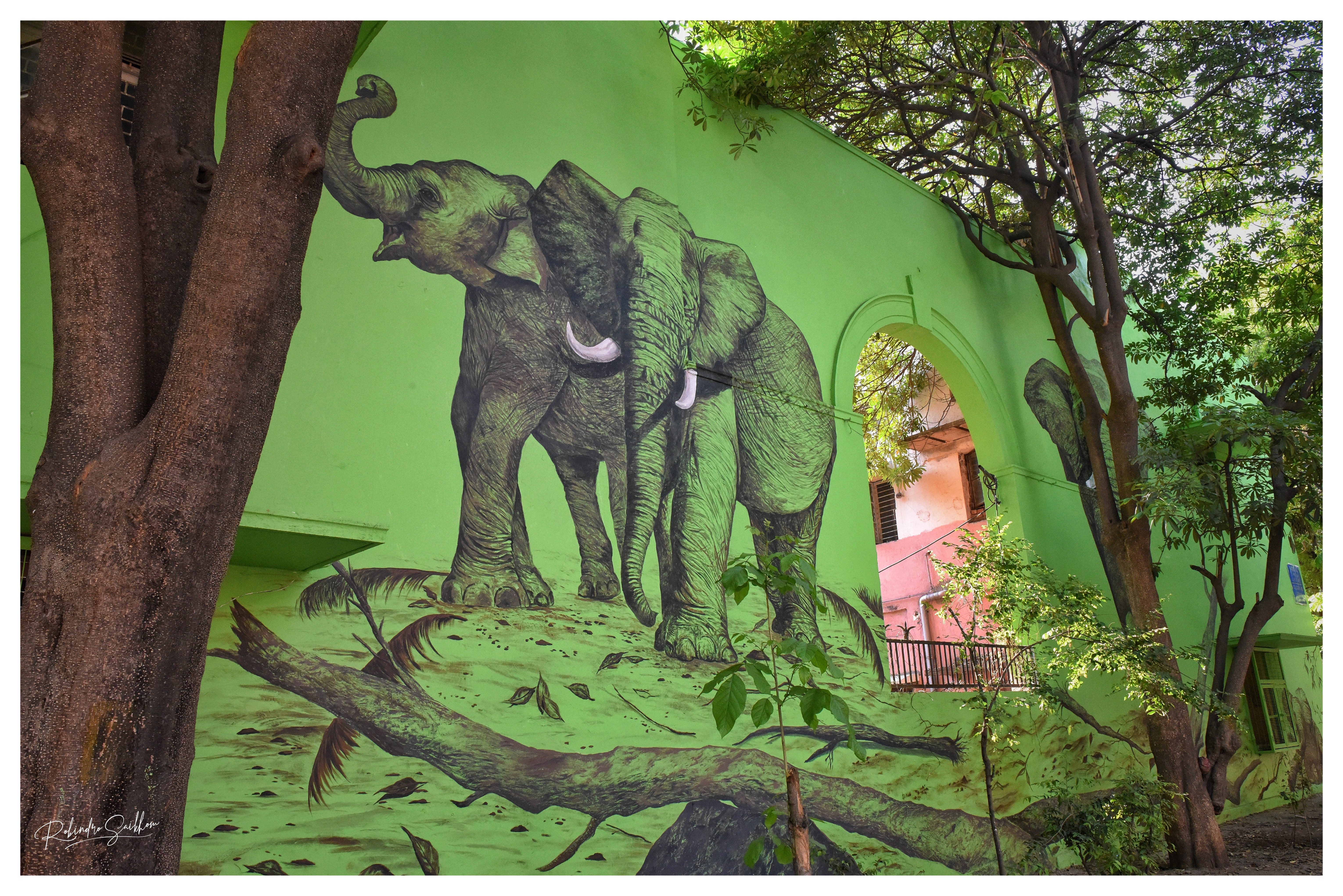
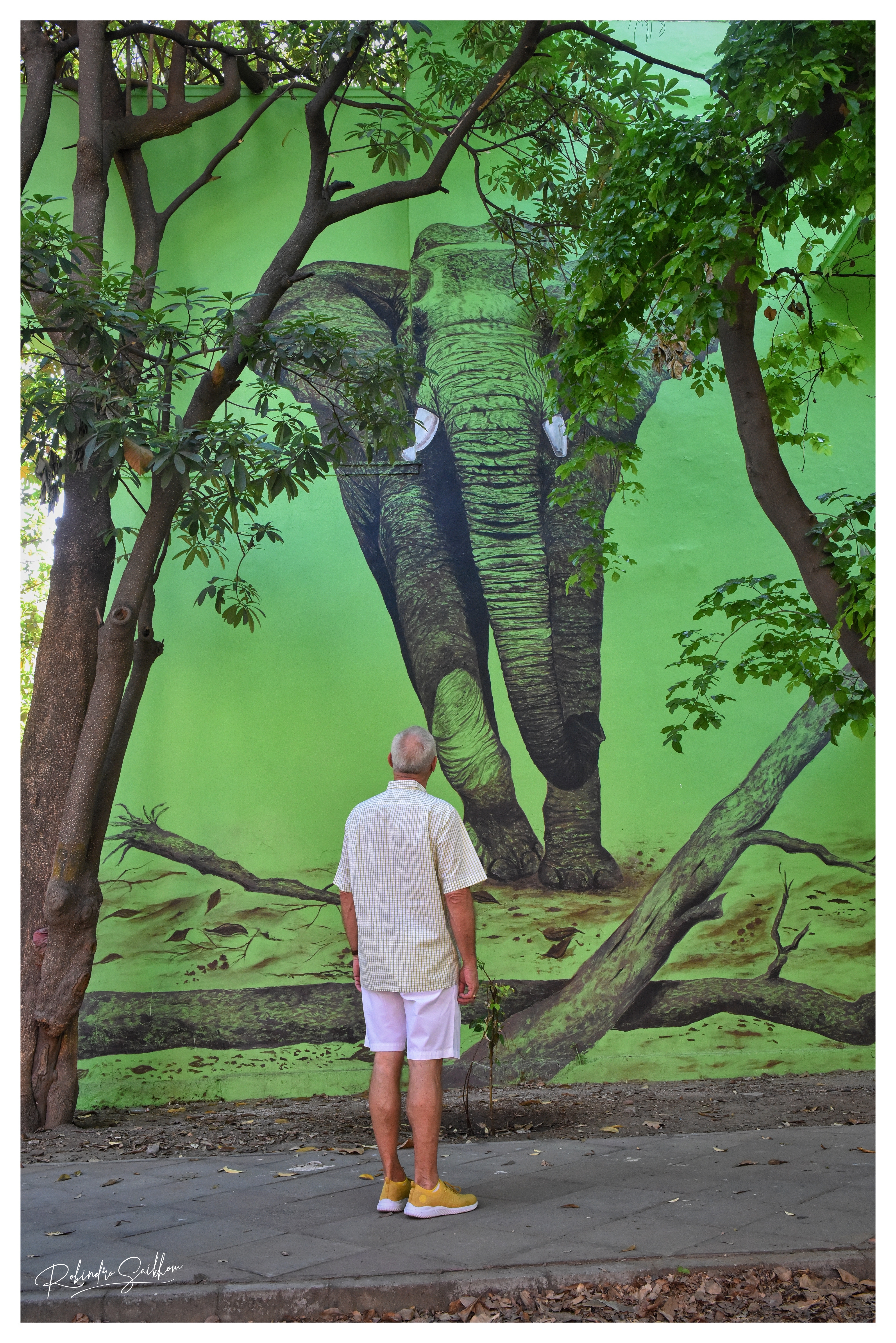
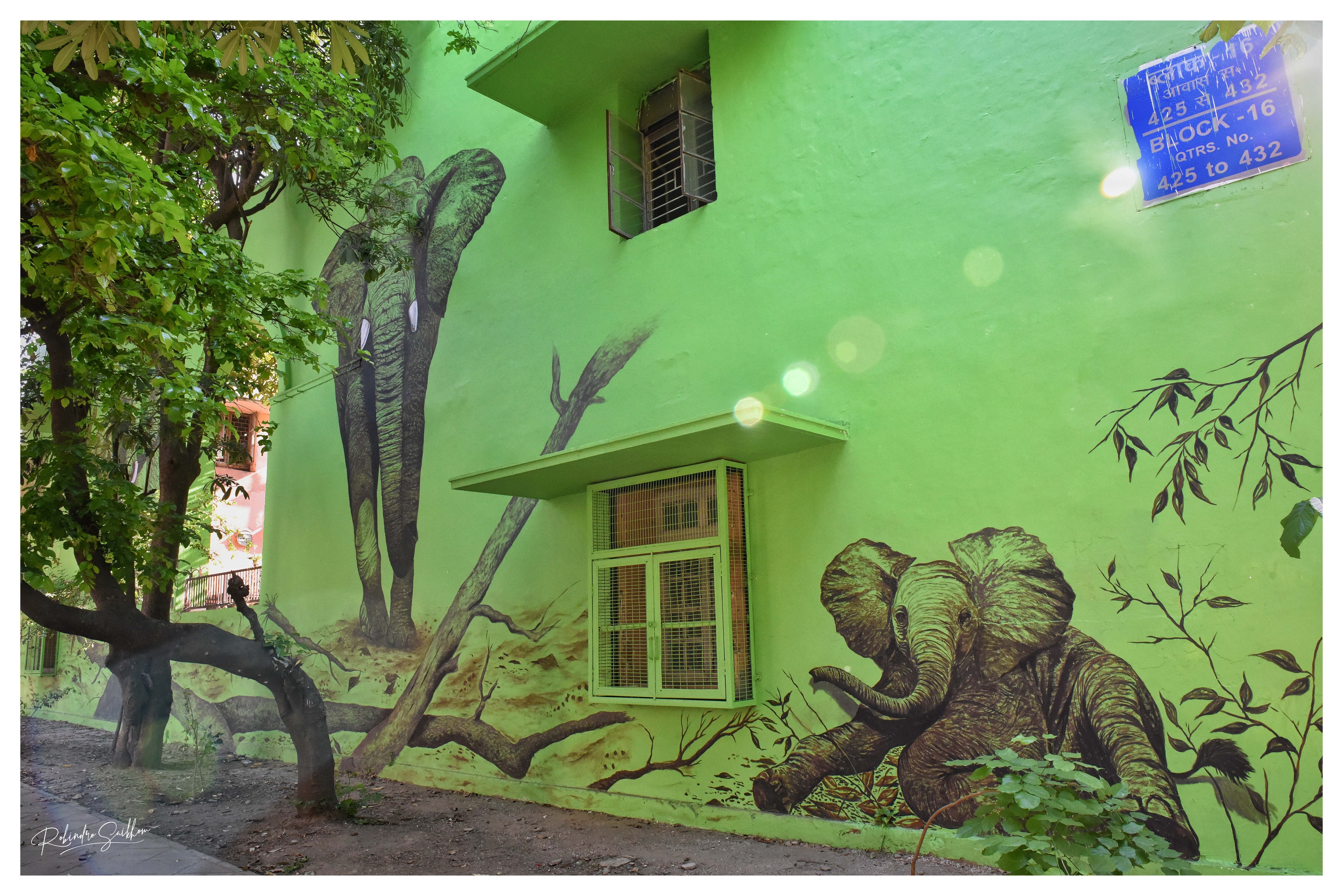
@skl0_ x @waywardclouds || ‘Cause & Effect’
The mural by Sam Lo at block 13 in Lodhi Art District tells the story of how a little sparrow’s actions are tied to another’s fate. As free as they may be, or think that they may be, they make their decisions with all the information they have on hand, while dealing with their shadow selves and their environment.
Hence the mural puts the viewers at the centre of its storytelling, for them to wonder about one’s freedom and relationship with all the others. Maybe you are that sparrow as well?
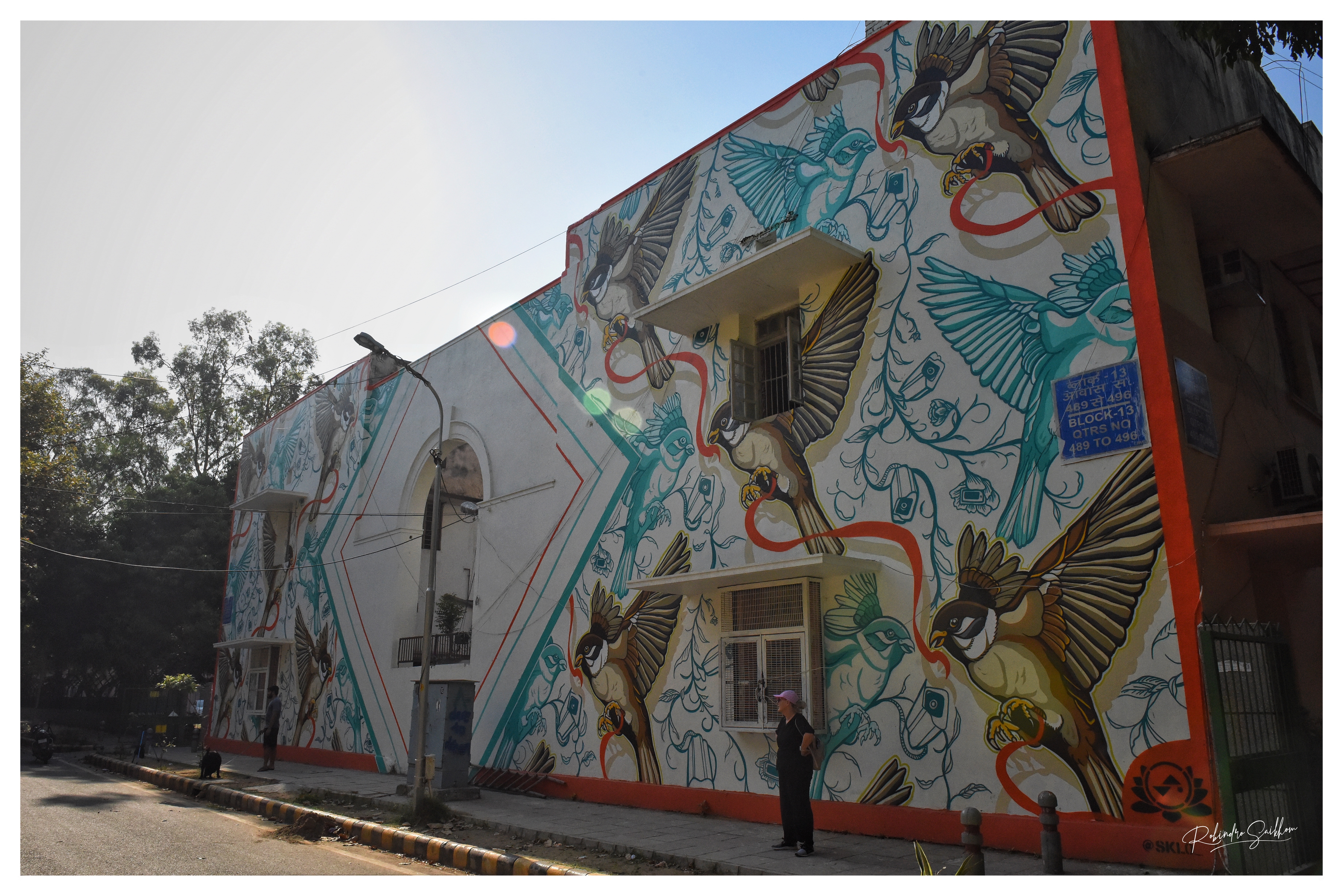
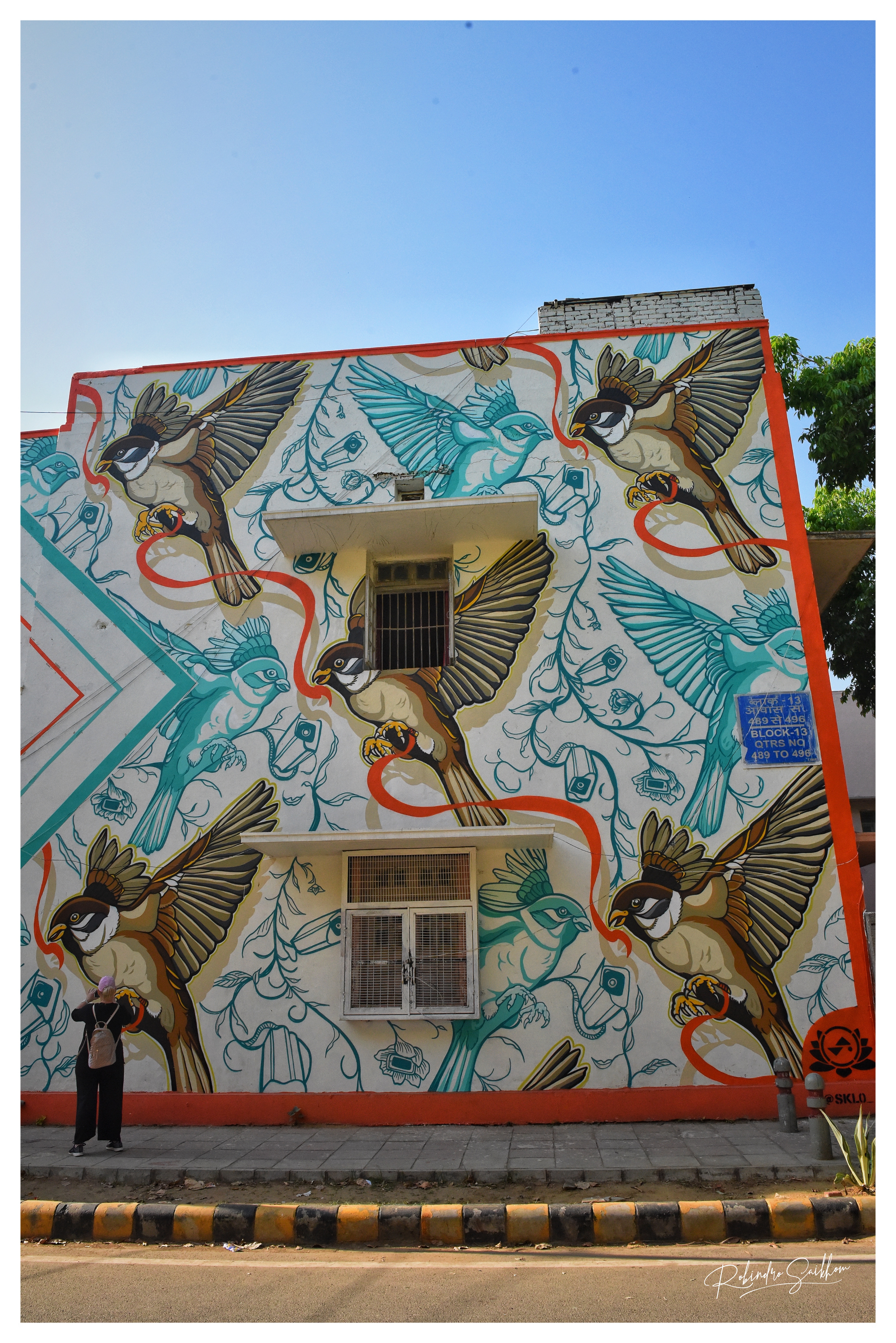
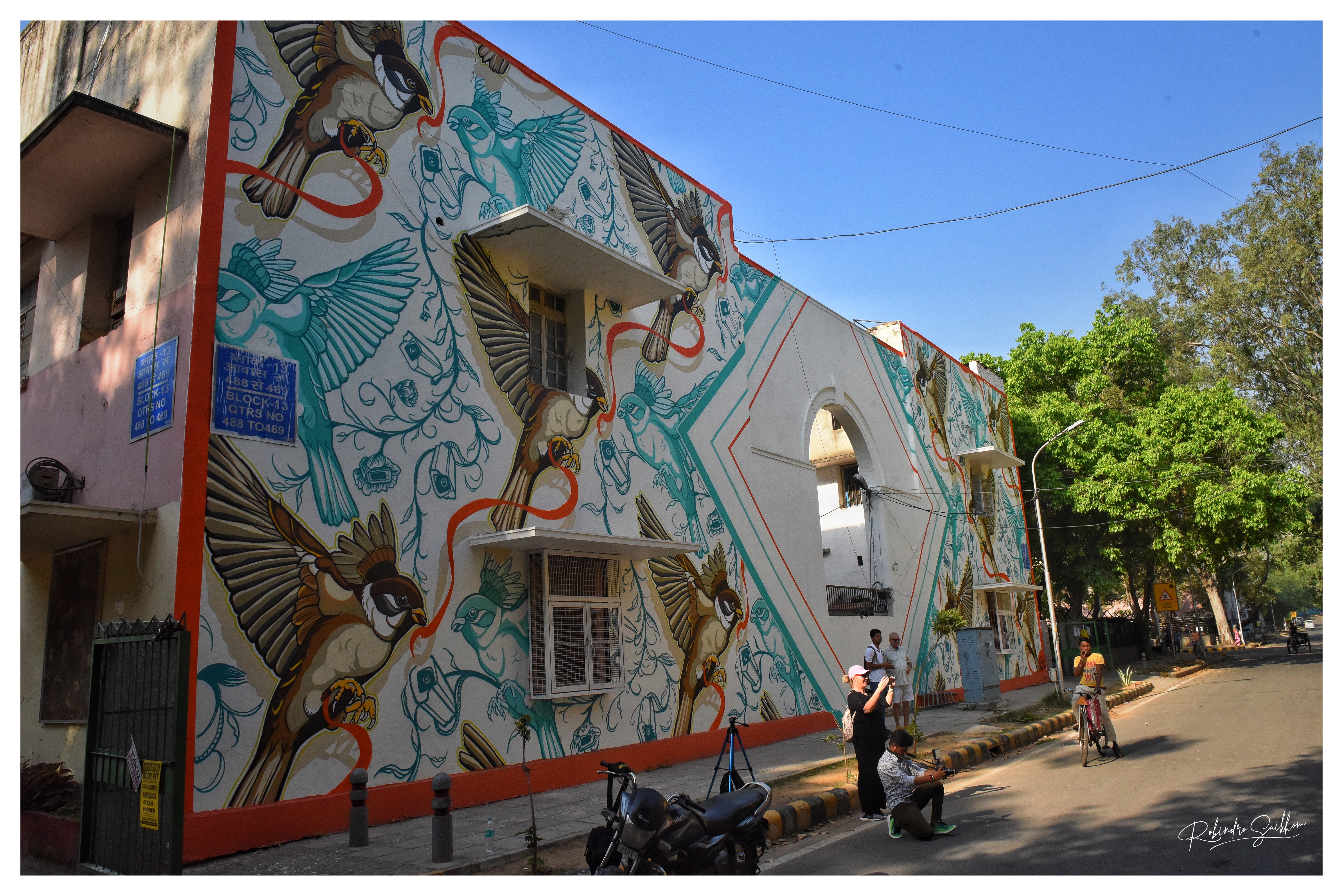
@_theyok & @_sheryo || ‘Letters for Lodhi’
Inspired by the visual cues of vintage Indian matchboxes, the Singaporean art duo brings a colourful mural that contains a series of cryptic messages embedded within.
Justice, Equality, Health and Fortune all form a clear indication of the core message behind the piece which are meant to be evocative of the Indian public service announcements in bus and train stations. There’s even a ‘call your mom’ on the wall as a reminder to, well, call your mom because your mother is very important and deserves to hear from you more often!
There is a central arch which the artists call the ‘Gupt Dwar’ meaning ‘secret passageway’ as they believe Lodhi to be a place rich in cultural treasures and generous people. The passageway is meant to lead you to good health and fortune and is guarded by two cats on the sides who protect you as you journey through it.
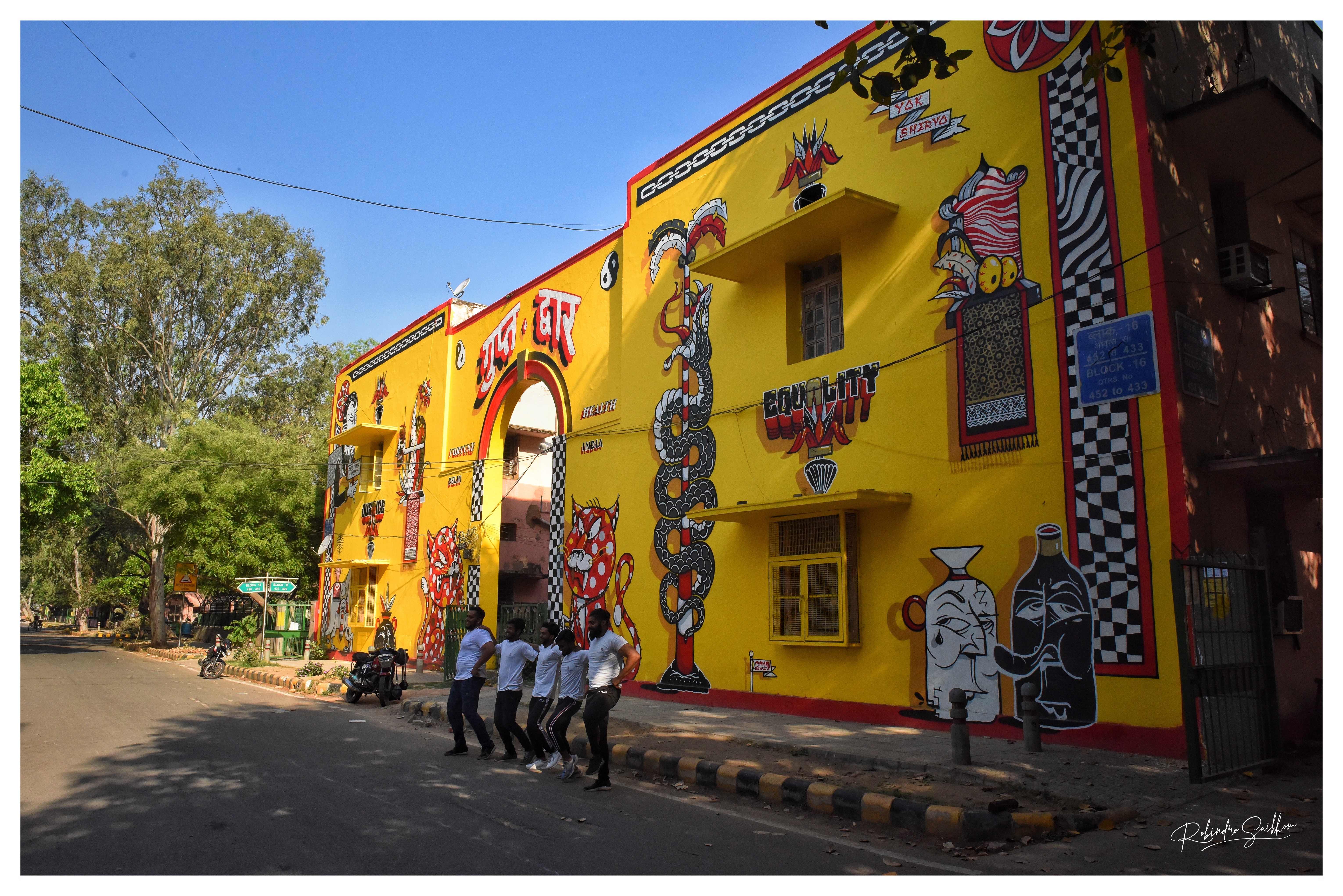
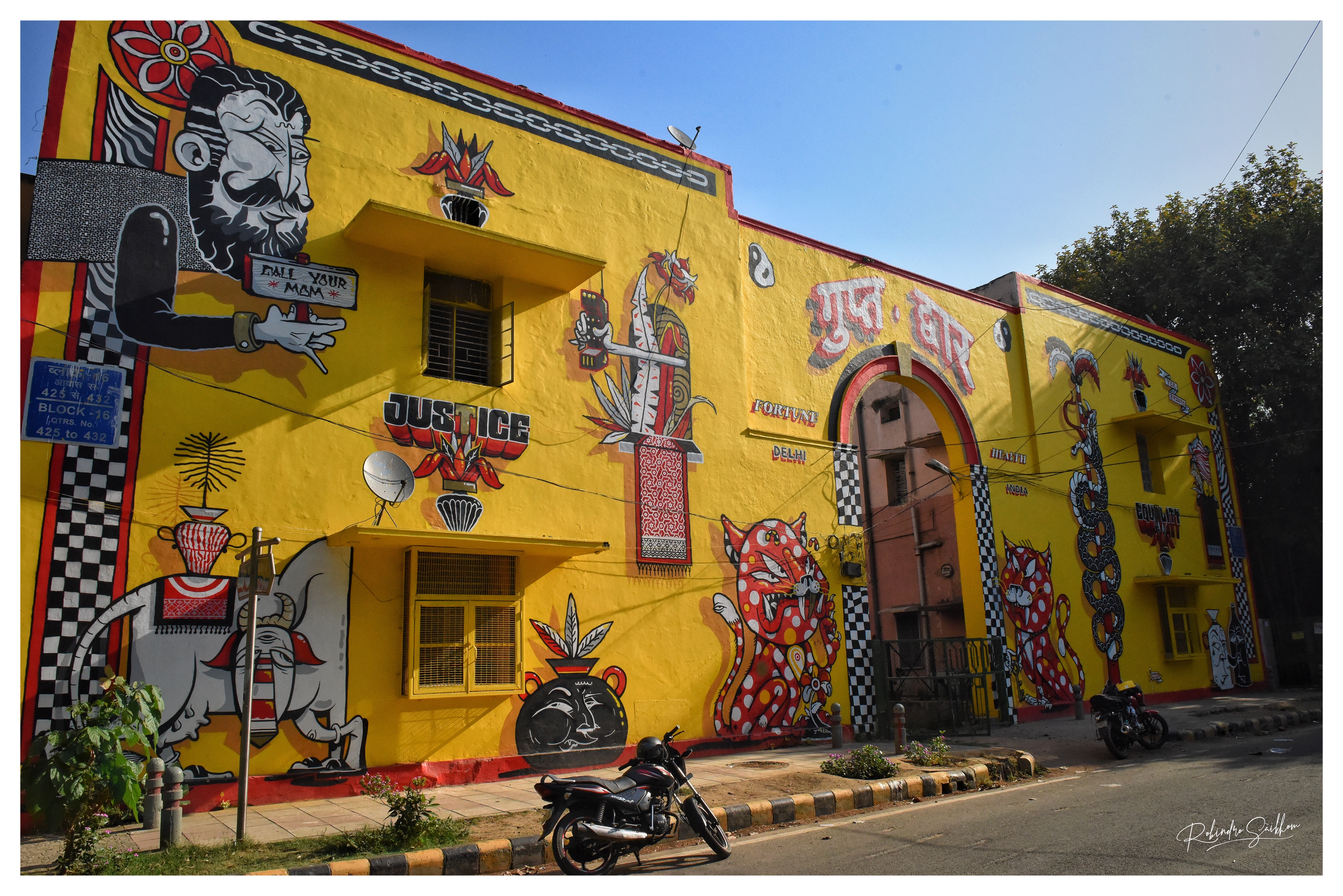
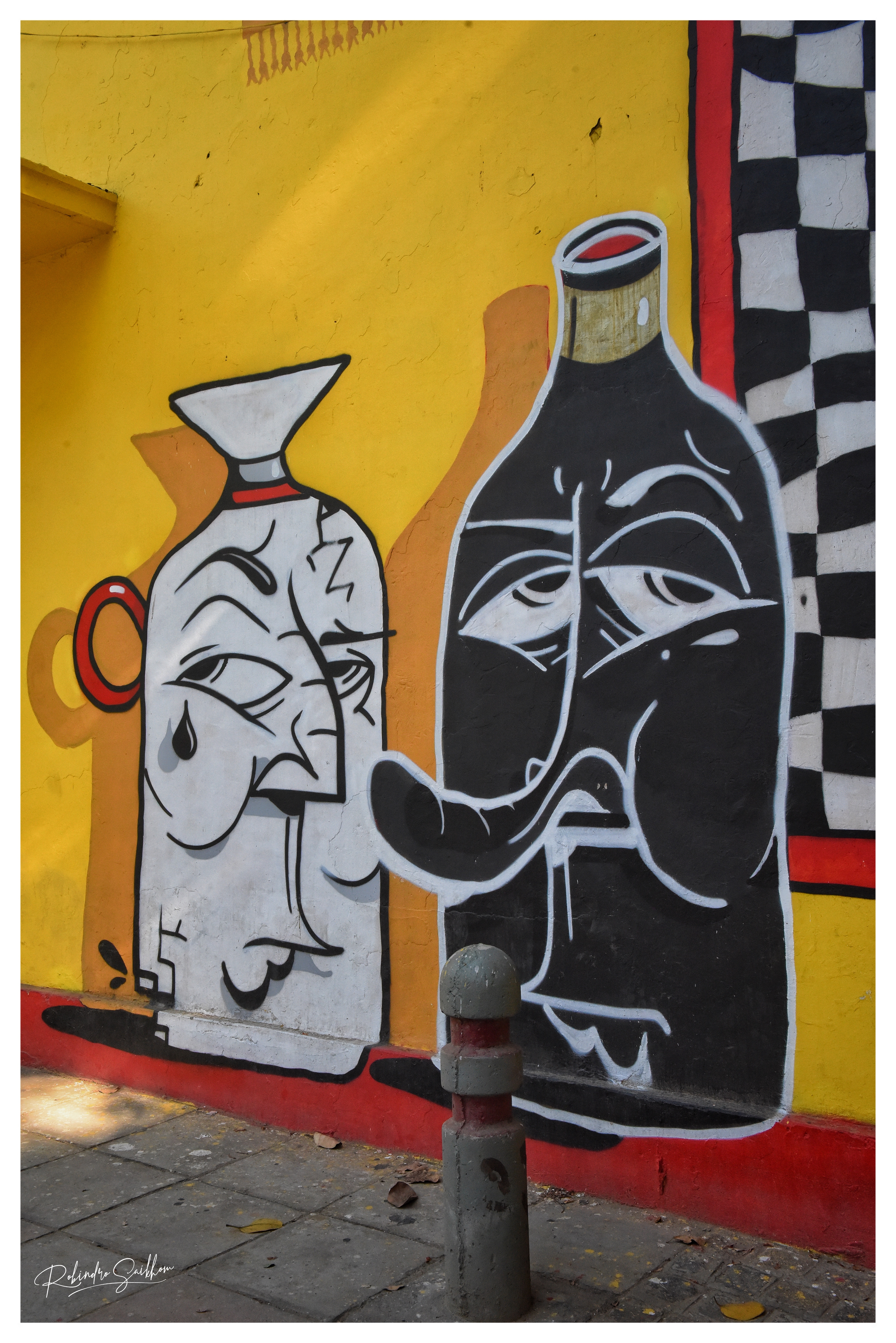
@yipyewchong || Impressions of Lodhi
Singaporean artist Yip Yew Chong is as peculiar in his style than he is in his life. After having left a managerial position in finance, the 50-year-old accountant turned muralist.
His work in Delhi is a direct reflection of the scenes from the street of everyday India, from the markets of Lodhi colony and Khanna market, to the neighbouring regions
He is well known for creating interactive pieces which invite people to become a part of his work and paints characters that are inspired by people passing by and inhabit the streets on a daily basis.
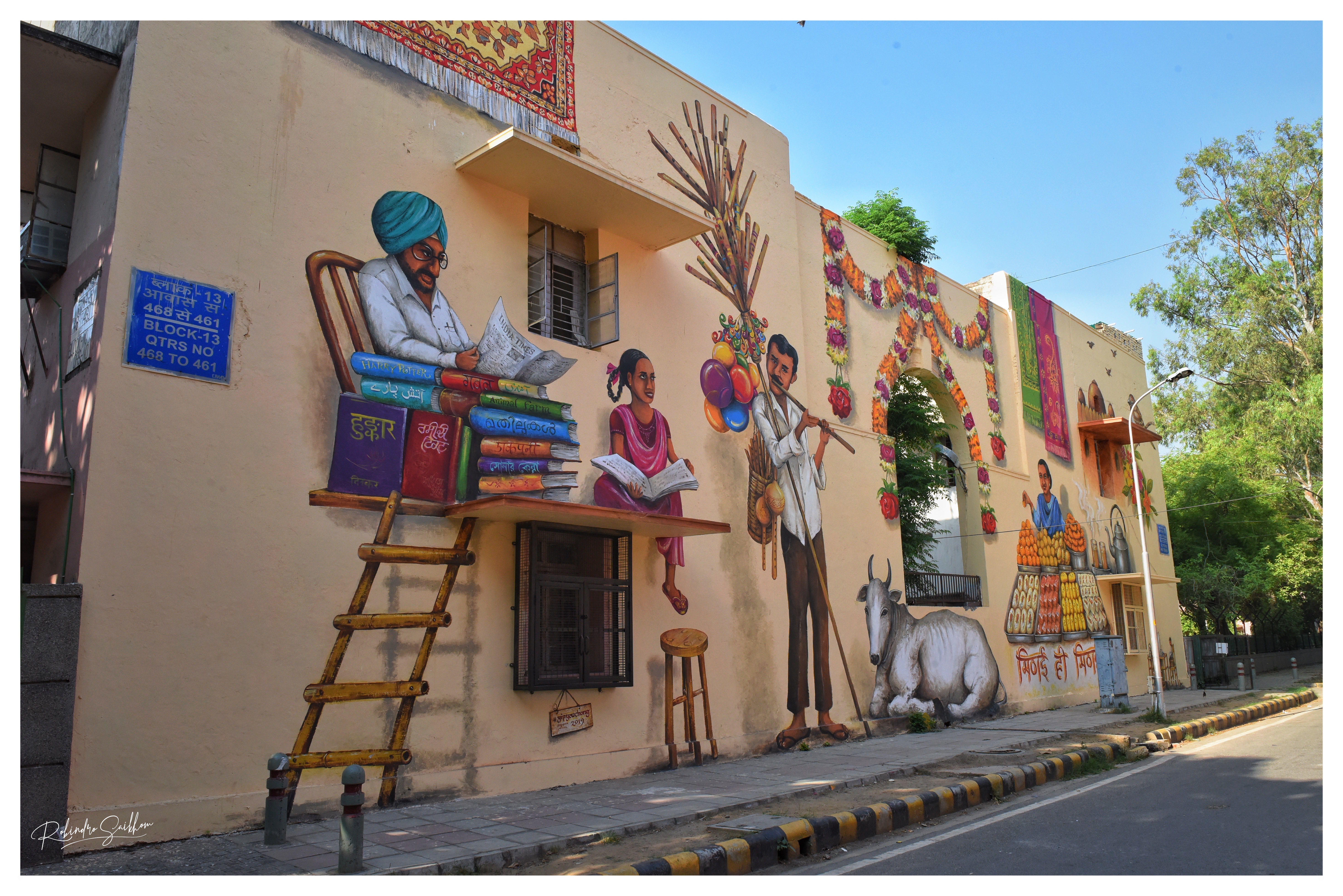
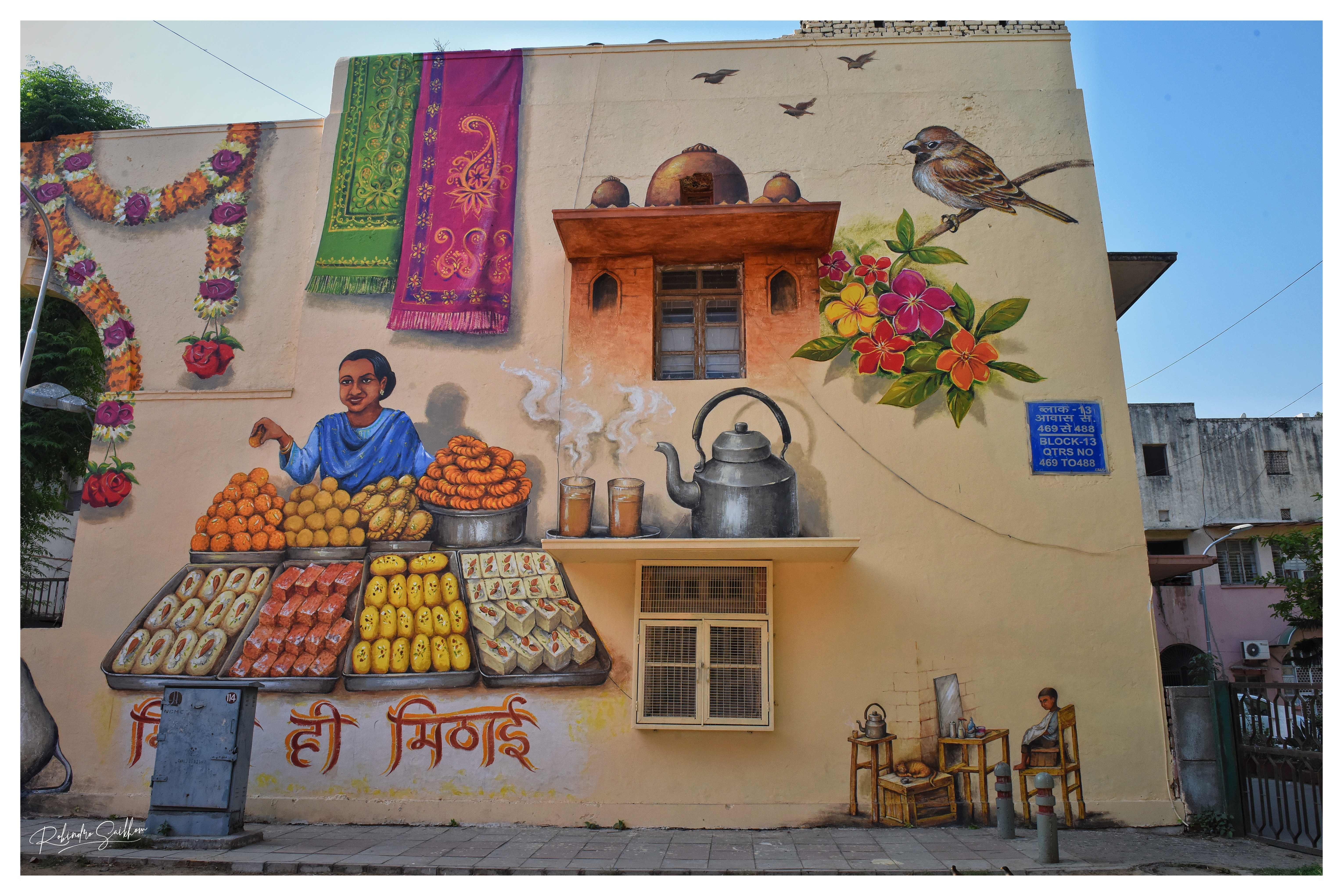
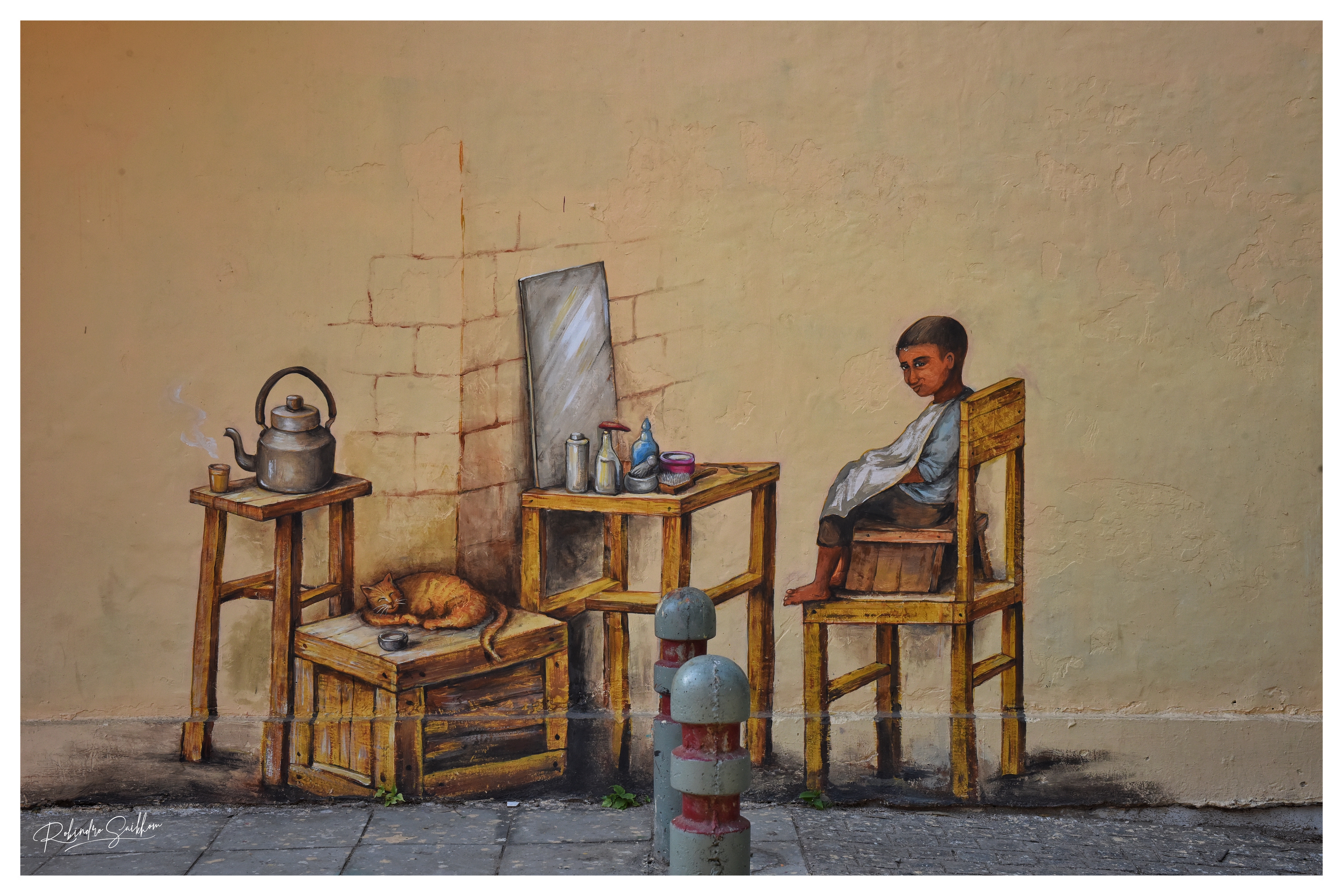
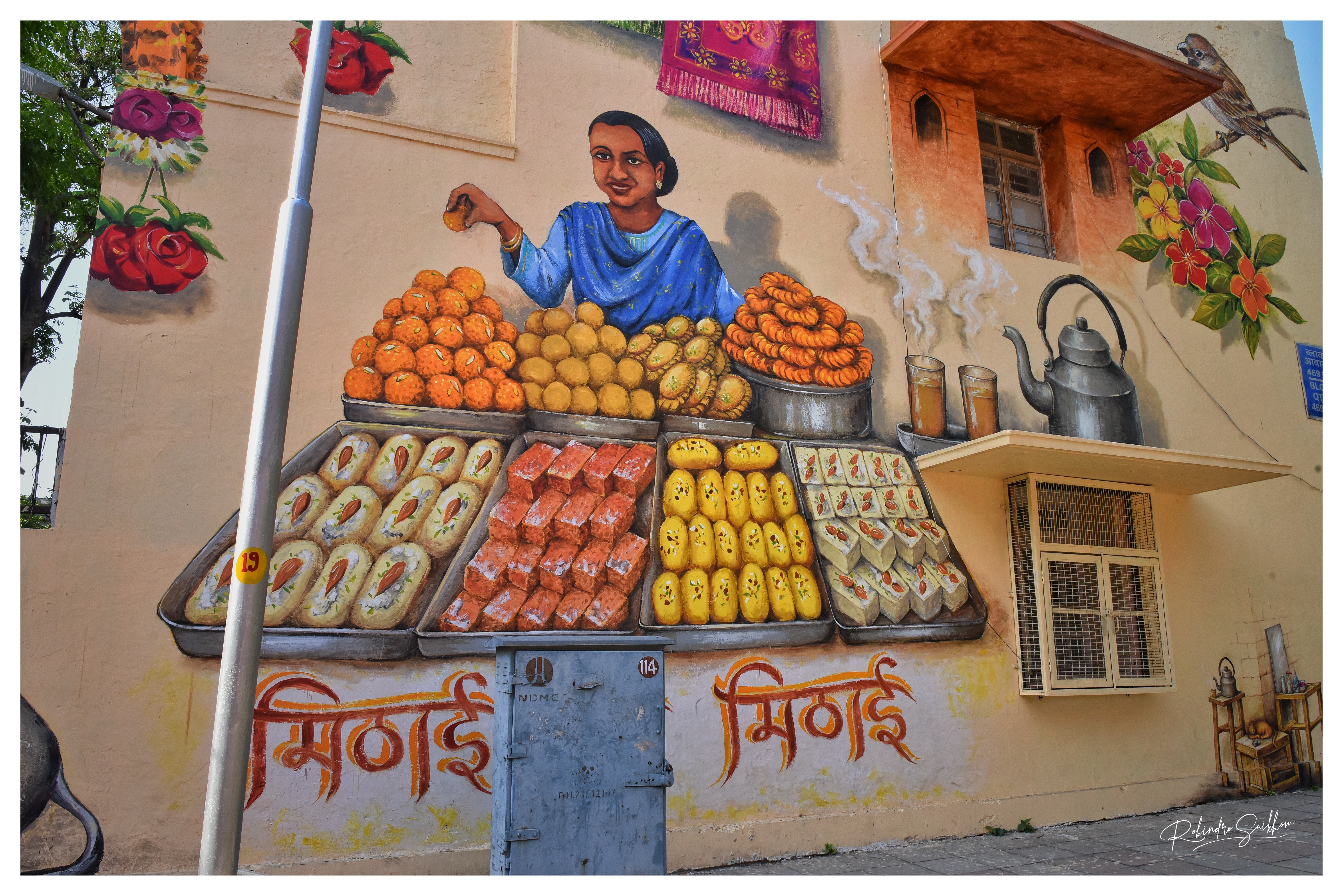
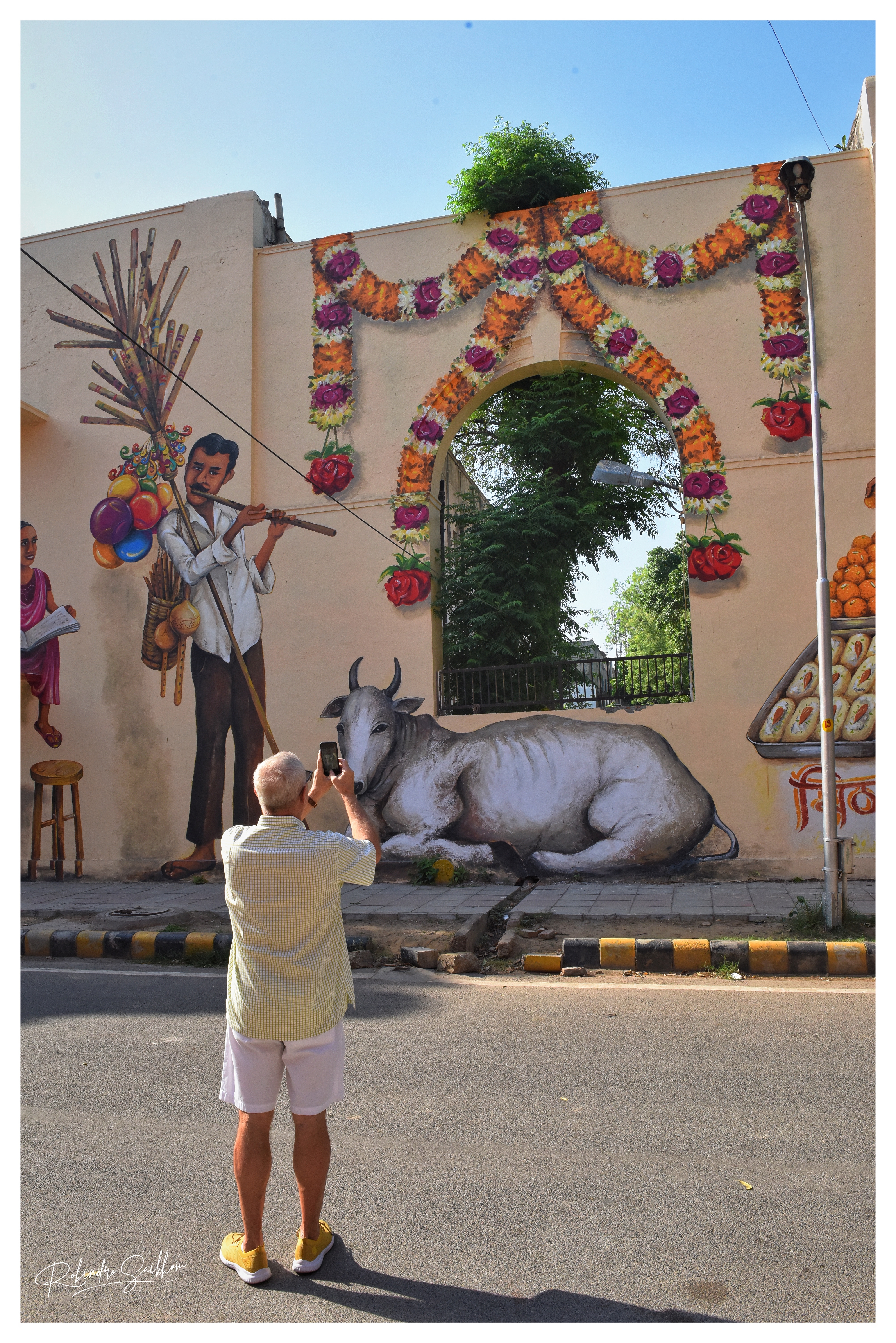
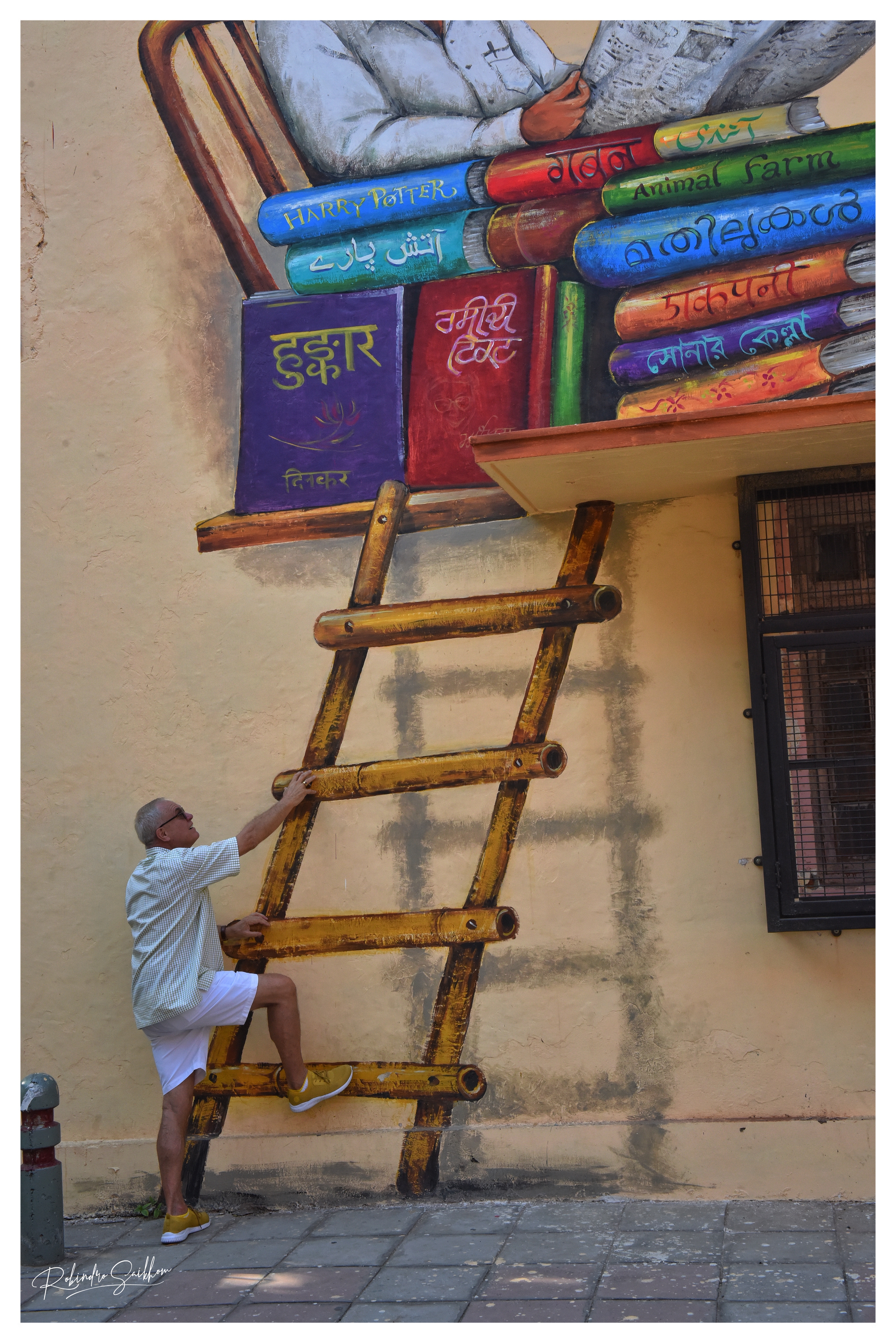
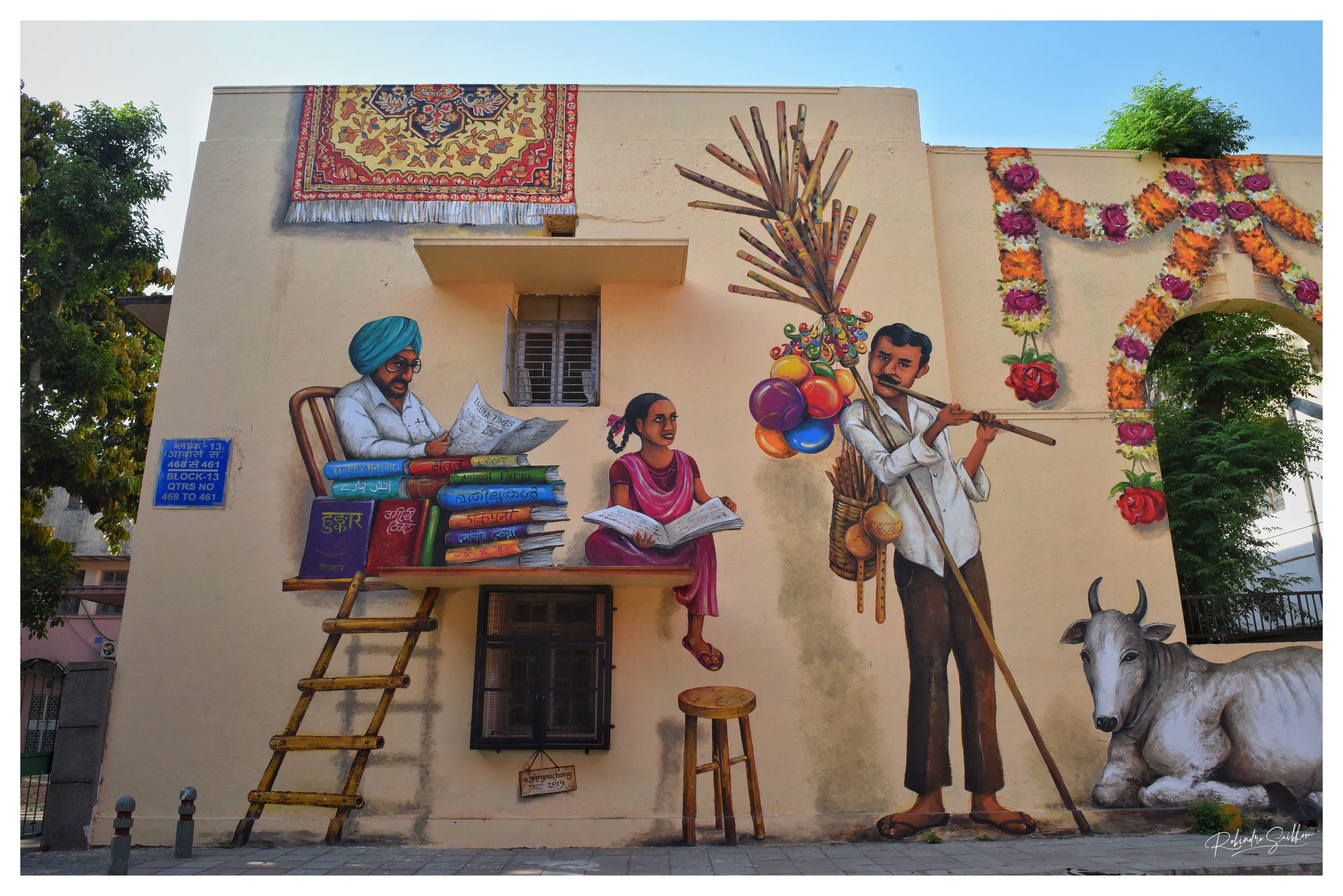
Inspired by his extensive passion for travelling and exploring new environments, his style weaves a calligraphic representation of street culture in and around Lodhi Colony. Vibrant lettering now adorns one of the facades in the locality, while pedestrians engage with the artist and his work through a quiet observation, wondering what it will turn out to be!
One of the largest AR pieces in India.
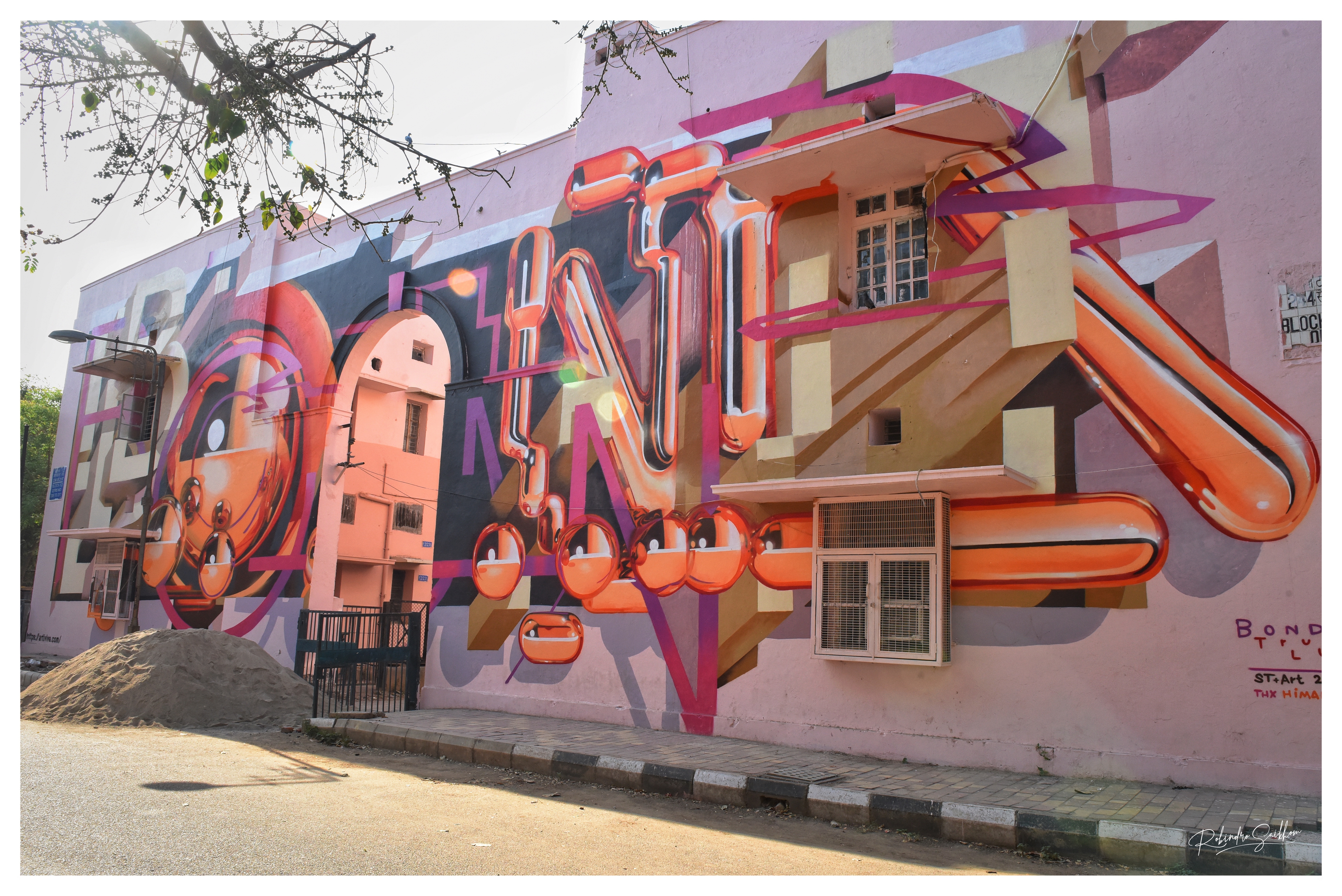
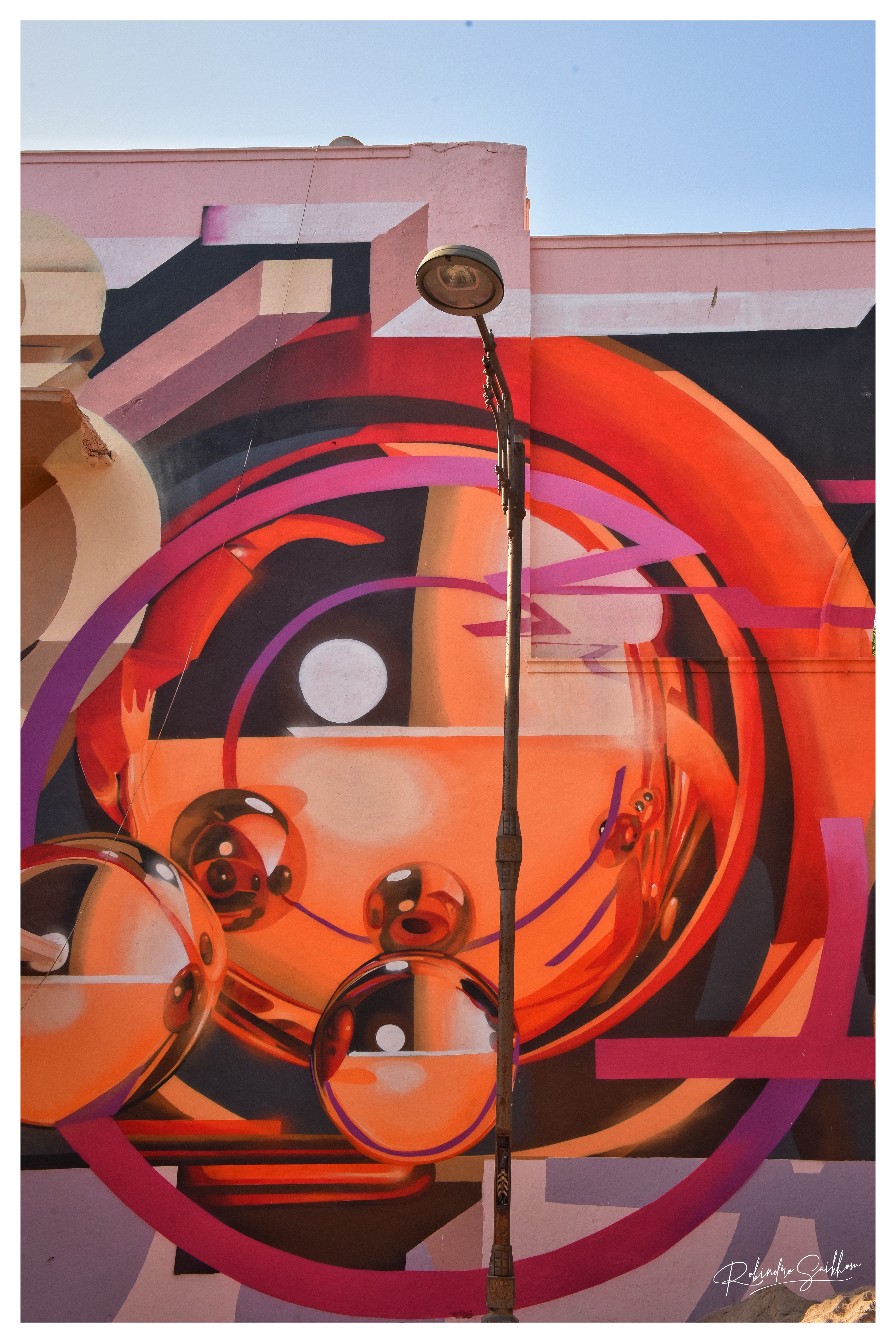
Unexpected rainy days posed a bit of a problem for Priyesh – the Mumbai based artist well known for his ‘Aadarsh Balak’ series which is a viral sensation on the internet. But he has been powering through it all continuing work on the biggest walls he has done so far.
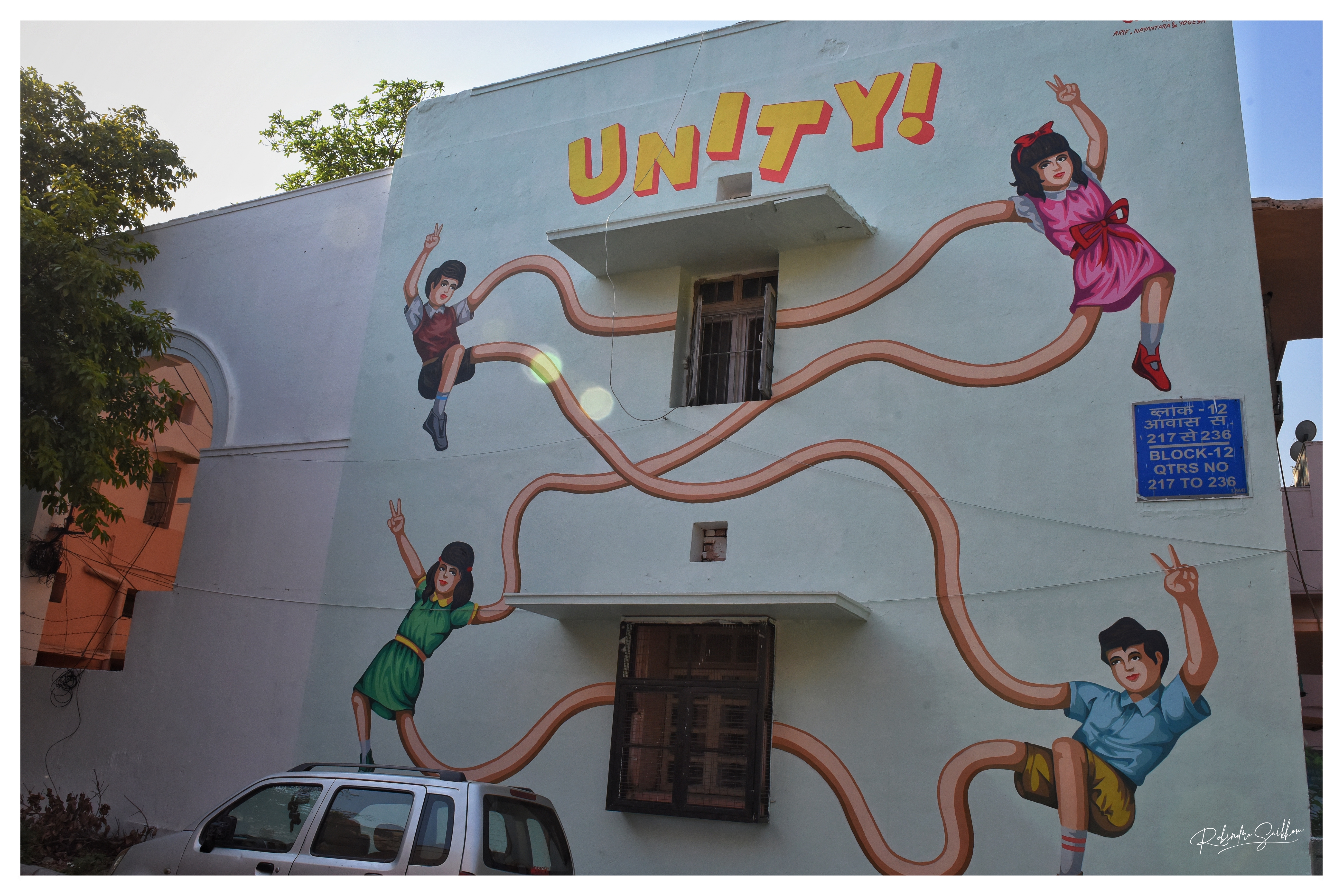
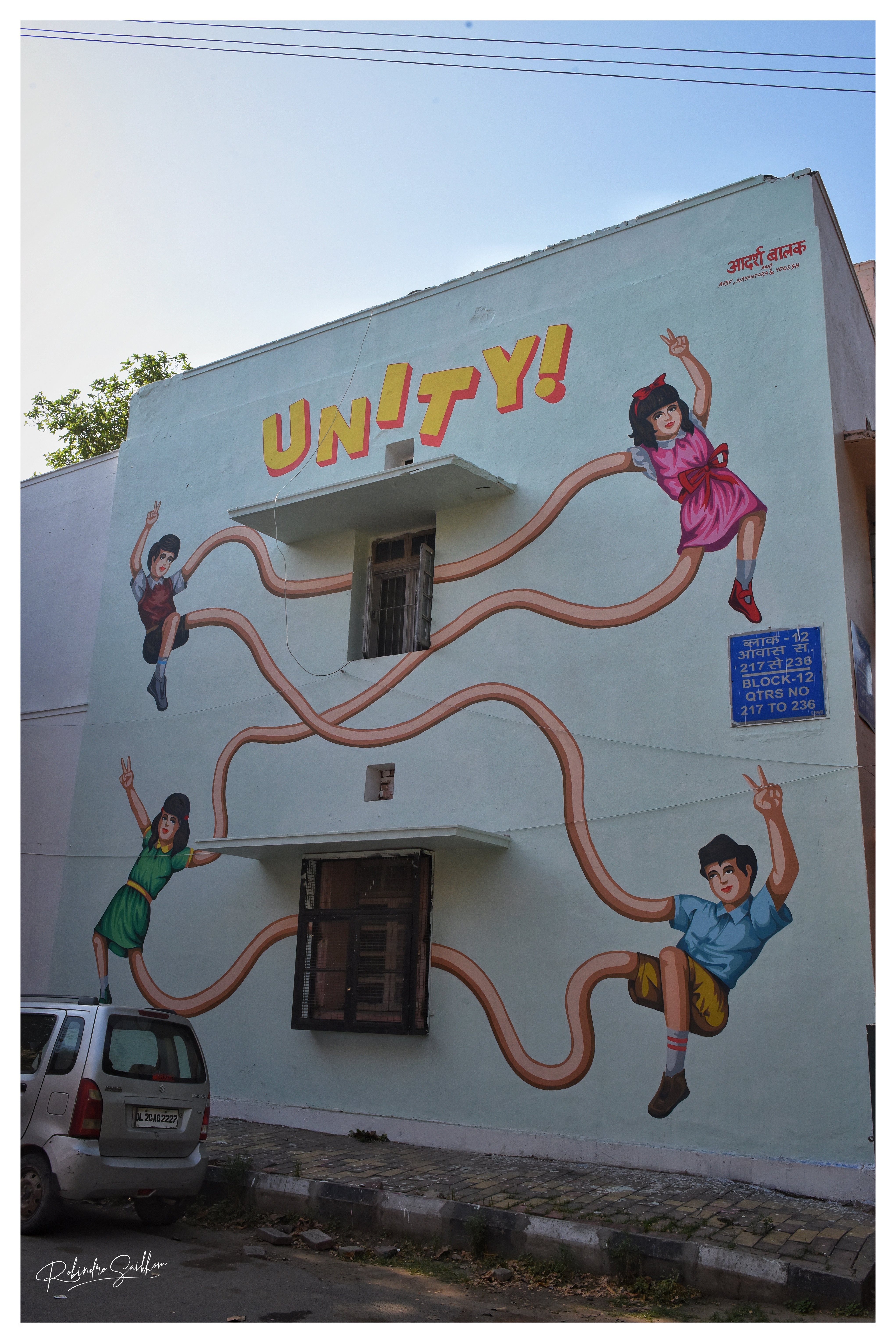
The artist from China, DALeast, names the mural ‘Order and Chaos’ taking inspiration from his time in India.
For this particular wall, DALeast saw a beautiful arch which was the highlight for the mural. He depicts a flock of birds flying towards the centre of the arch – but all in complete balance and synchronicity – with an order to that chaos. He explores the tense relationship between the natural and the artificial, the organic and synthetic, forming an art work true to the characteristic of India – chaotic but beautiful and functional.
With this work, he has also made use of shadows since he believes that shadows, in a sense, validate our existence in physical space.
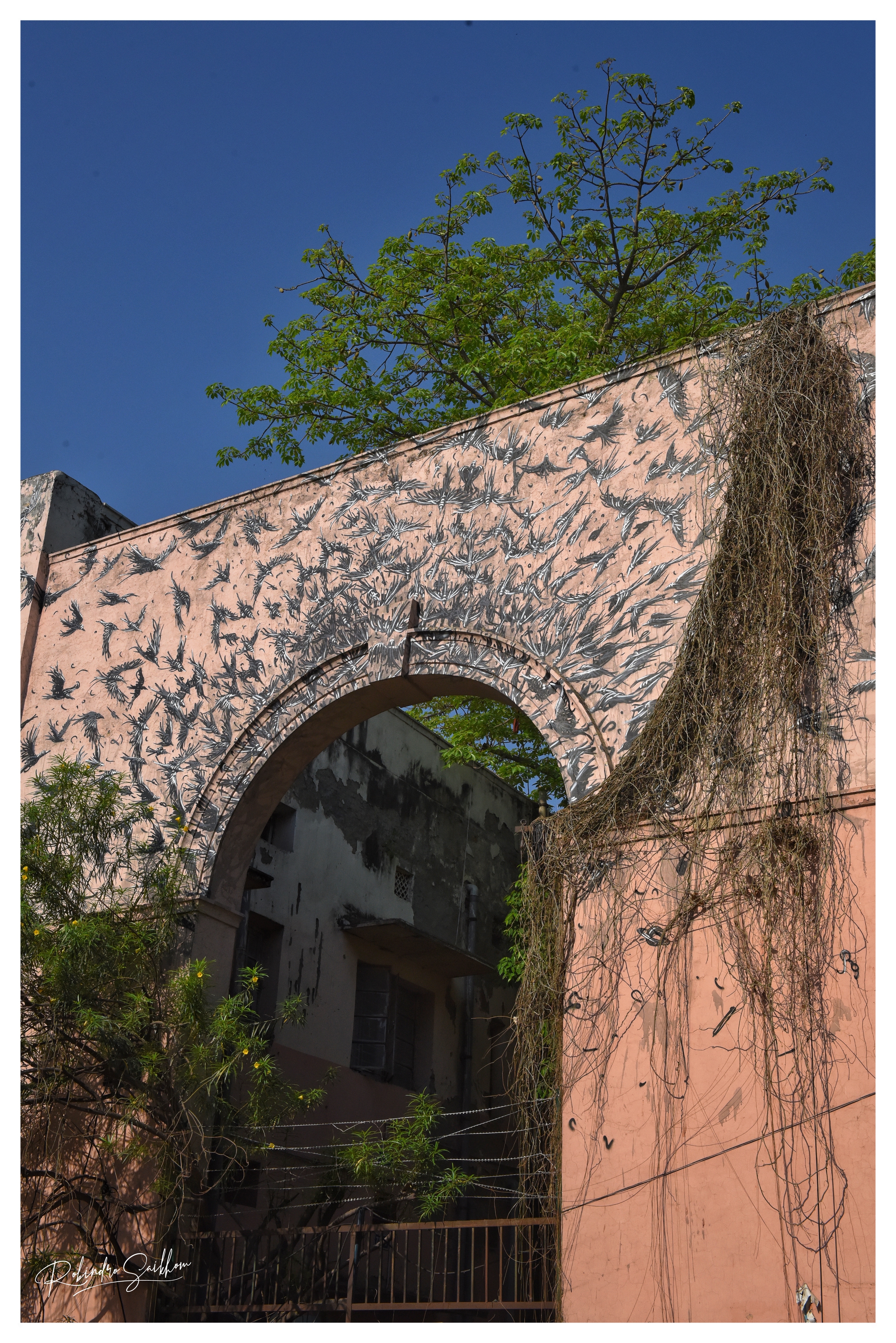
@david_leitner || Reveal
Through his work in Lodhi, Austrian artist David Leitner wanted to highlight some of the socially relevant themes, he experienced in his time in India, such as the environment and gender issues.
The wall has a few elements which are quintessentially Indian and also shed light on the amount of plastic being used and wasted. Women are seen as powerful central characters on the wall, while three sets of text in Hindi, shed light on the fact, that of the 1 million consumed plastic bottles, only 9% are being recycled.
Through his work, David hopes to draw the attention of people to these pressing issues, while hoping that to start a dialogue between the locals about these topics.
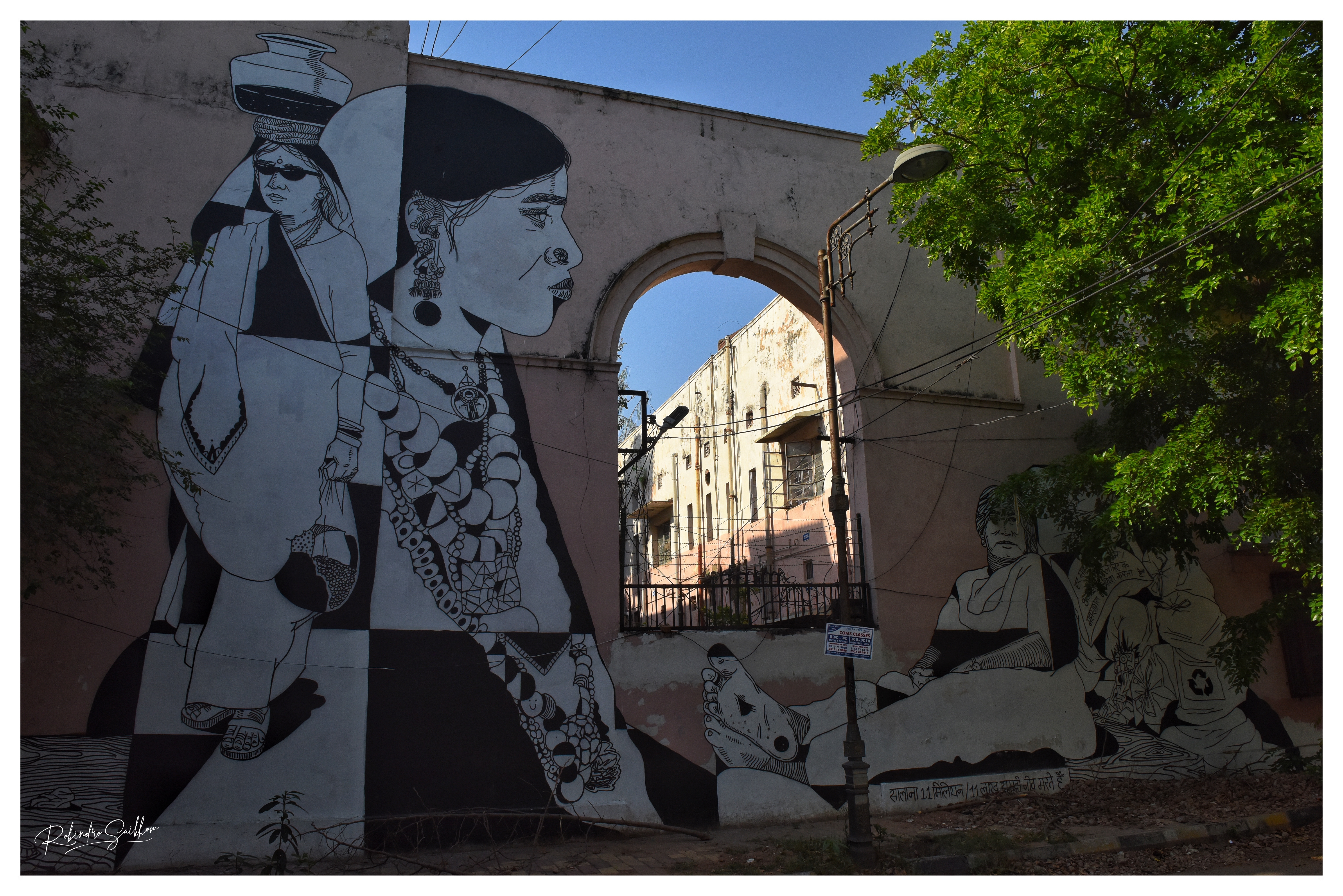
Indian duo Do and Khatra, their artwork at block 5 is around the differences and similarities between rural and modern urban India
As usual, their approach to the wall is very old school despite their young age. Each artwork by the Indian duo is a unique piece which constantly evolves as they spend more time at the wall. Often initial design elements are changed, or newer ones added into the composition as they respond to the space they are working in.
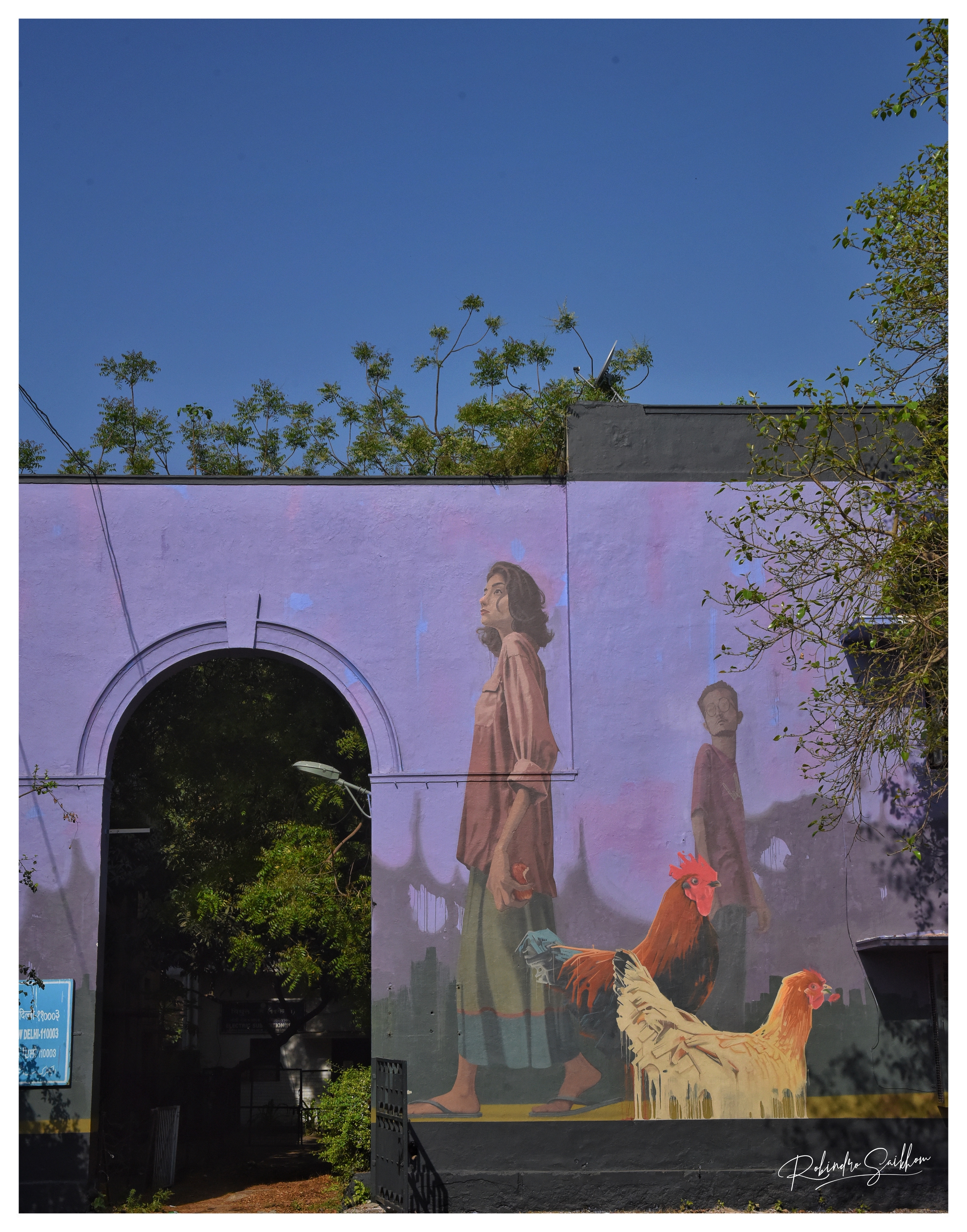
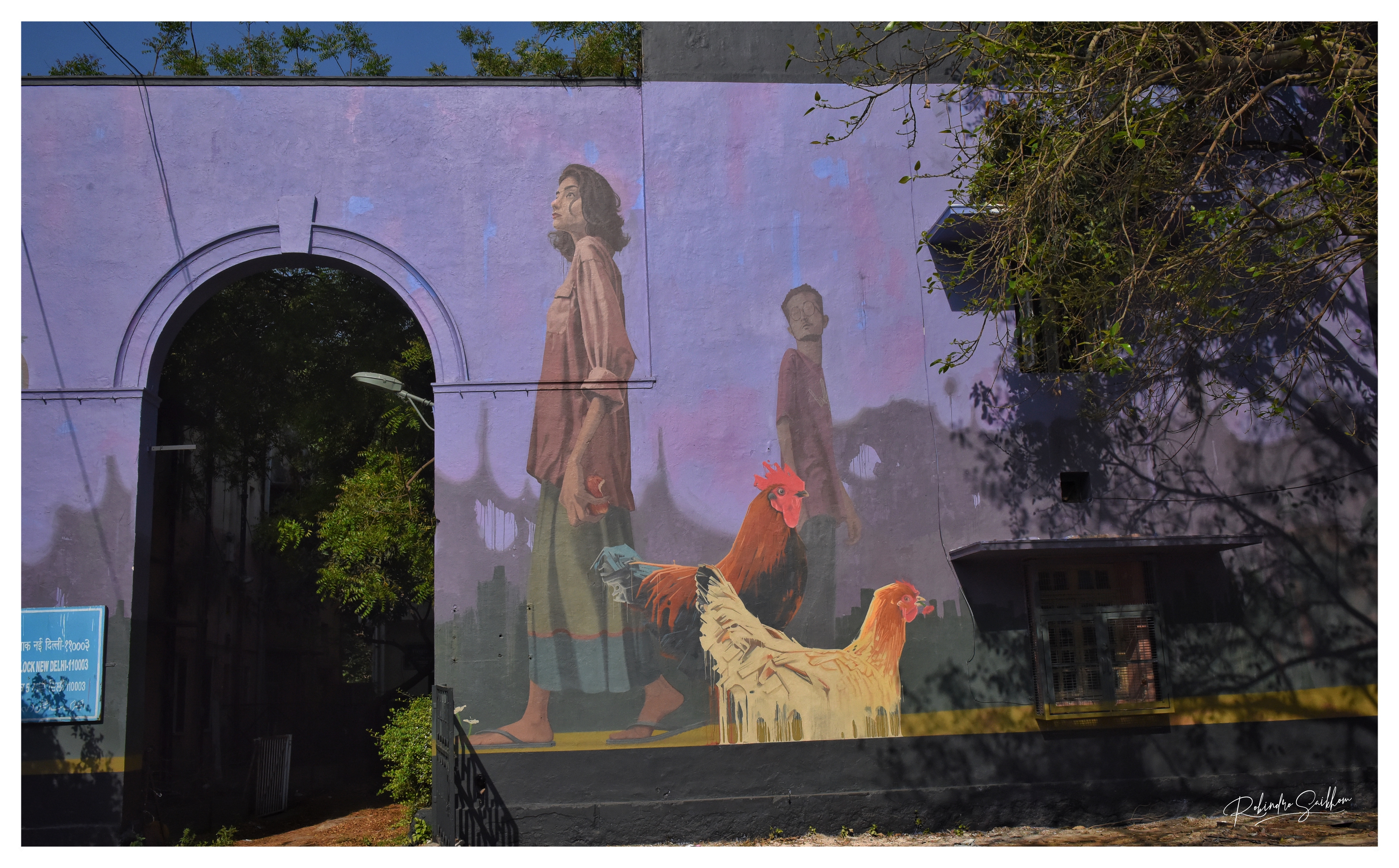
@georgiahillbth x @hanifkureshi || ‘Yahaan’
Based on St+Art India’s ongoing work with the community in Lodhi Colony, and responses from locals of how they feel about the area, Australian artist Georgia wanted to work with Hanif Kureshi to reflect how language reinforces our sense of belonging.
Building on the English phrase ‘This Must Be The Place’, the artists arrived at a Hindi translation of ‘yahaan’ (‘here’), where radiating lines and abstracted type would come to interact with each other, representing unique, varied, and ultimately connected interpretations of a sense of place.
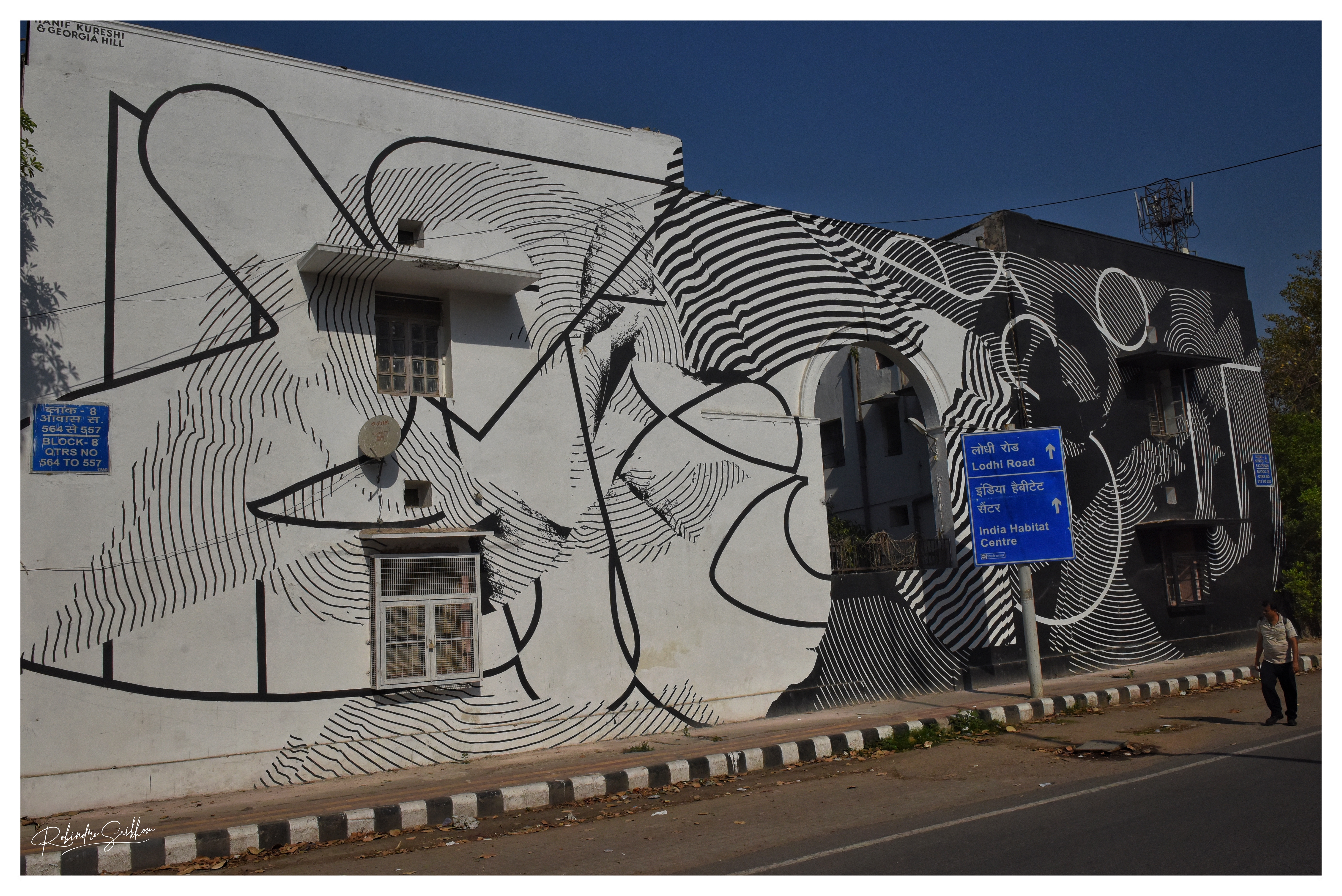
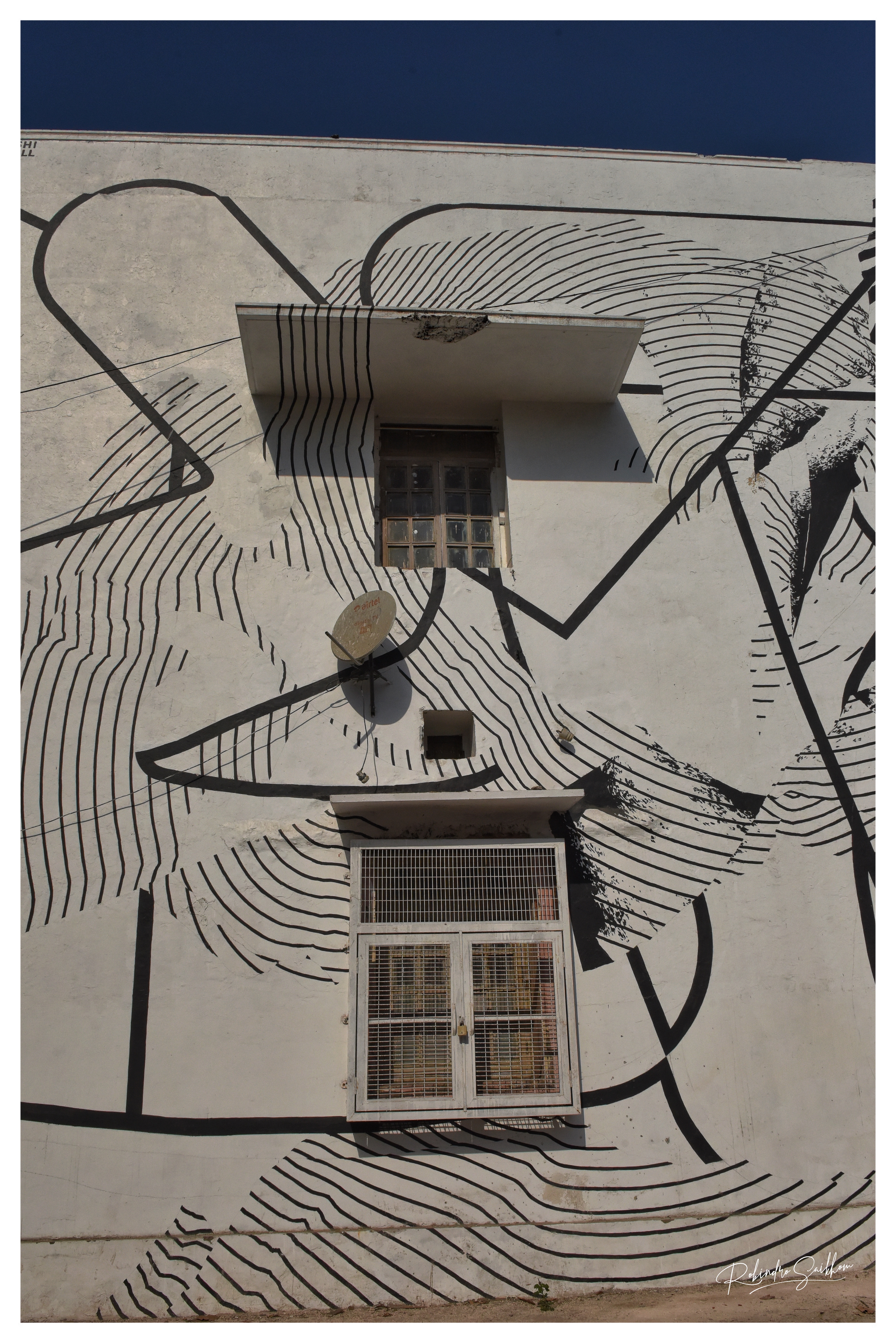
“How Is Global Warming” by @gaiastreetart
For his wall in lodhi art district, Gaia explores the impact of green house gasses and global warming on our society. Using the arch of the wall, he made the Shish Gumbad, known as the glass dome in the Lodhi colony area, right in the center of the composition. Behind it, a Victorian botanical garden plays with the concept of greenhouse gases. This pairing is flanked by two hands emerging from the water signifying hope and despair. On either sides of the wall, the artist has painted one inflated globe and one deflated globe, to show the effects that globalization has on our planet.
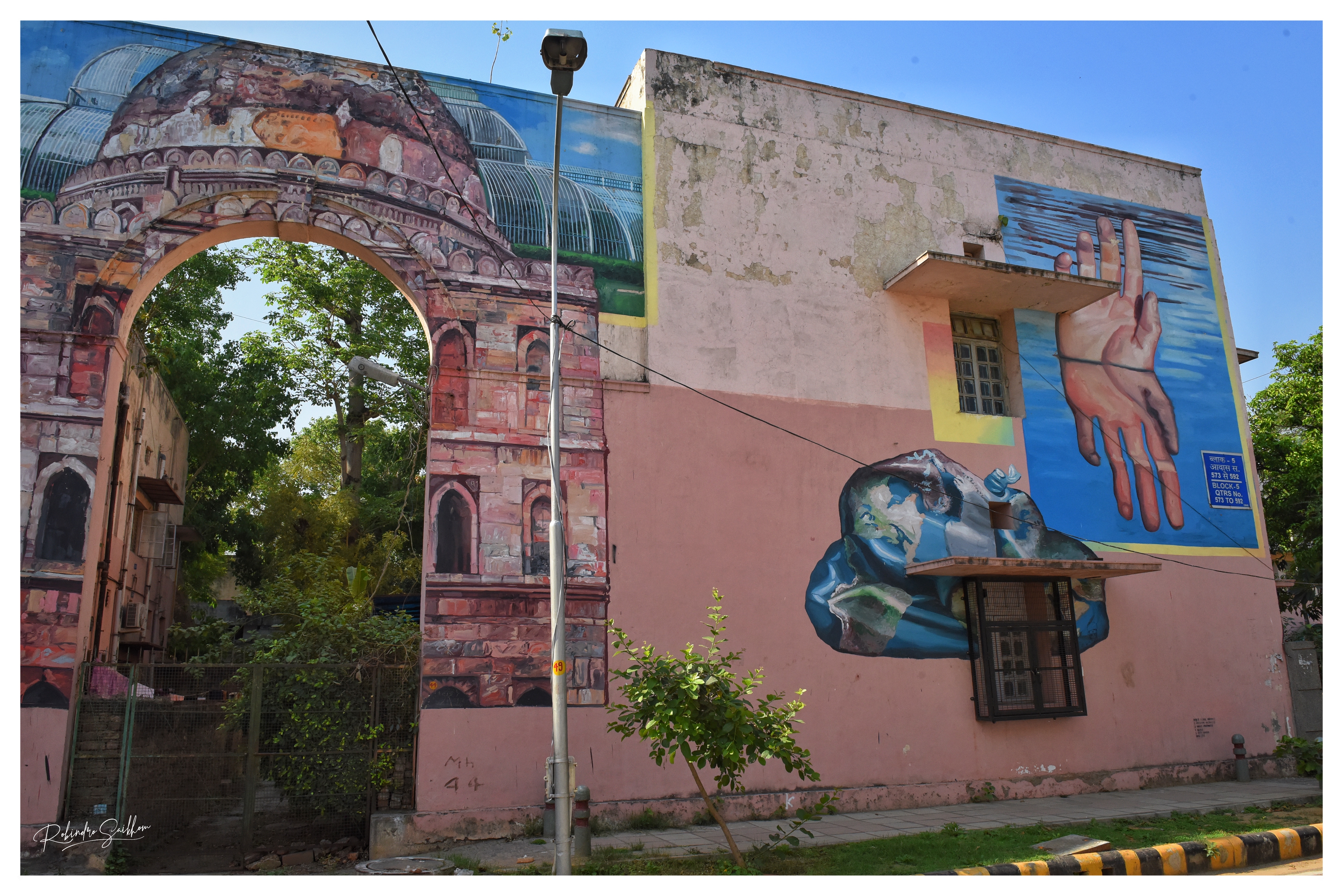
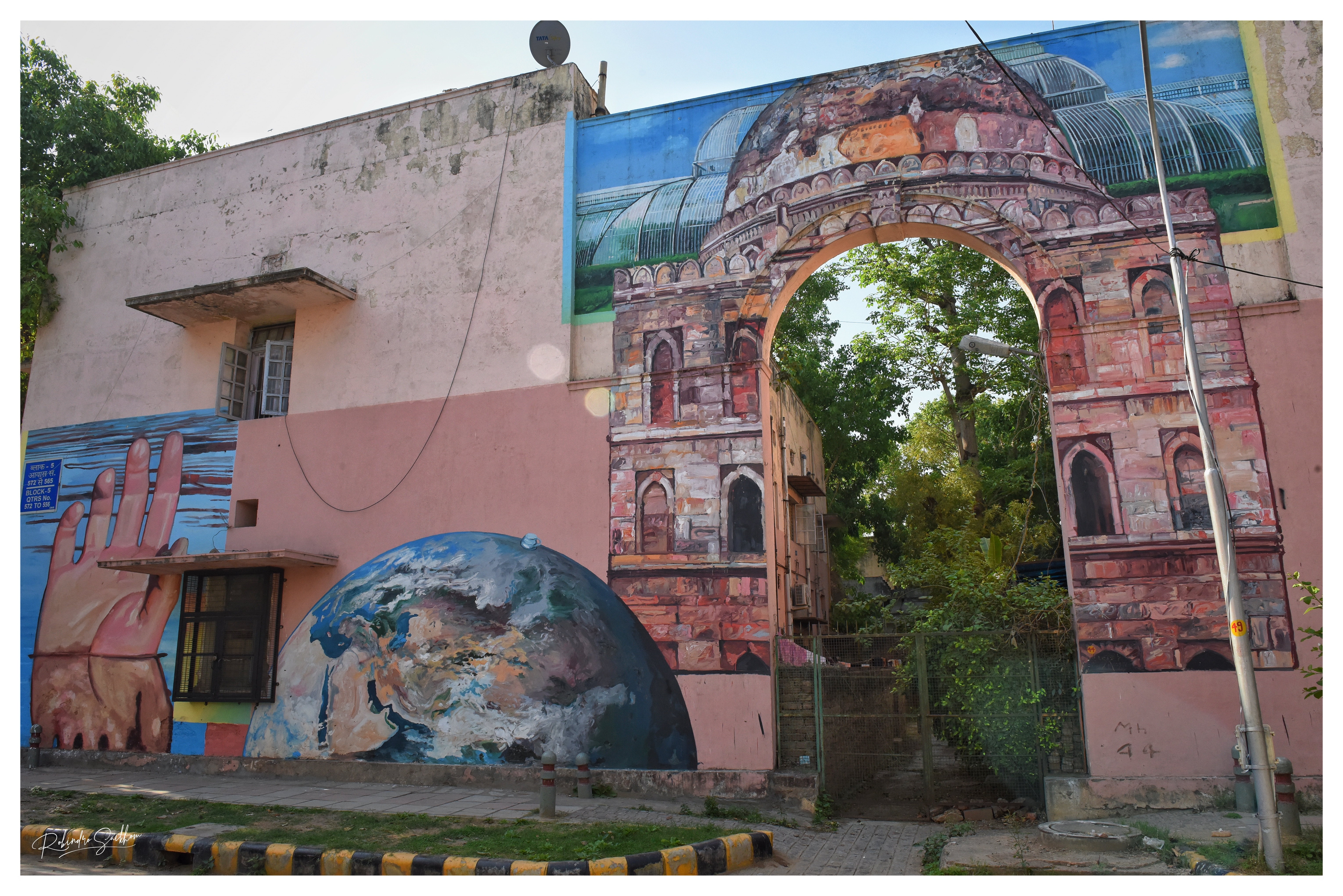
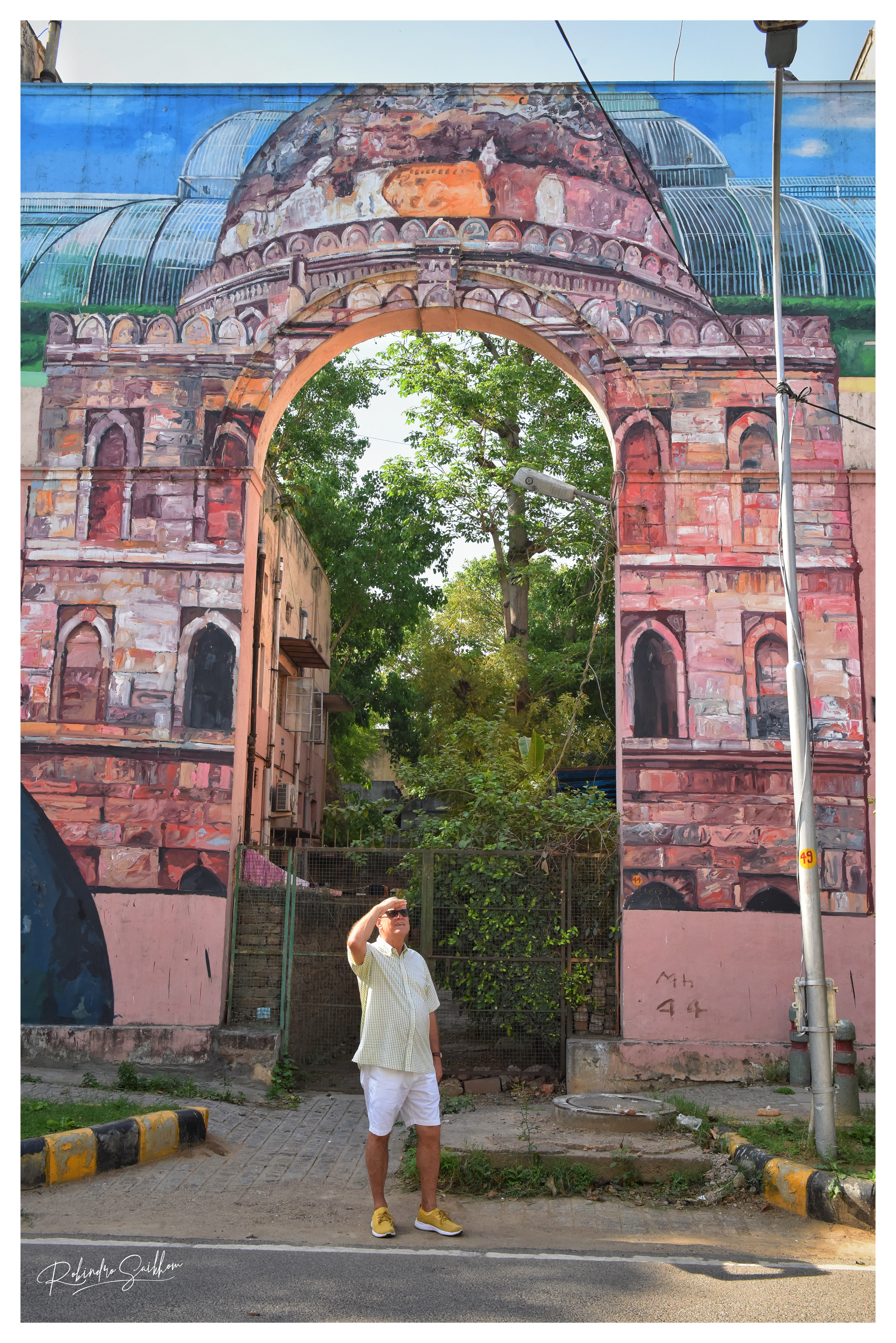
Aaron is a Canadian visual artist currently based out of Brooklyn who uses local narratives from both his homeland and India to address the global issue of climate change.
In Lodhi colony Li Hill painted the facade with image of human figures transforming into a tiger and a polar bear. The Tiger represents Eastern knowledge, while the Polar Bear represents the west. In a symmetry that reads the architecture of the building, Aaron speaks about the dangers we pose to the world due to our own behaviour while the speed and powerful poses of the characters also indicate the speed at which things are changing, and the power we have in altering our conditions.
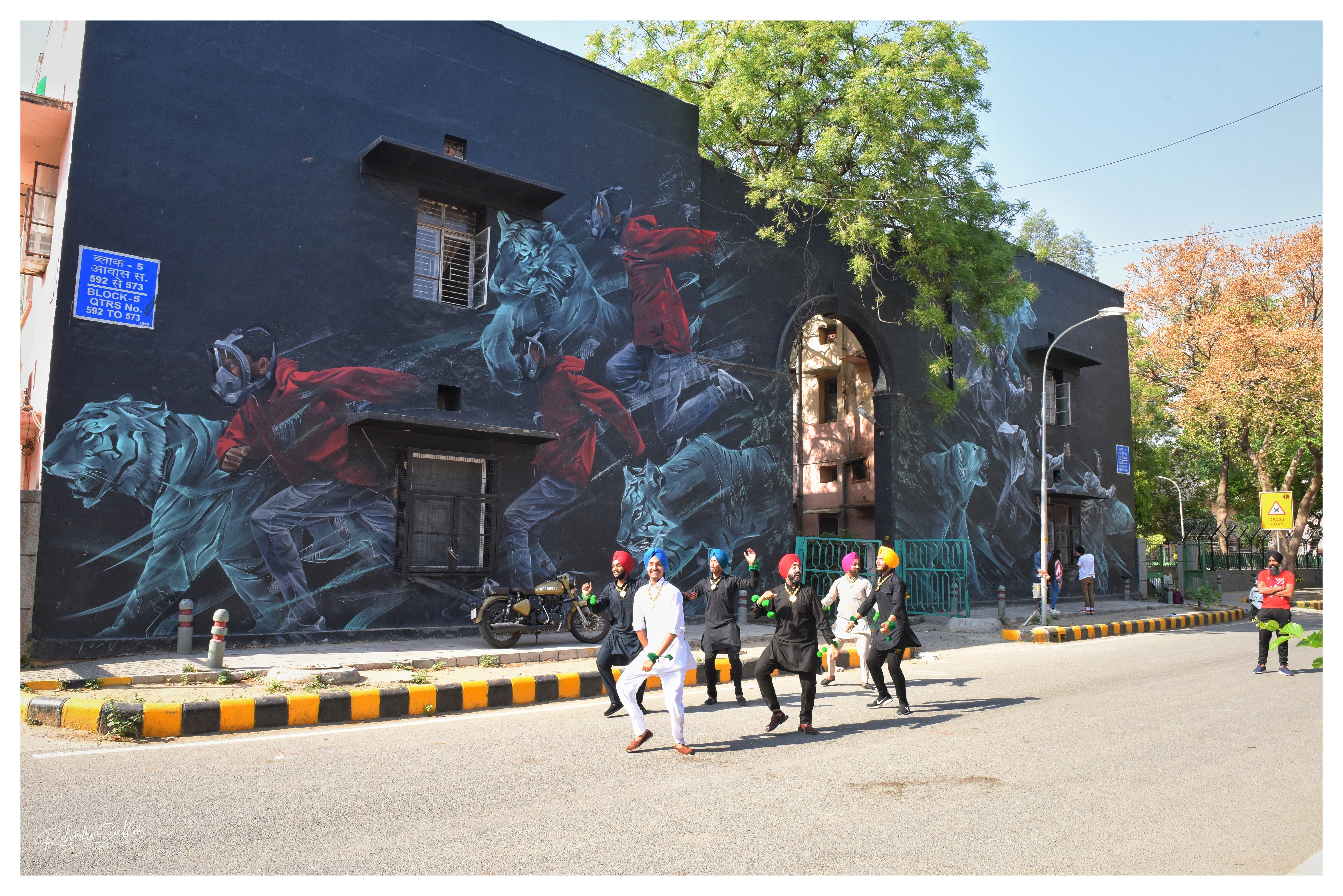
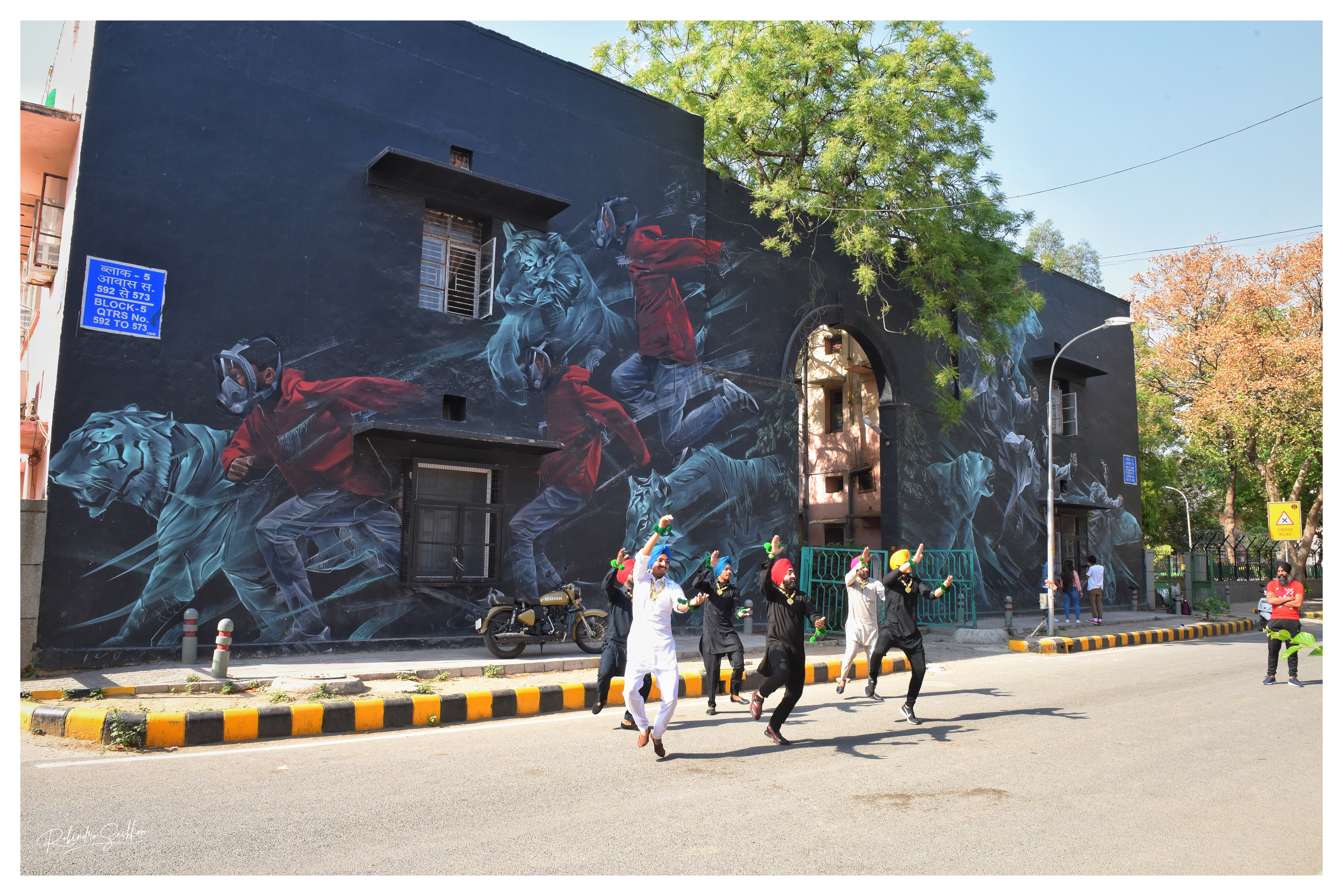
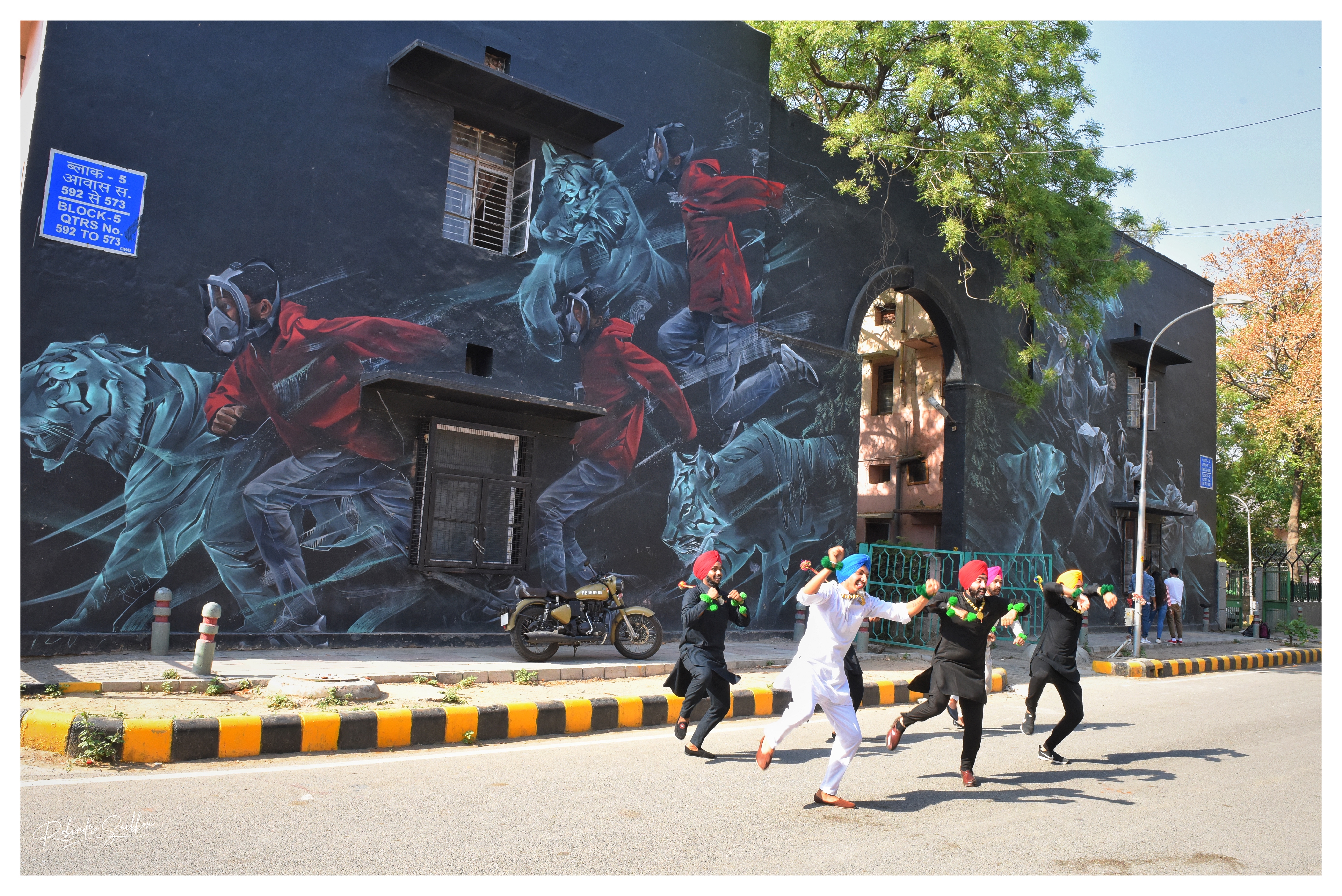
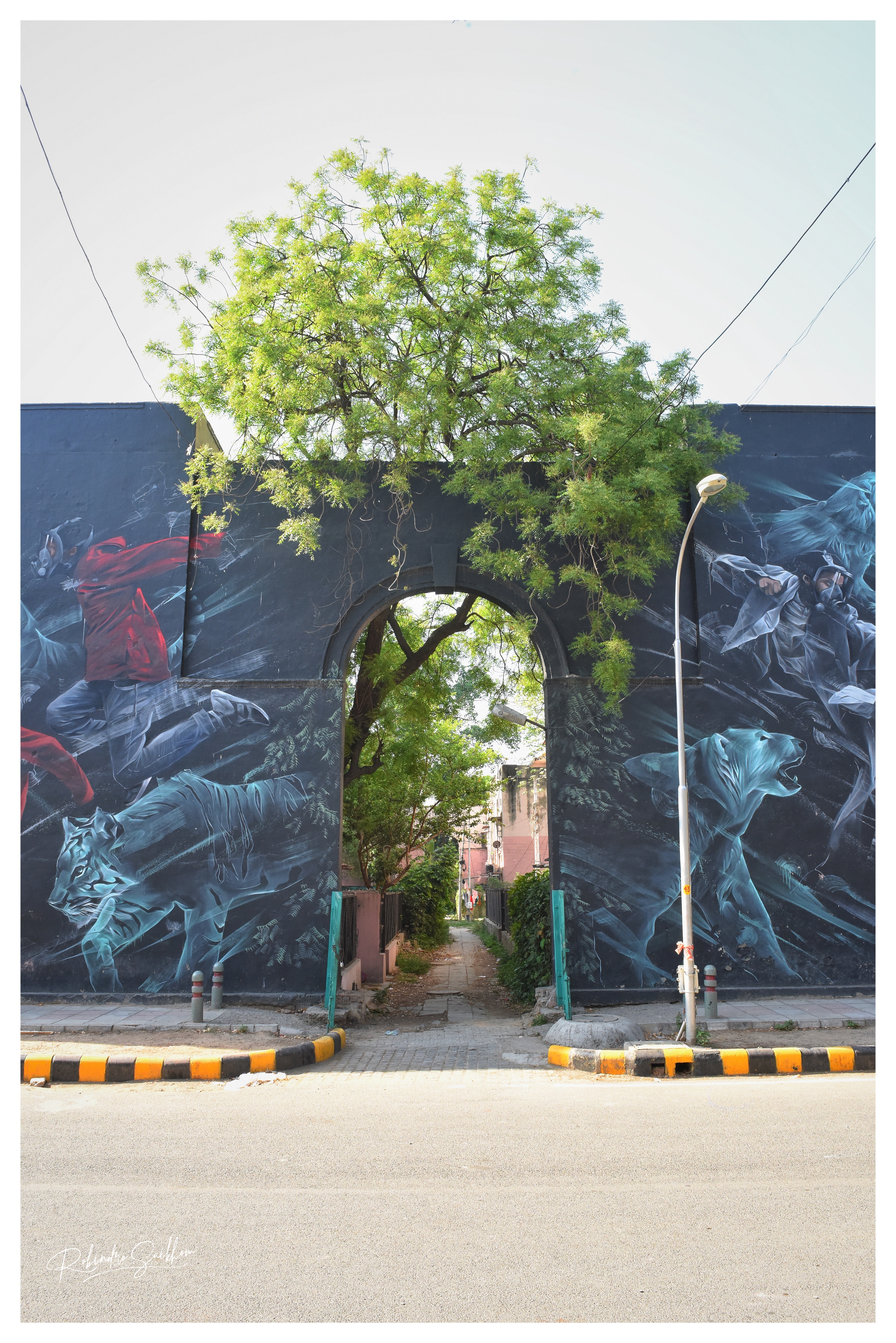
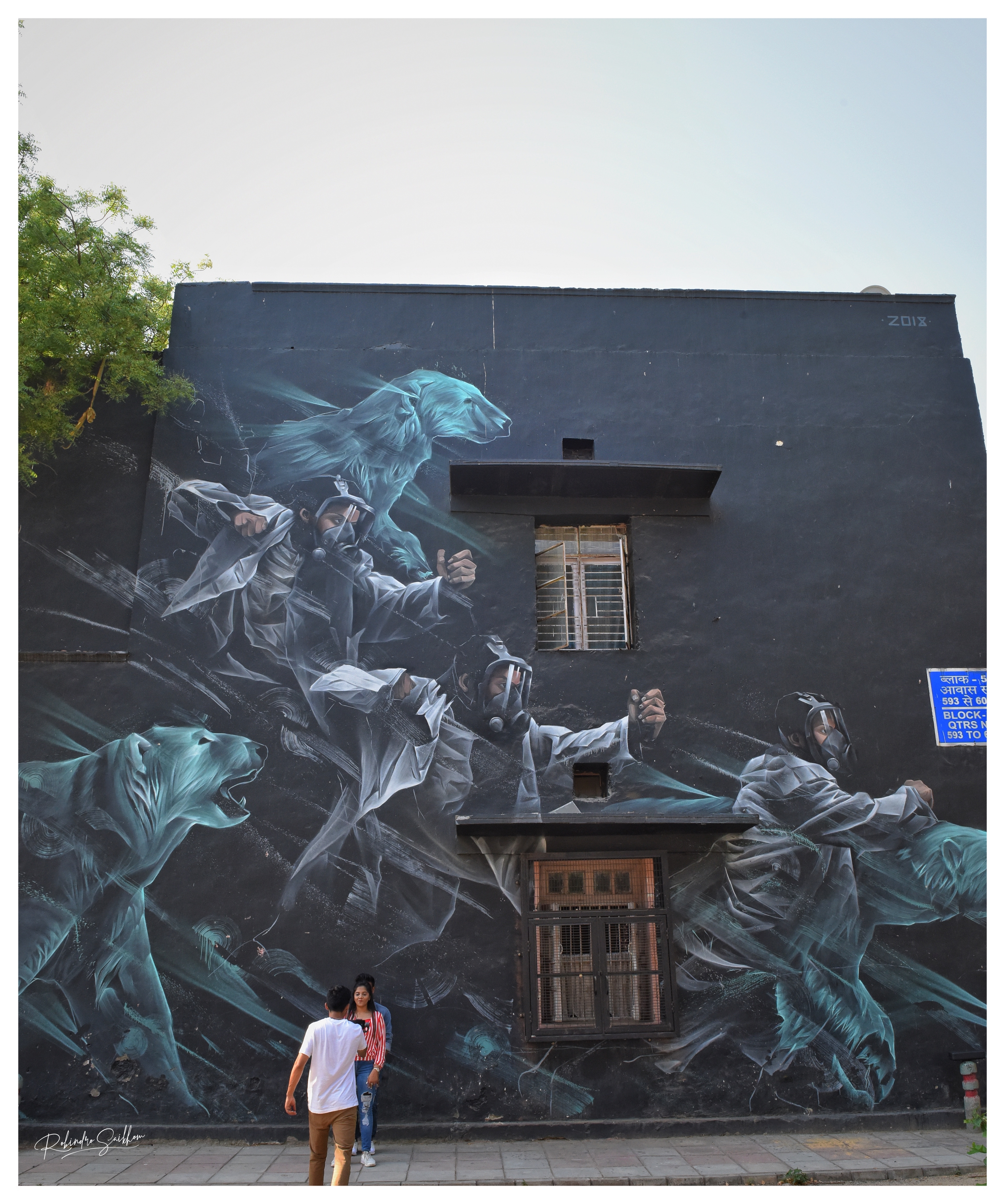
@saner_edgar || Discovery of India – Balance in Mind and in Spirit
Saner’s work is symbolic, intricate and yet, direct.
As he himself explains, “The mural is inspired by some concepts that have crossed over to Mexico about the Hindu philosophies, mainly addressing the enlightenment through self-knowledge, through following a spiritual path and above all looking for the rebirth of and being to improve within from ourselves.” On the sides, a man and a woman represent the order and balance in the universe, their clothes and adornments identify Mexican and Hindu traditions that create a bridge between the two cultures.
Saner often used masks in his work which are an integral part of Mexican culture and are often used as a tool to reveal the true nature of human beings using animal forms. The human wearing a tiger mask on the left side of the wall is representative of Indian culture and people.
The rich diversity of the two countries are represented by the flora and fauna. This is also an important motif for Saner since he wants people to remember that we are one with the planet and its natural beauty which has to be protected.
The lateral characters – the Monkey and the Dog are the protectors – the guards, and above all, the guides who look after you on your path to enlightenment.
Finally, the lotus flower is a symbol of hope, while the heart in the middle is the humanity that binds us all together.
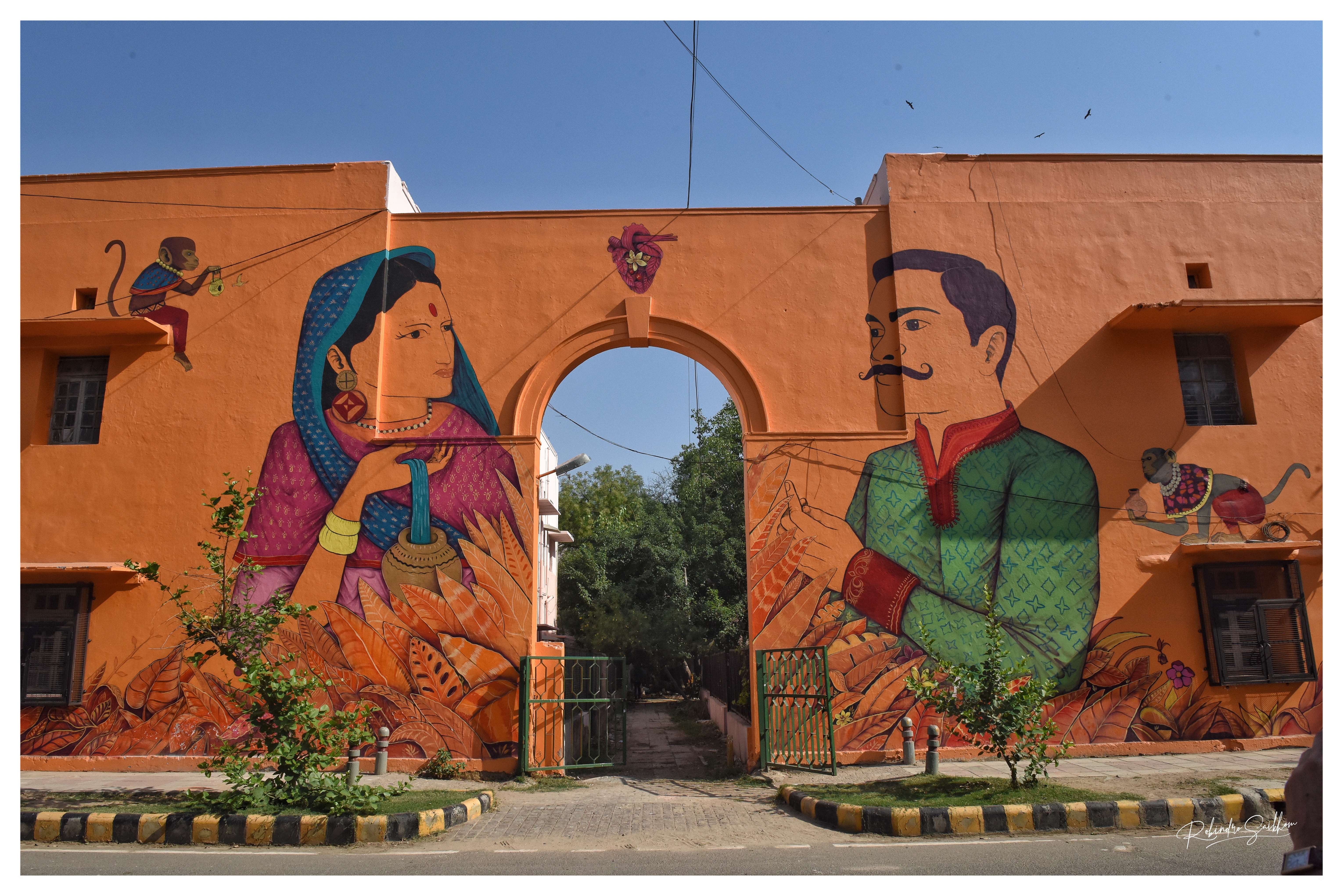
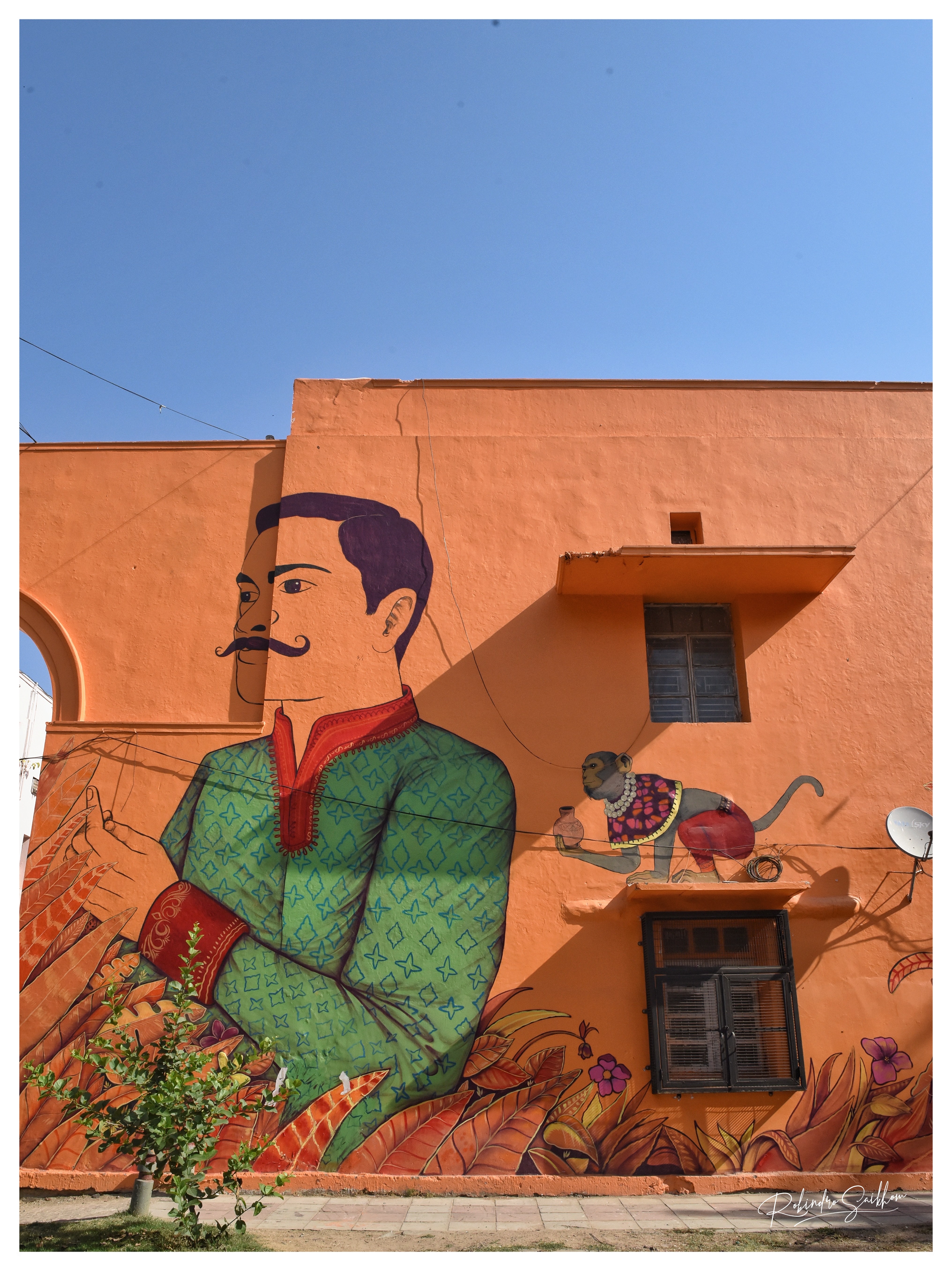
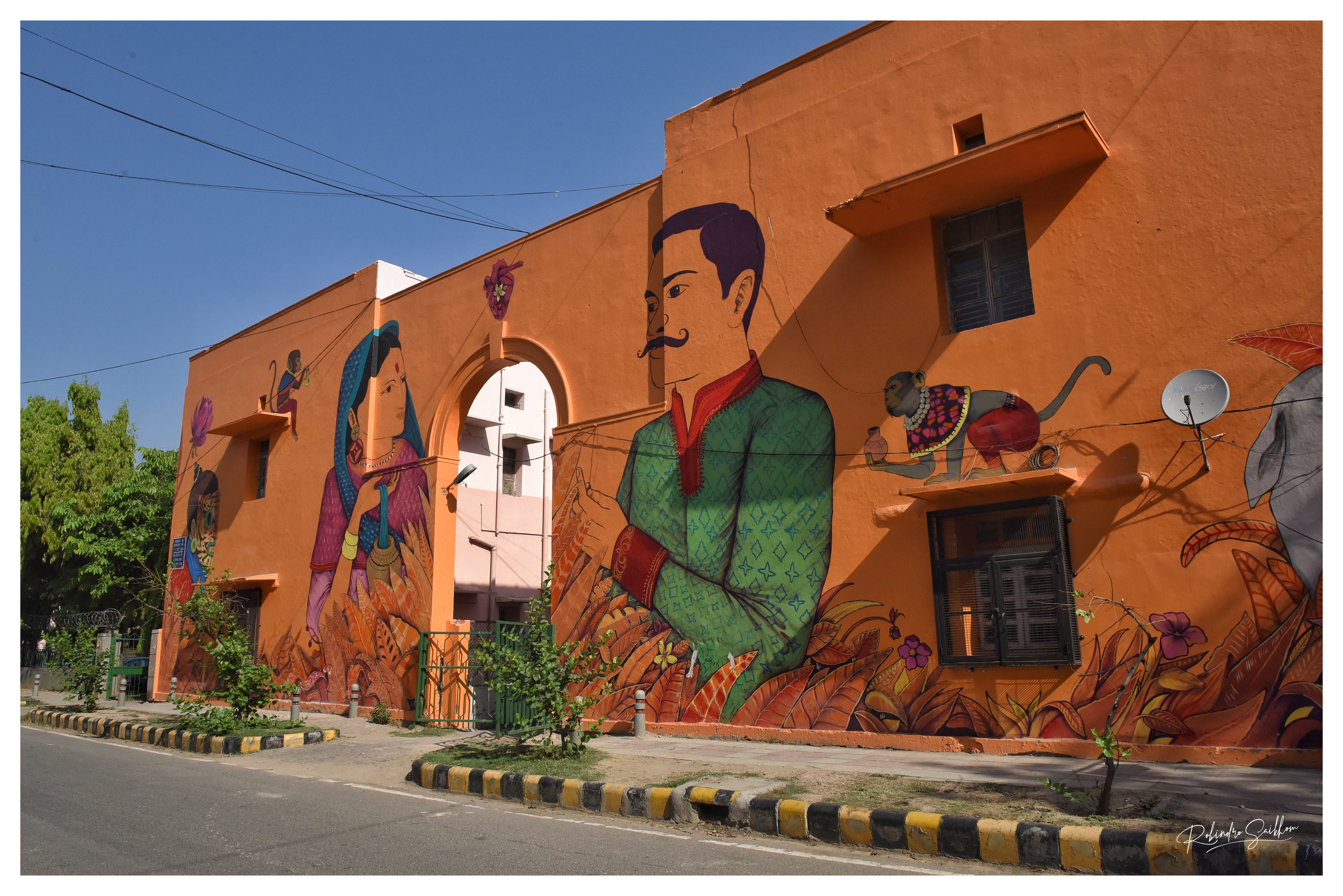
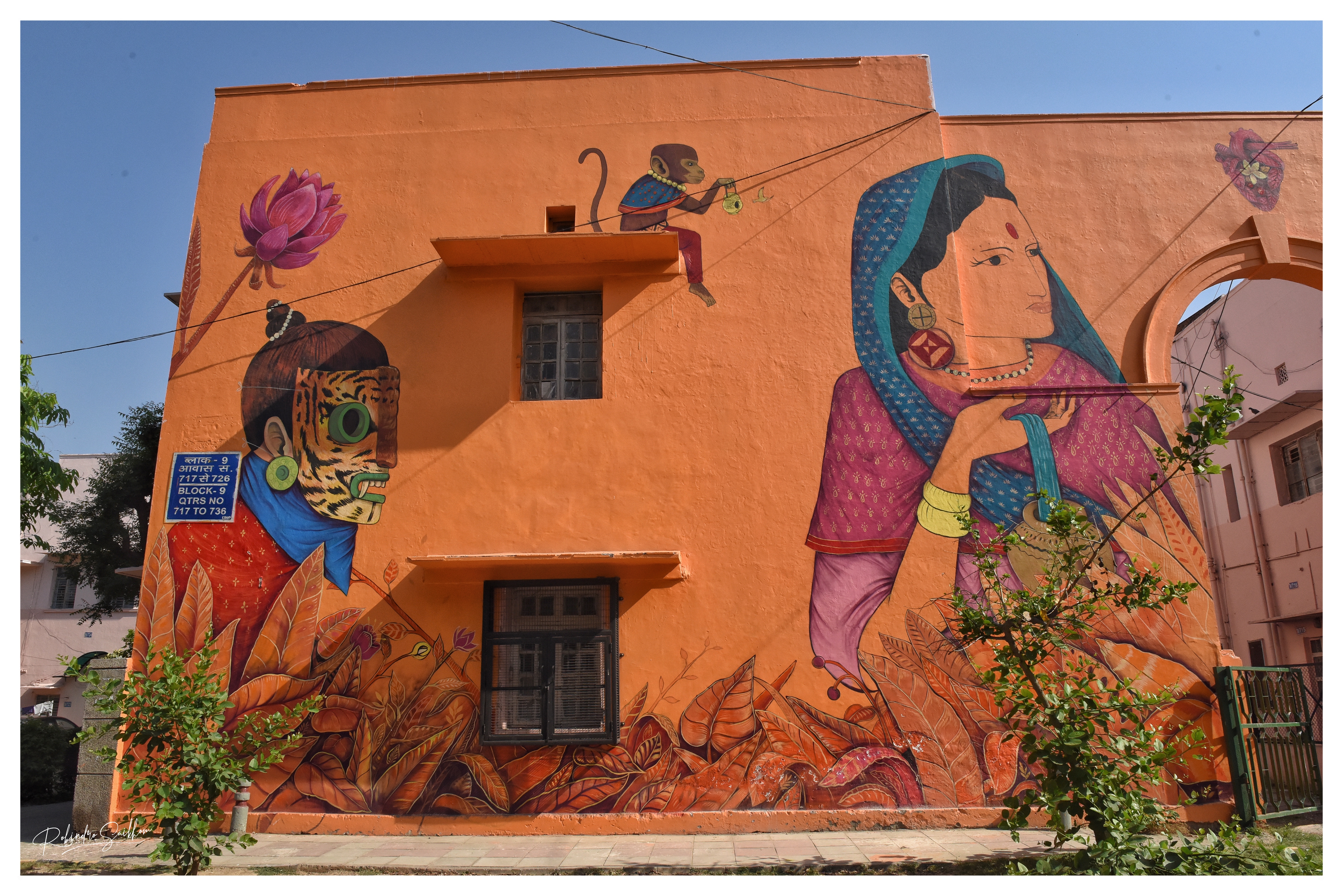
‘Katha-Crazy Twins: Chiller Champa & Boom Bhaijaan’ by @harshraman
Through this piece, Harsh attempts to merge the ancient Indian art of Kathakali, which is a storytelling dance-form from the south of India which uses gestures and no words, with today’s medium of no words – street art. The two heads together represent the duality of human nature and it’s art thereof. The artwork was purposefully chosen for the location so as to bridge the gap between the older migrant parents who hold on to their culture, and the younger generation – slowly letting go of their heritage.
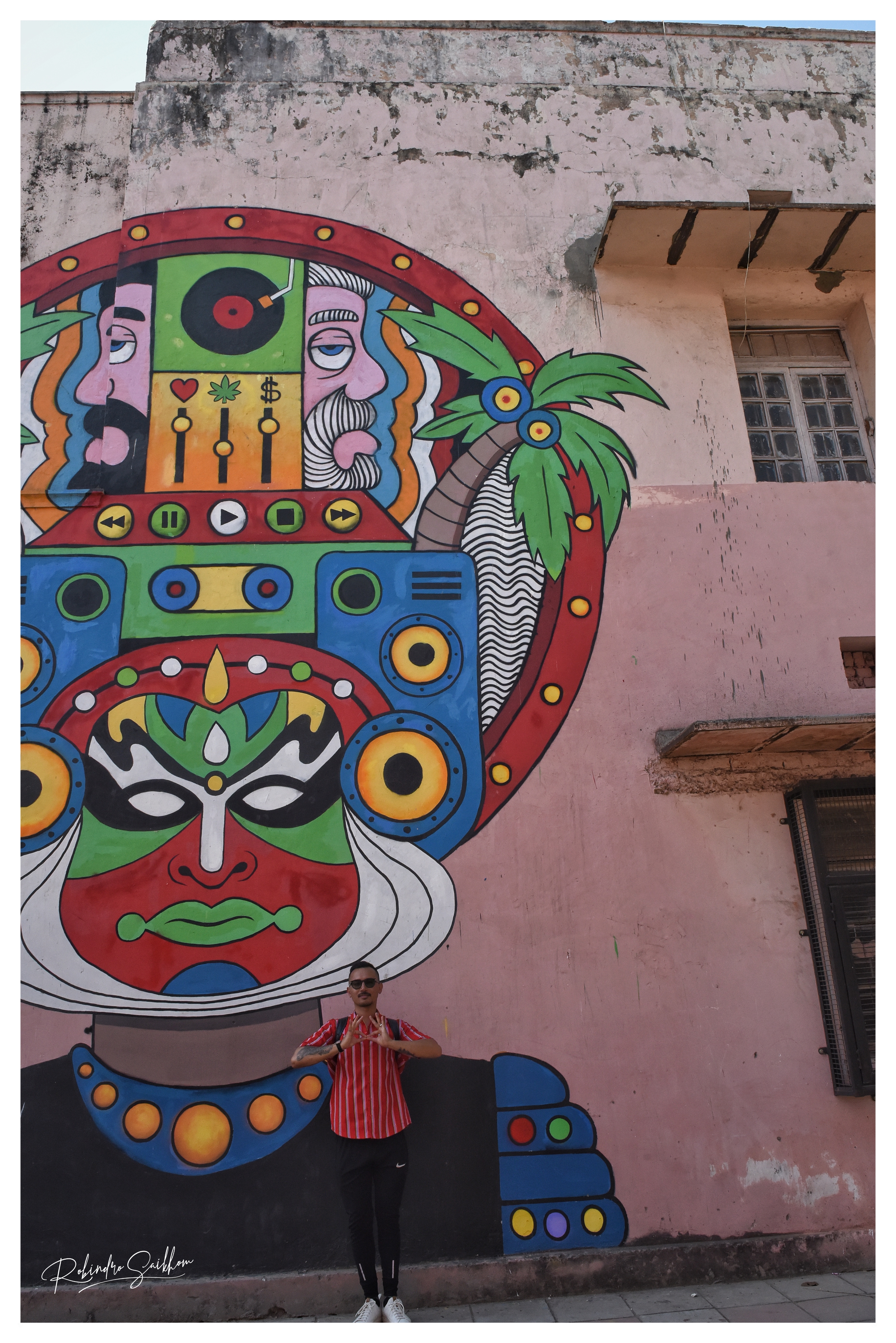
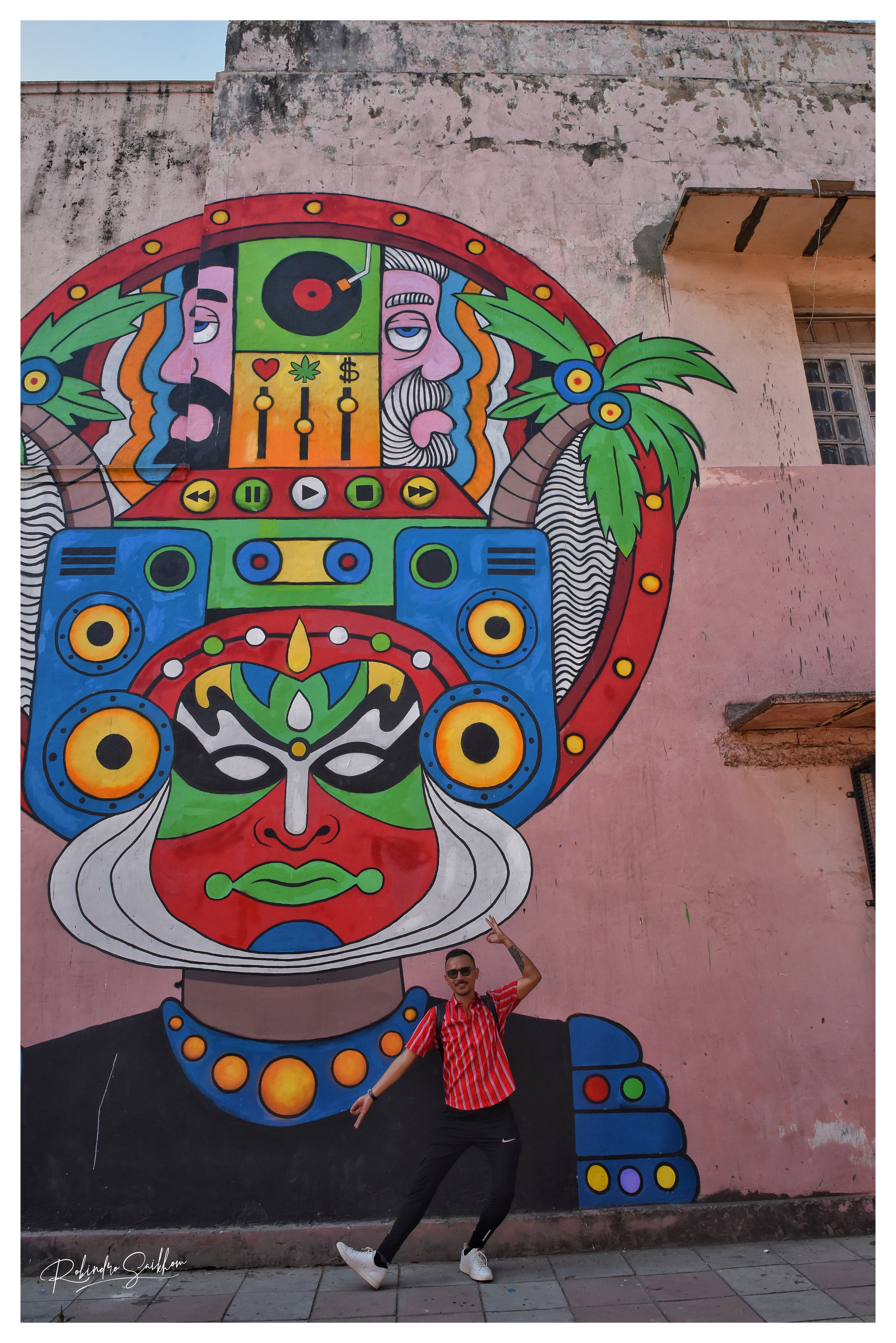
@aravaniartproject || Trans Lives Matter
In collaboration with the transgender community of Delhi, Aravani Art Project painted their first mural in Delhi in front of the N.P. CO-ED Senior Secondary School in Lodhi Colony.
The collective’s wall in Lodhi Colony is almost a retrospective of their body of work, bringing together delicate portraits of women they have worked in the past and women who have shaped their philosophies as well.
Unity is what emerges from the image they’ve created in a process that is fundamentally based on inclusion. 15 trans-women and several volunteers contributed to the execution of the wall making it a collective celebration of identity and representation.
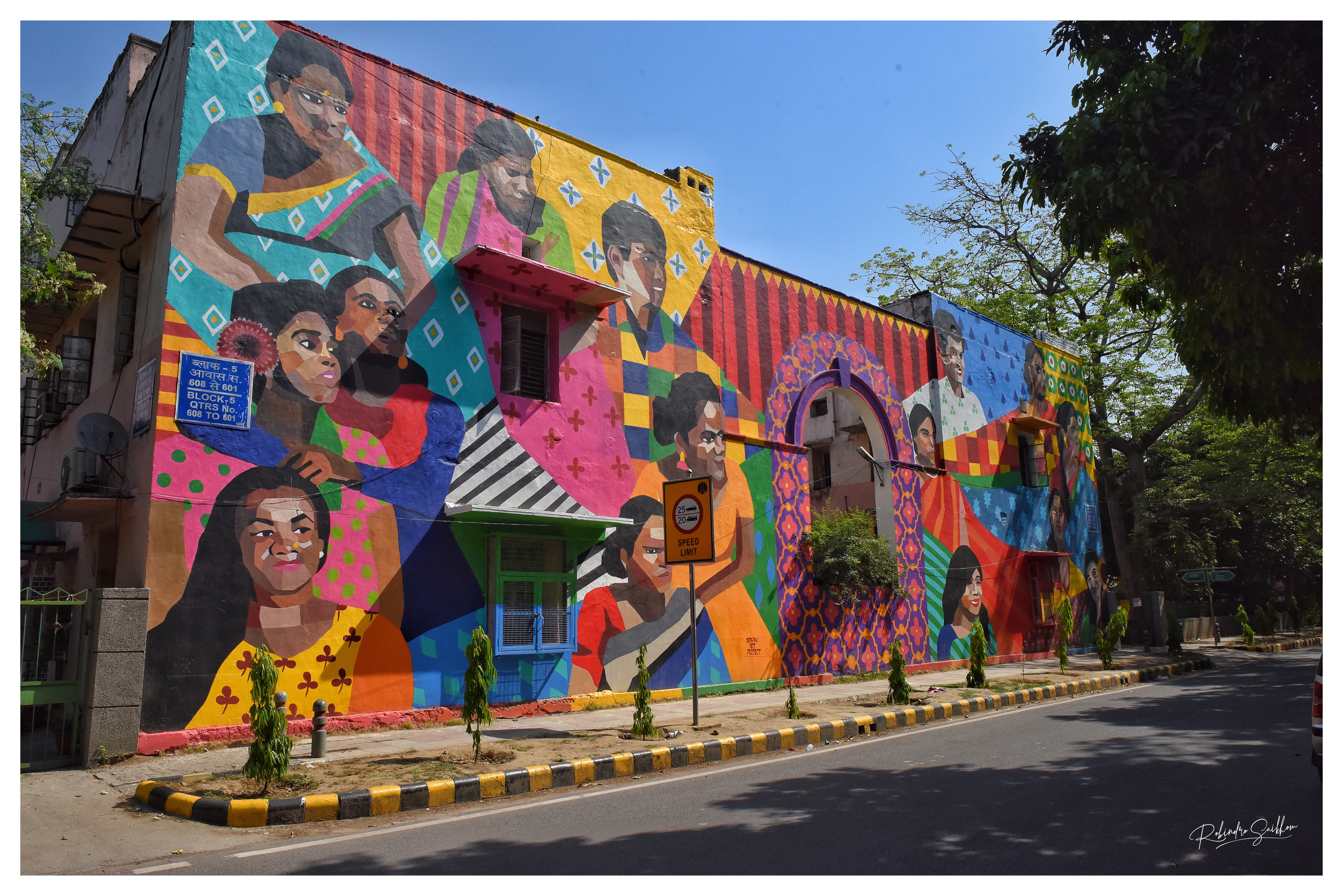
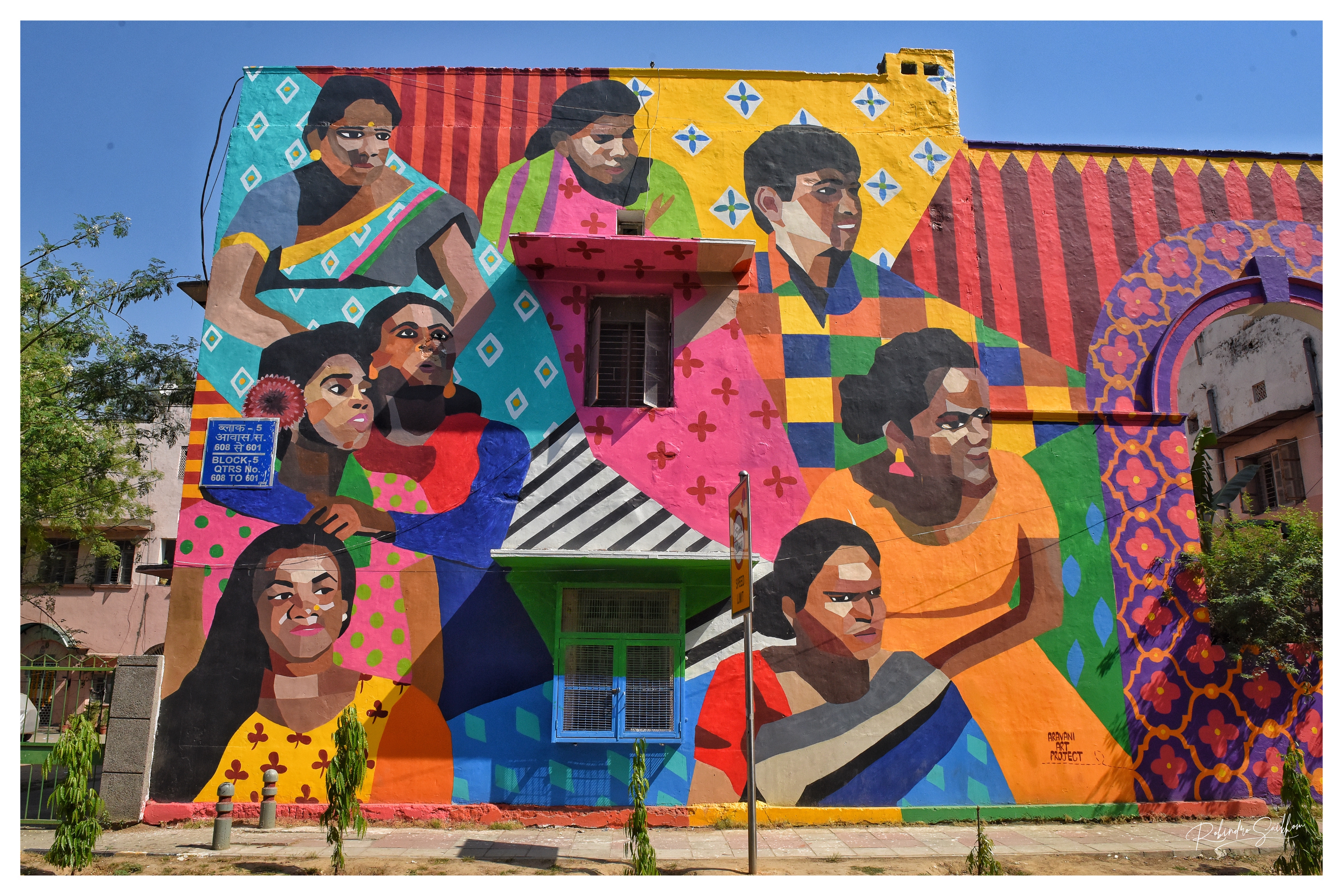
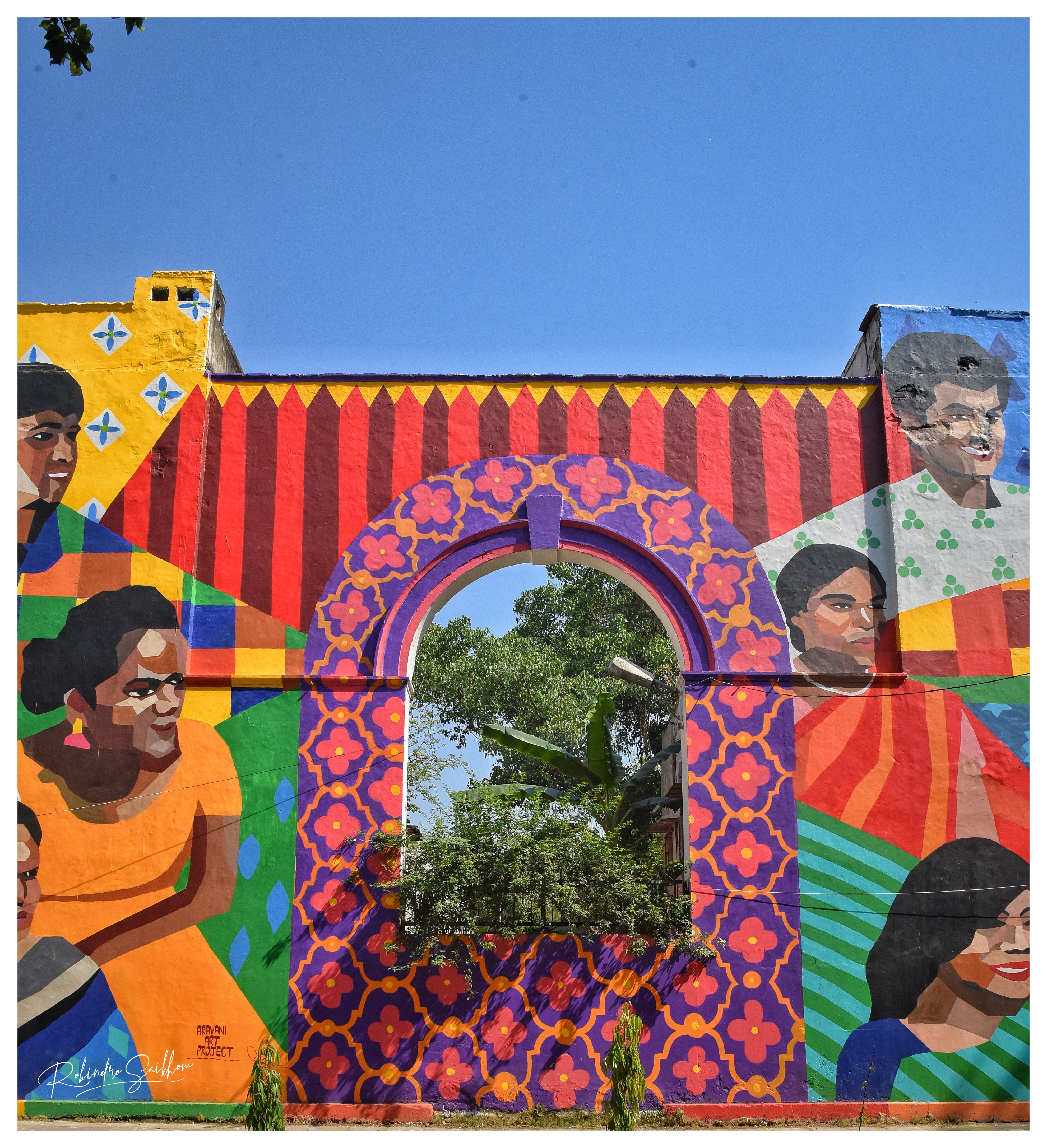
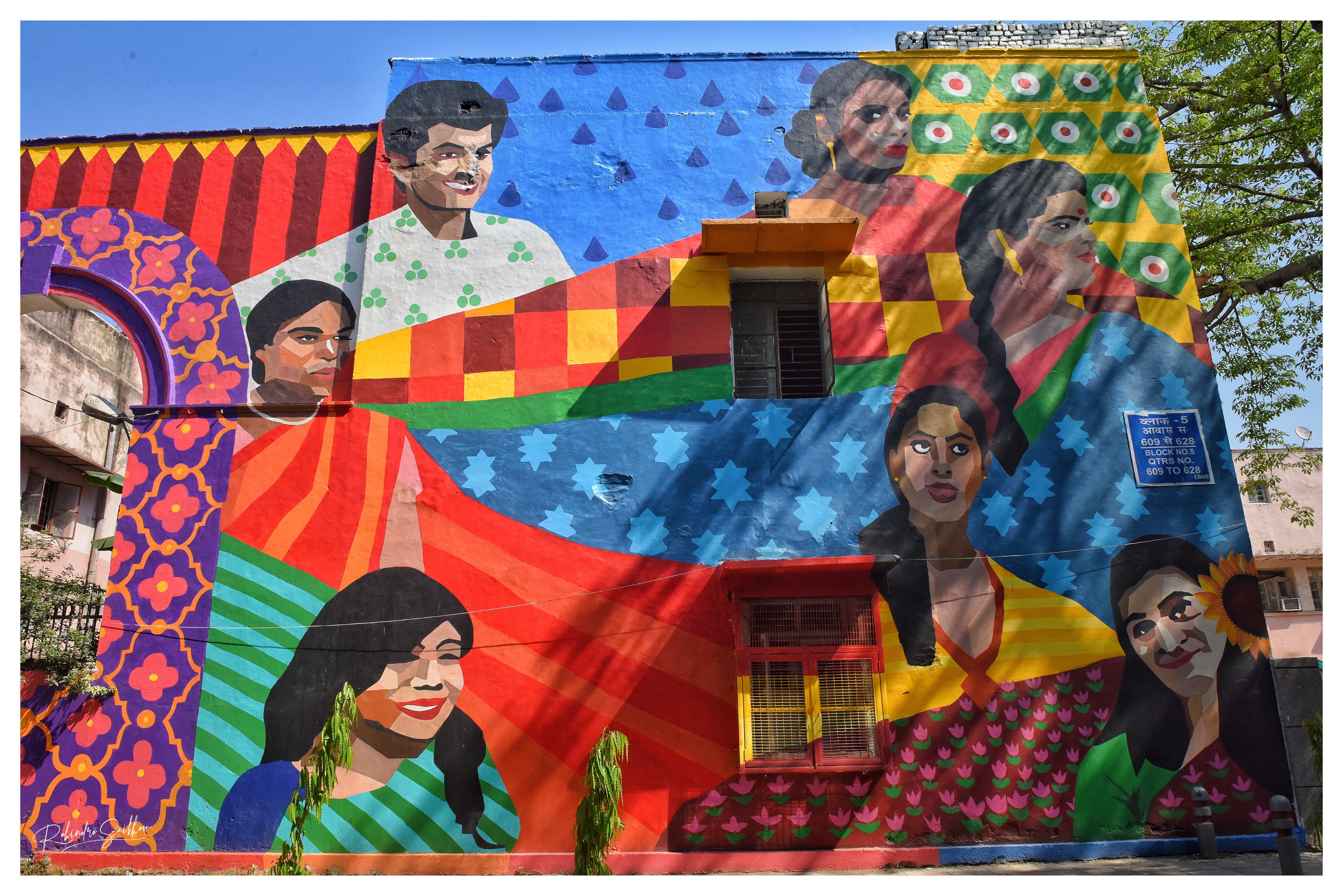
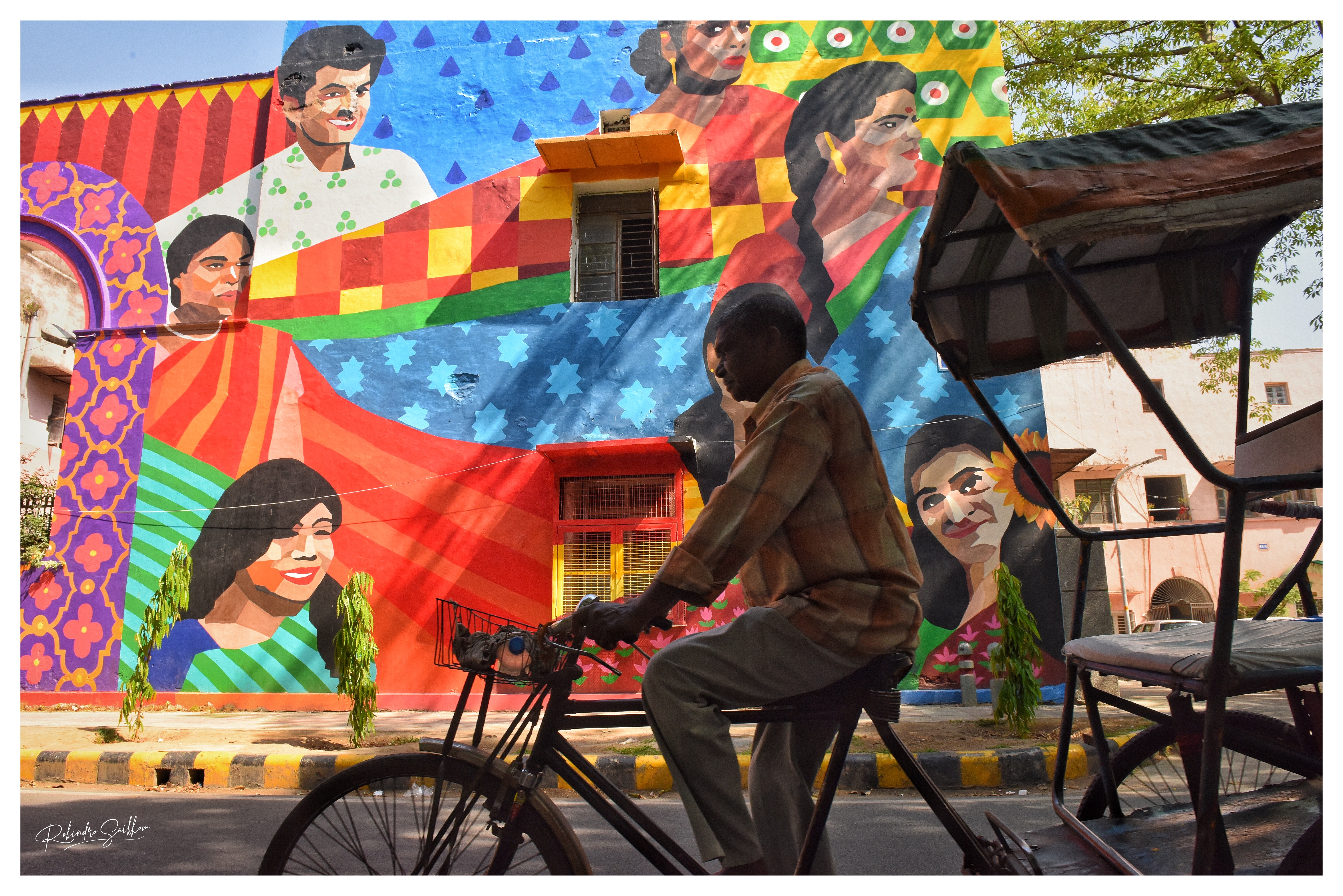
@sajidwajidshaikh || ’Shakti’
For his mural in Lodhi Colony, Mumbai artist Sajid Wajid gave an ode to femininity. Portraits of women are painted along with natural elements on a holistic amalgamation.
A vibrant colour palette and soft shapes offer a composition for the passerby to be engaged with, which are mostly children who go to the school right opposite to the wall, and their mothers who come to pick them up.
The work is a celebration of femininity and responds to the need of men to contribute to women empowerment as well.
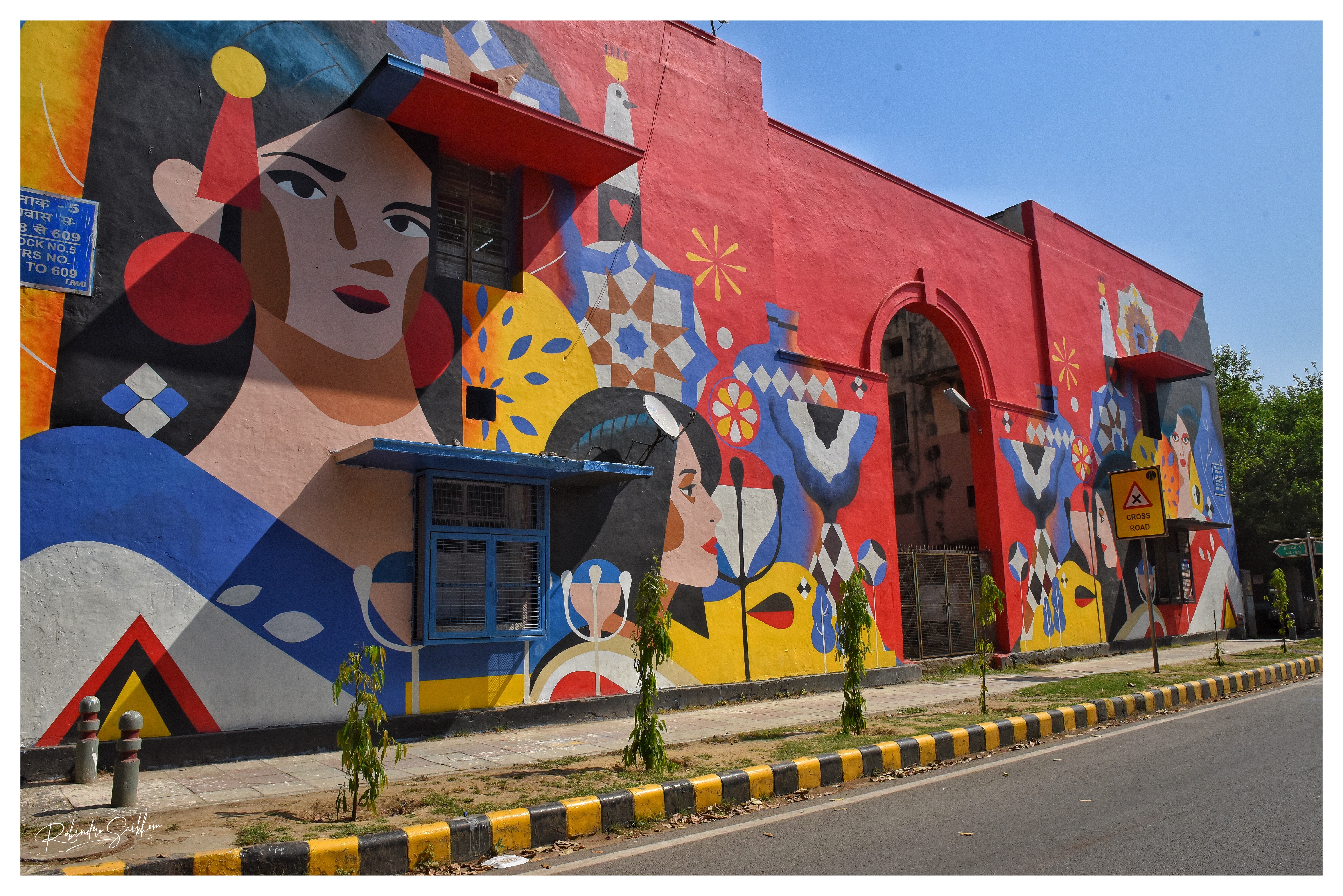
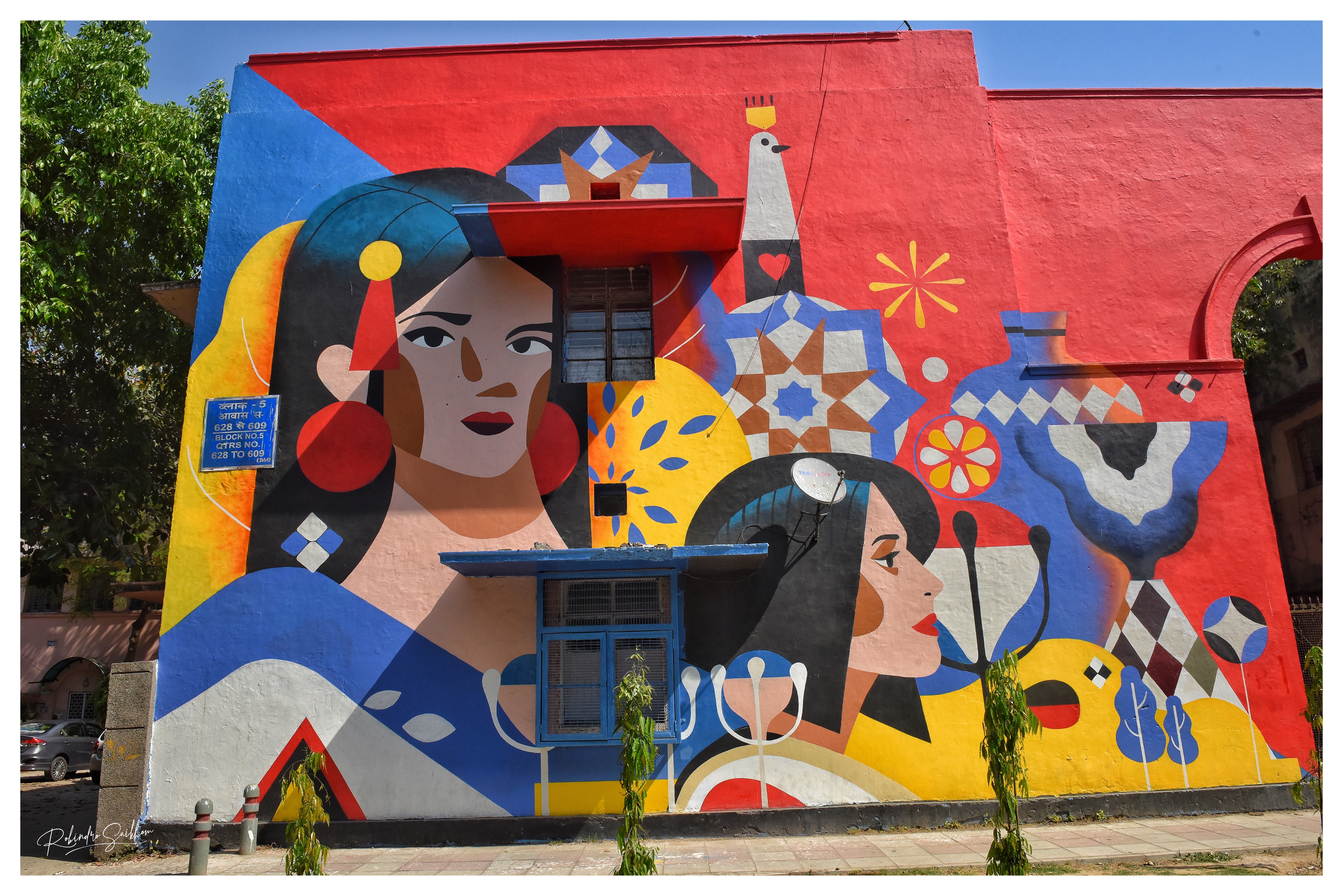
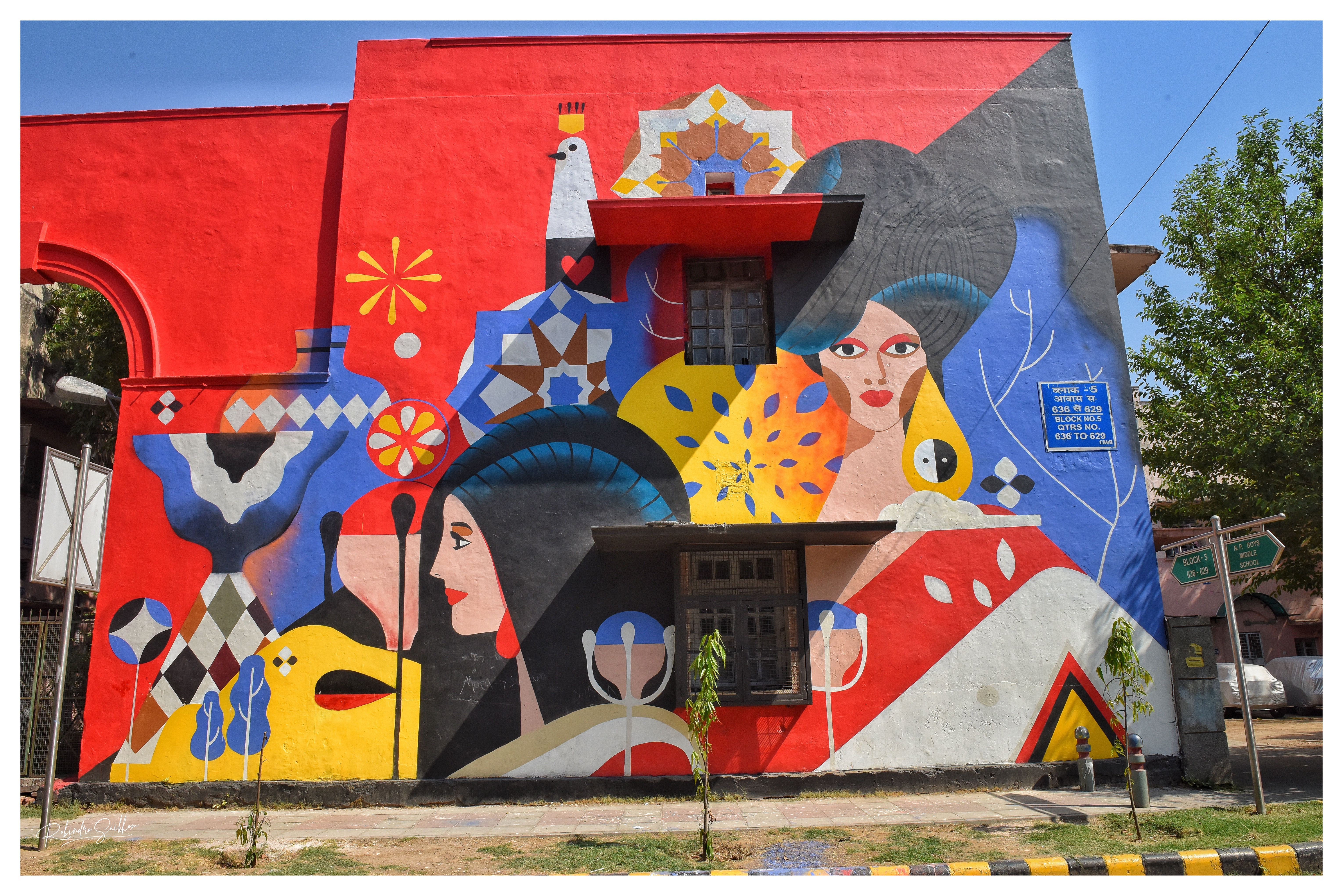
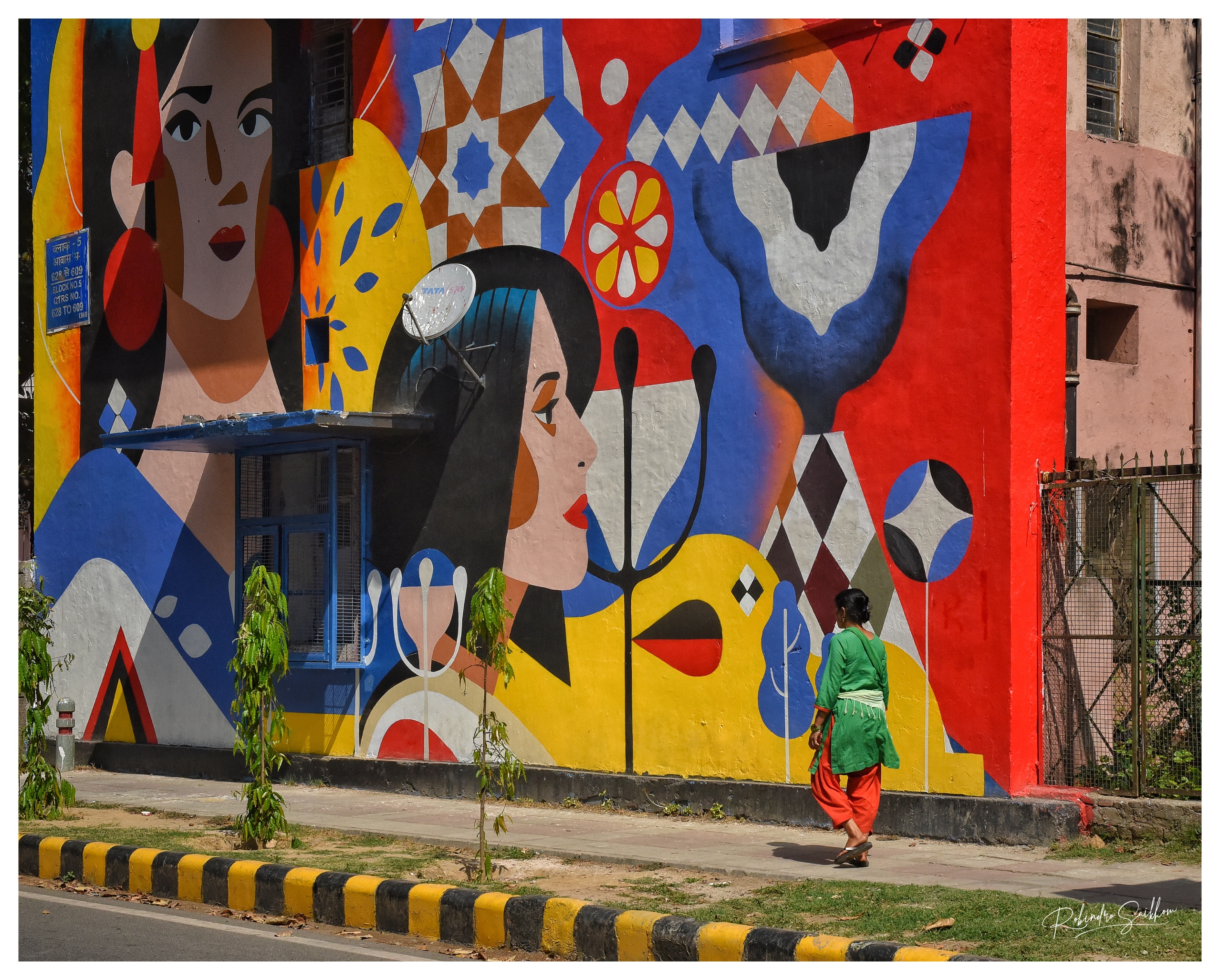
@adelerenault || ‘These Rock Pigeons Chose The Trees’
The artwork by Belgian artist Adele is now complete at Block 14 in Lodhi Colony. Her work celebrates one of the most common sight in cities which are often considered ordinary, but through her work she presents them as magnificent creatures full of beauty and grace.
The pigeons by Adele are already something notable at a distance, but the real impact of her work comes through the details once seen upclose, in person.
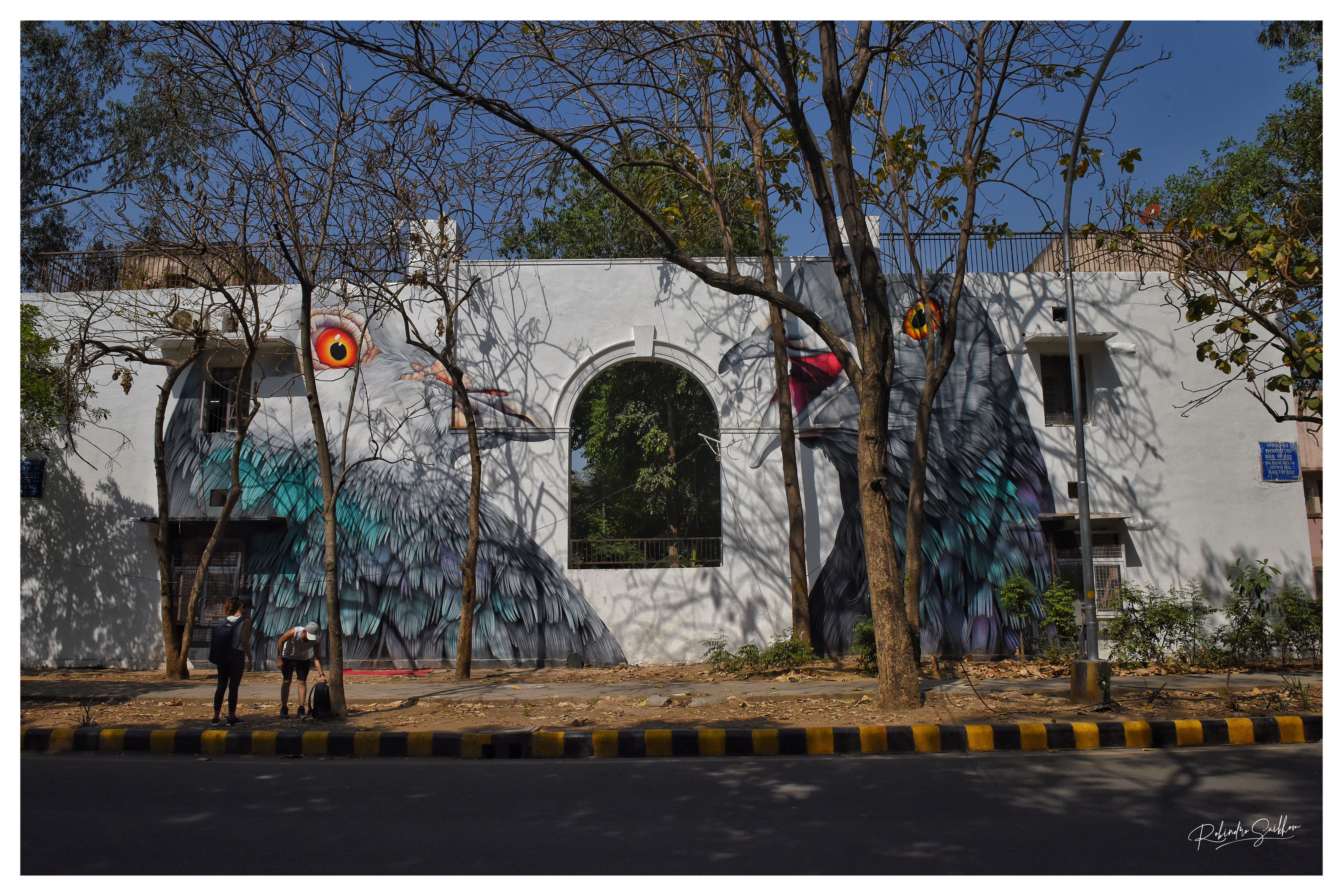
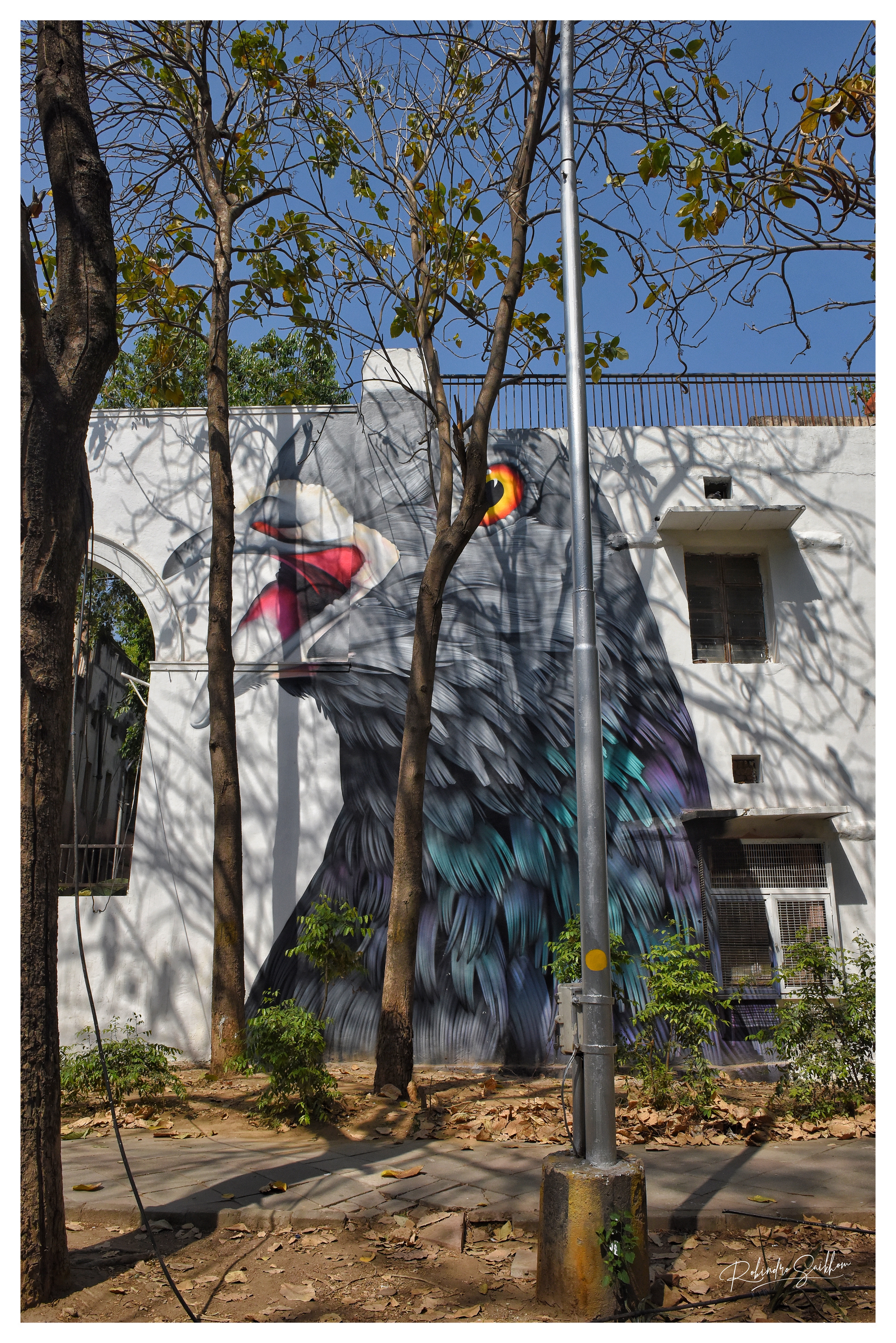
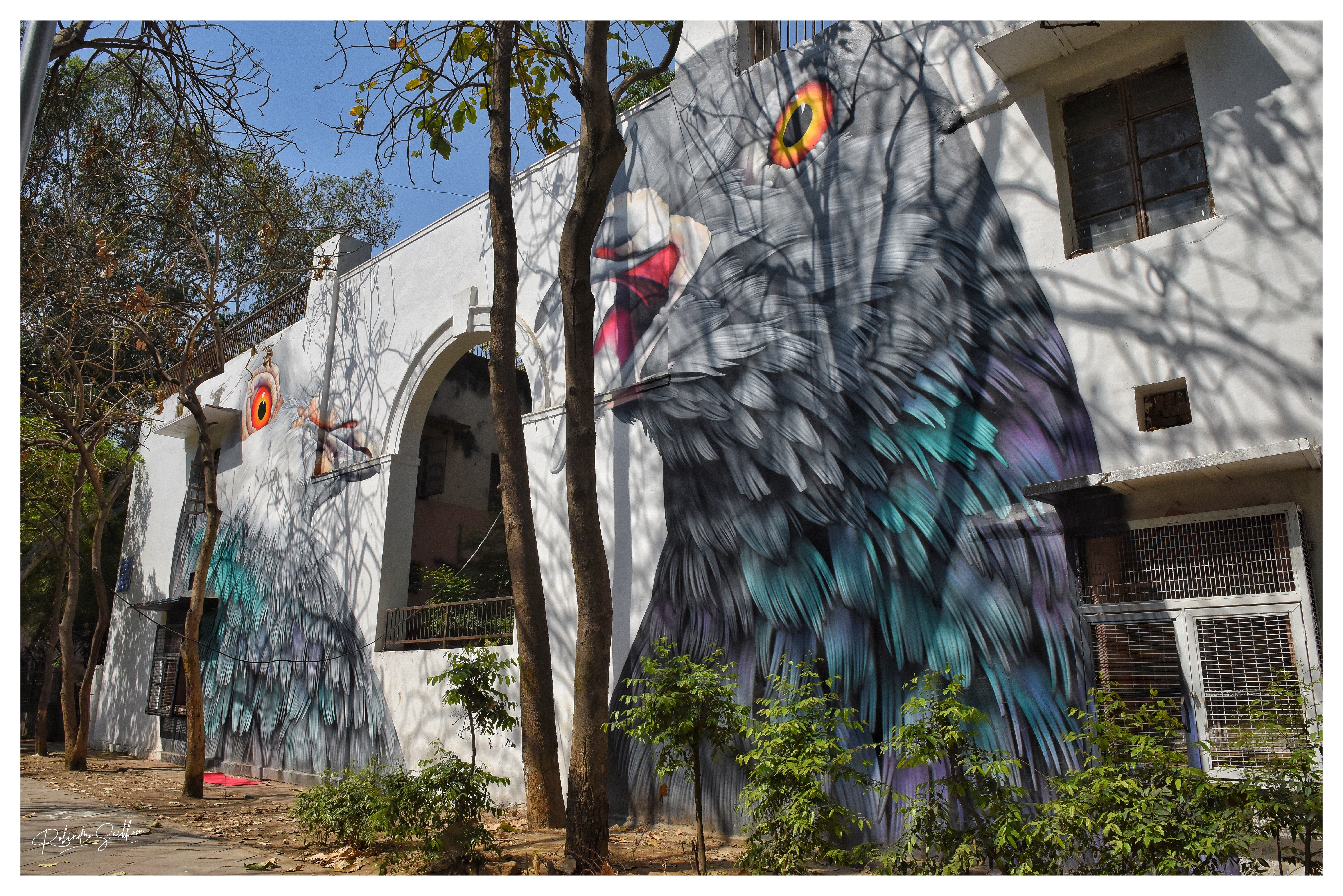
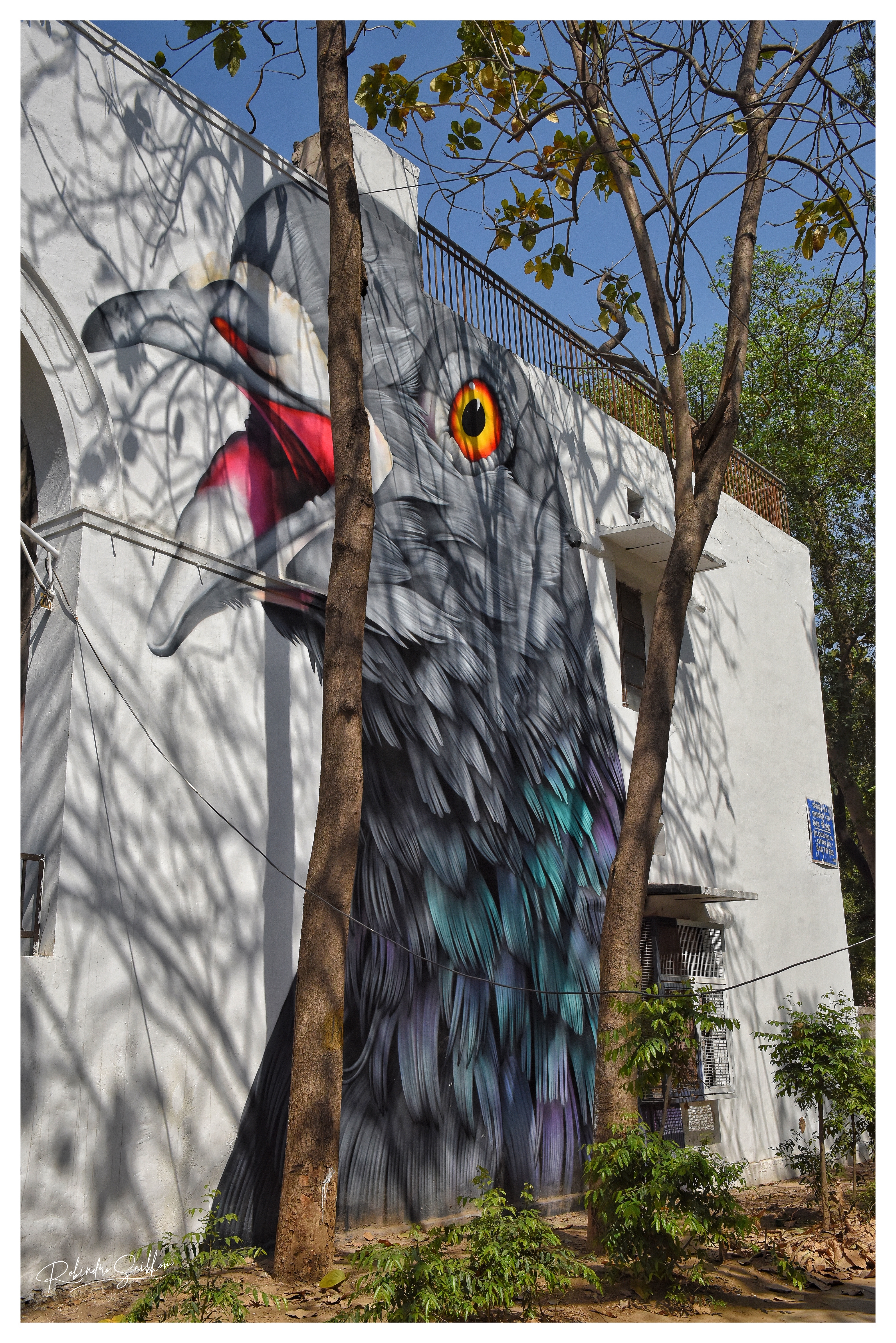
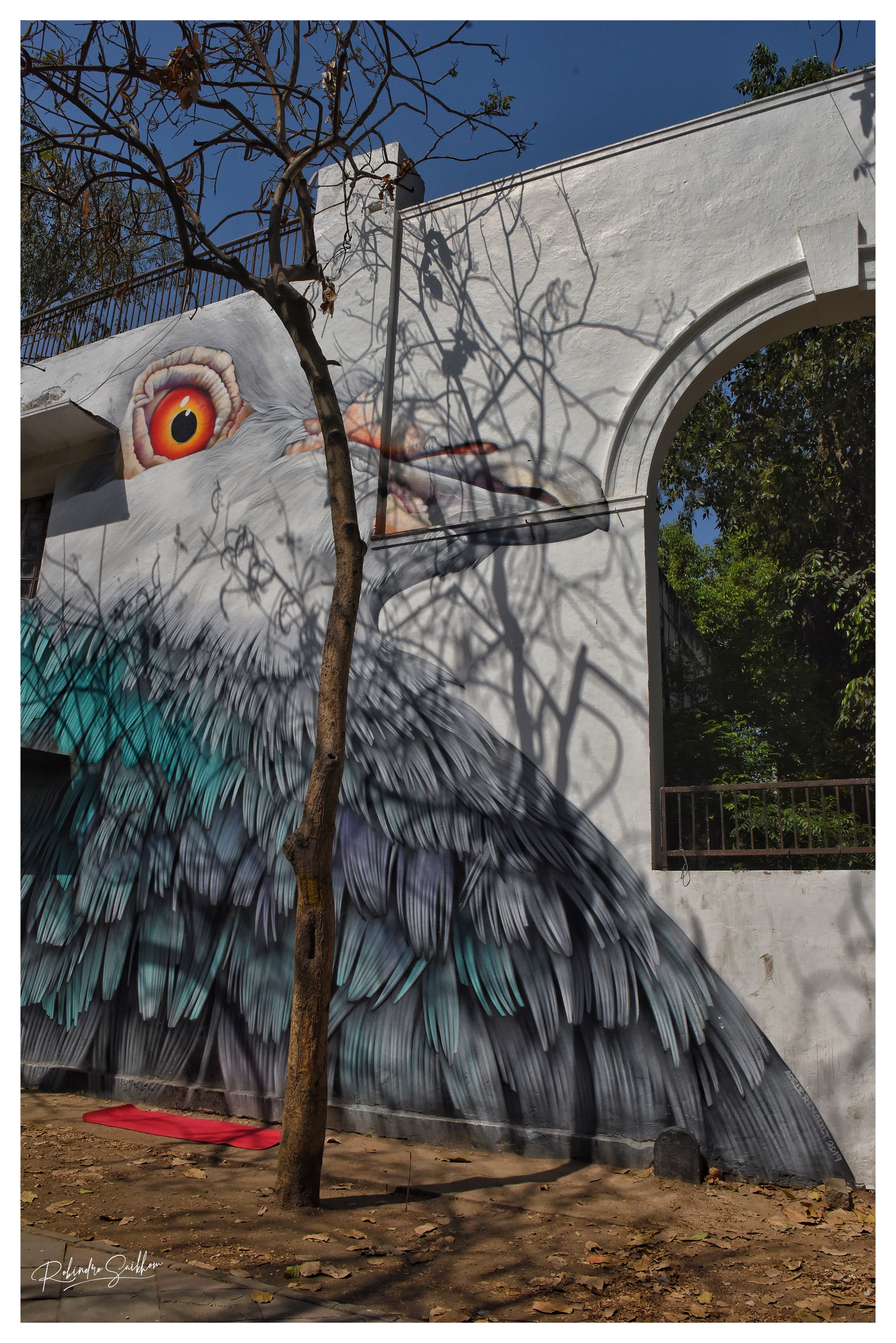
Colours of the soul by @senkoeone
Inspired by the beauty of nature, Senkoeone painted these birds since in Mexican culture as well as several others, are symbols of diversity, identity and freedom. Birds are also considered travellers with a lot of experiences and stories to tell. Hence he painted the birds in Lodhi Colony to represent the colourful diversity of the people who live there and also to encourage them to communicate with each other and share stories, just like the birds would.
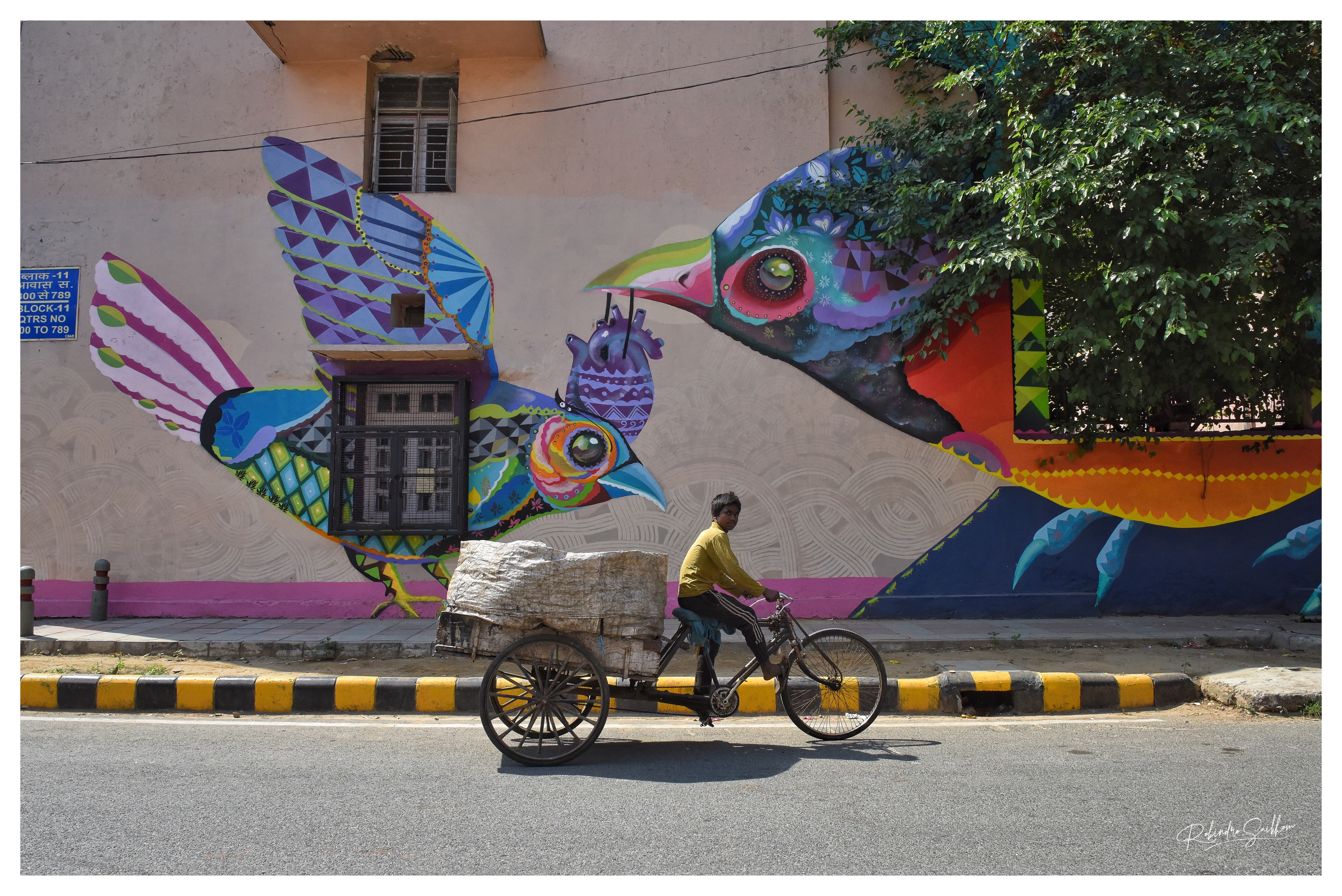
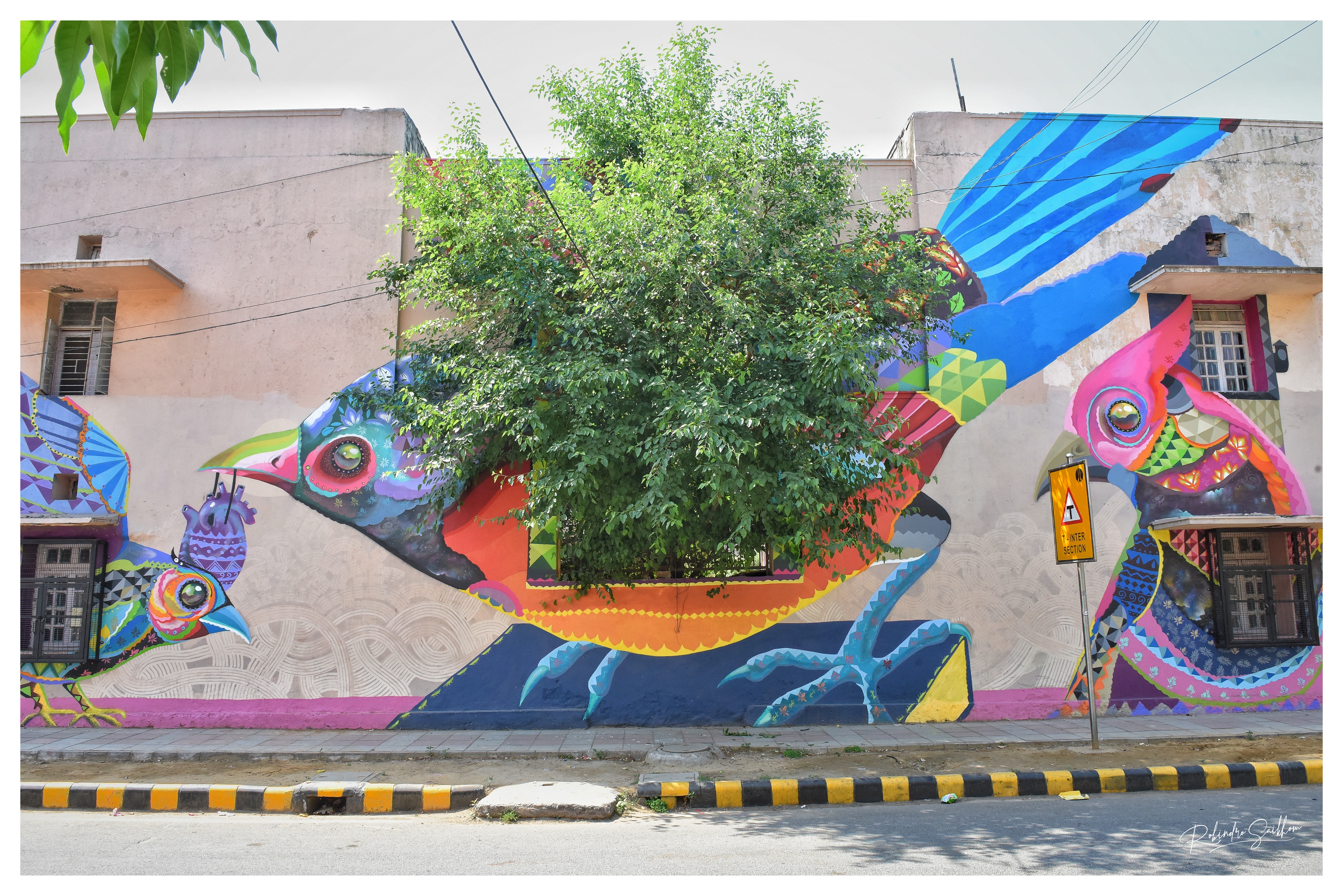
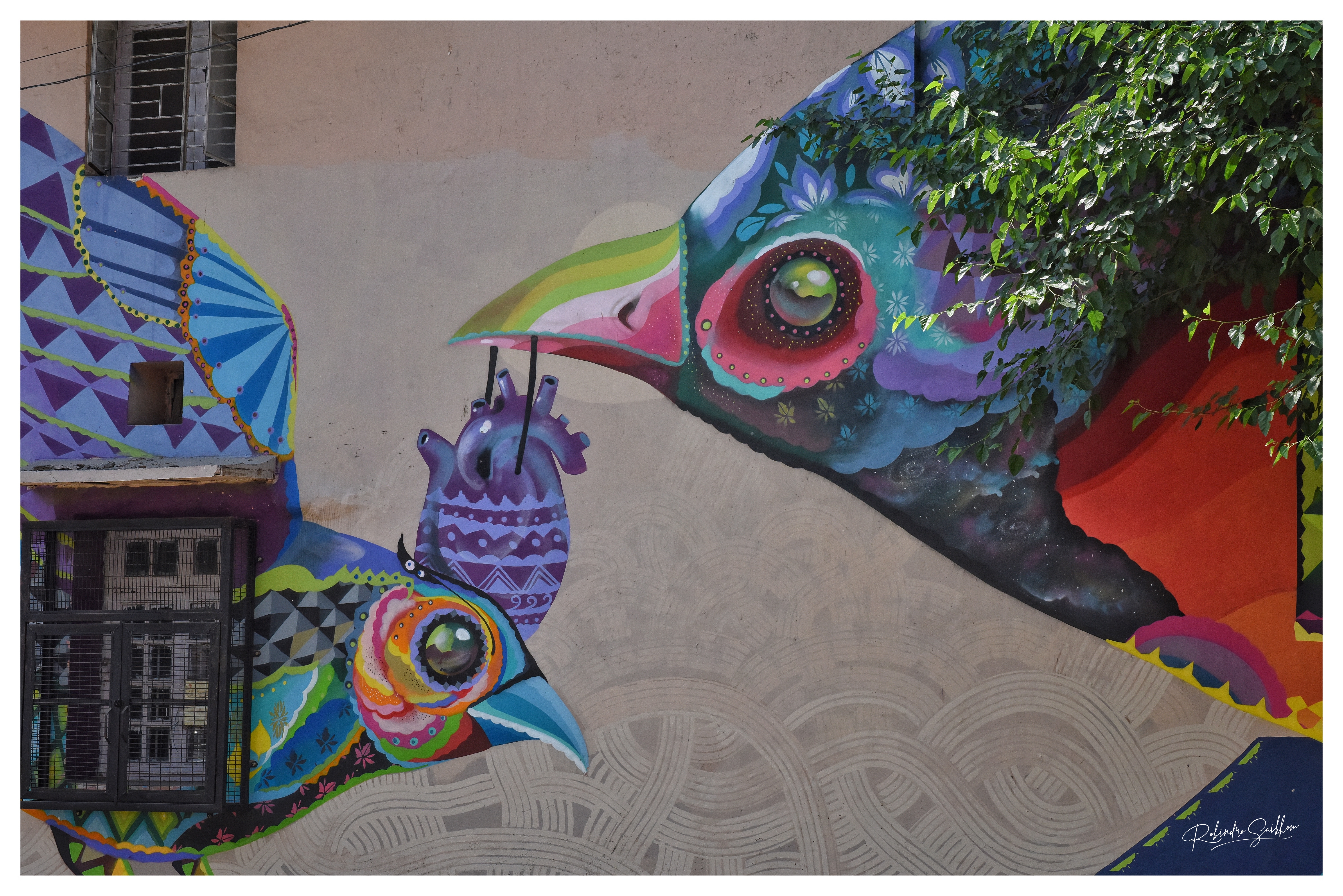
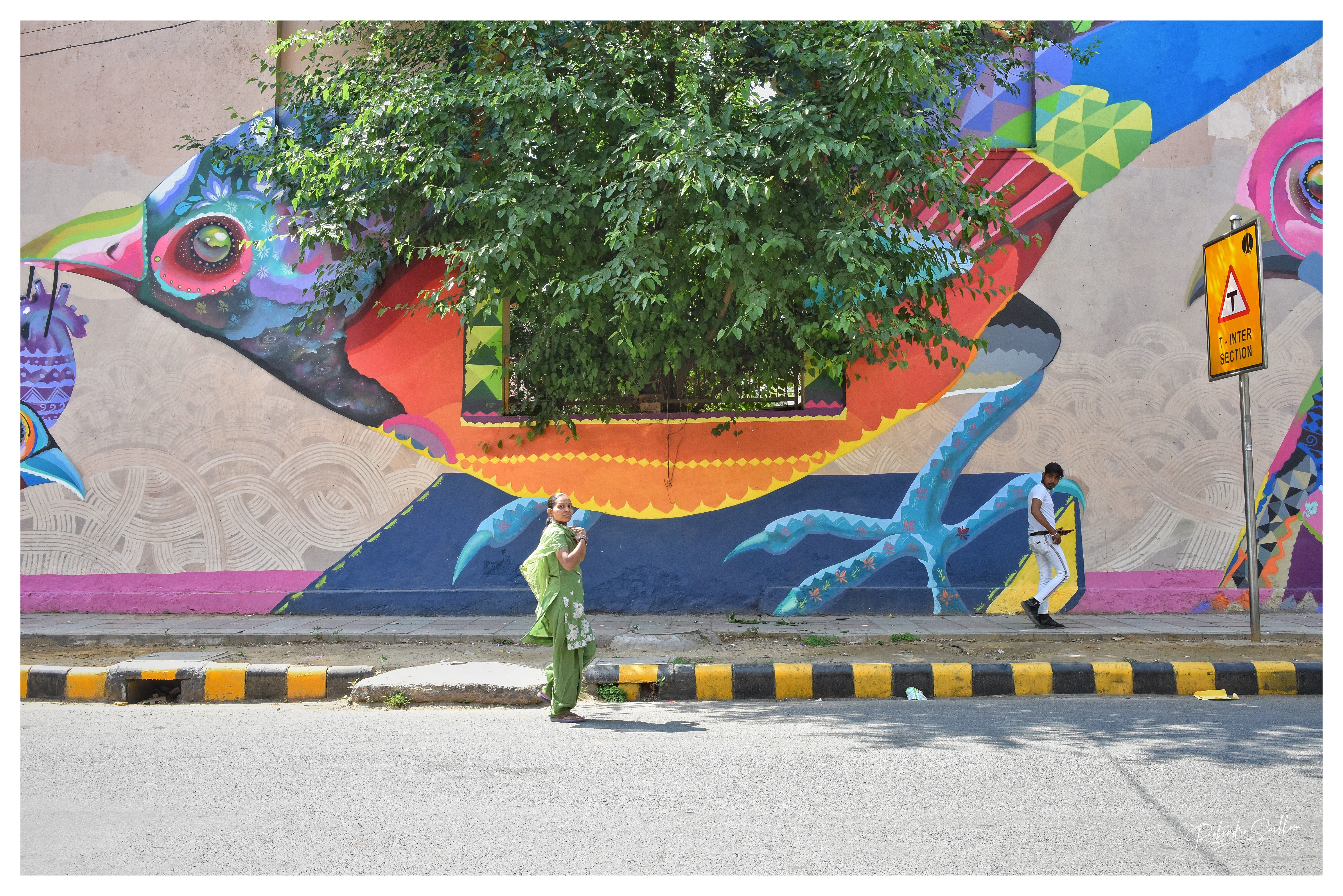
@dude.sg | The Singapore Lane
Eugene Soh gives a nod to the Florentine polymath with Moh Lee Sha, in which the staggeringly famous Mona Lisa — of which an earlier version is incidentally on display at The Arts House — is re-imagined through a Singaporean lens. Instead of Lisa del Giocondo, the image features local band The Sam Willows’ Benjamin Kheng, who does a passable job of imitating her enigmatic expression. And, to drive the point home, the idealised landscape in the background of the original is replaced with another ideal view of sorts: Singapore’s skyscrapers, greenery and Housing and Development Board flats.
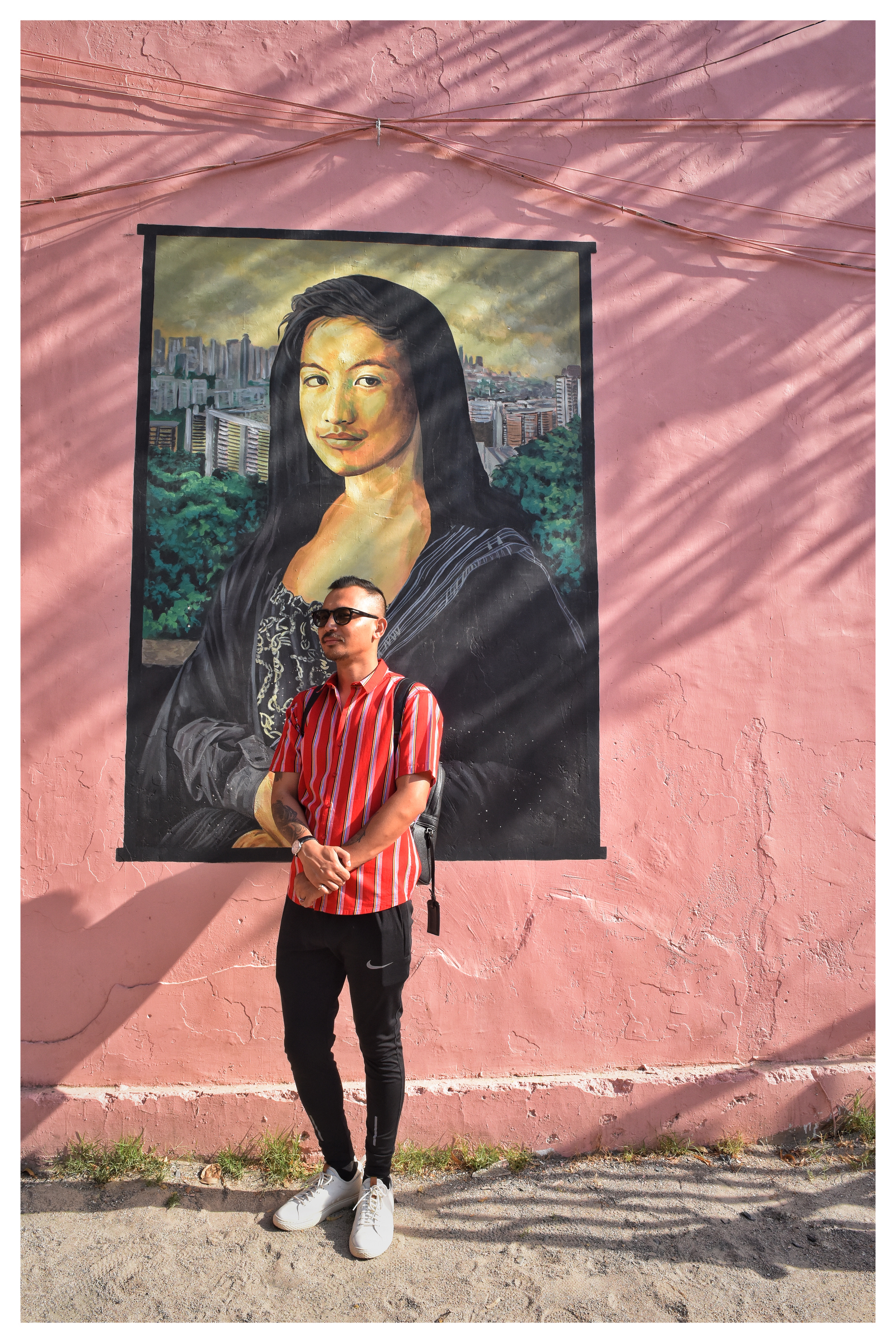
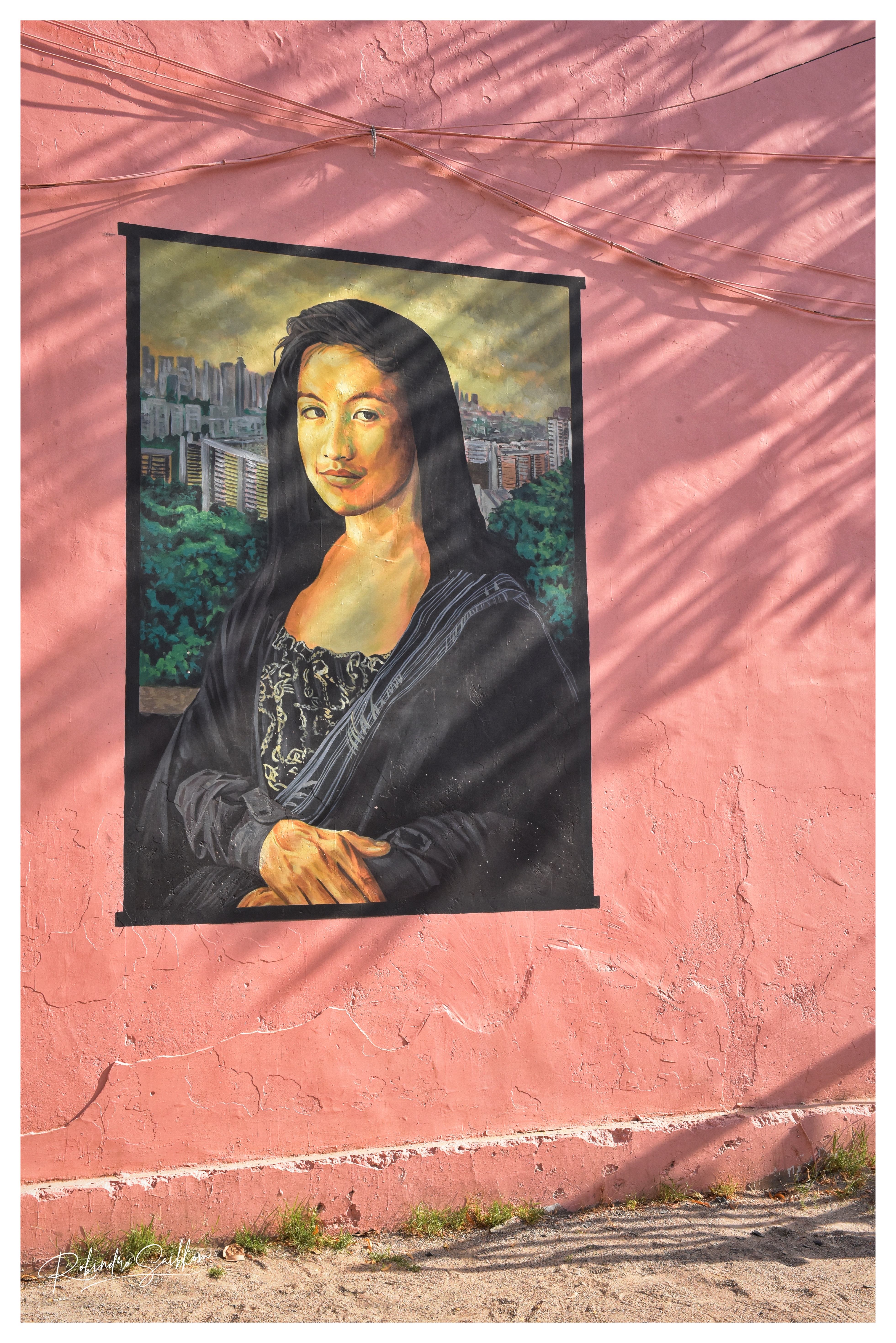
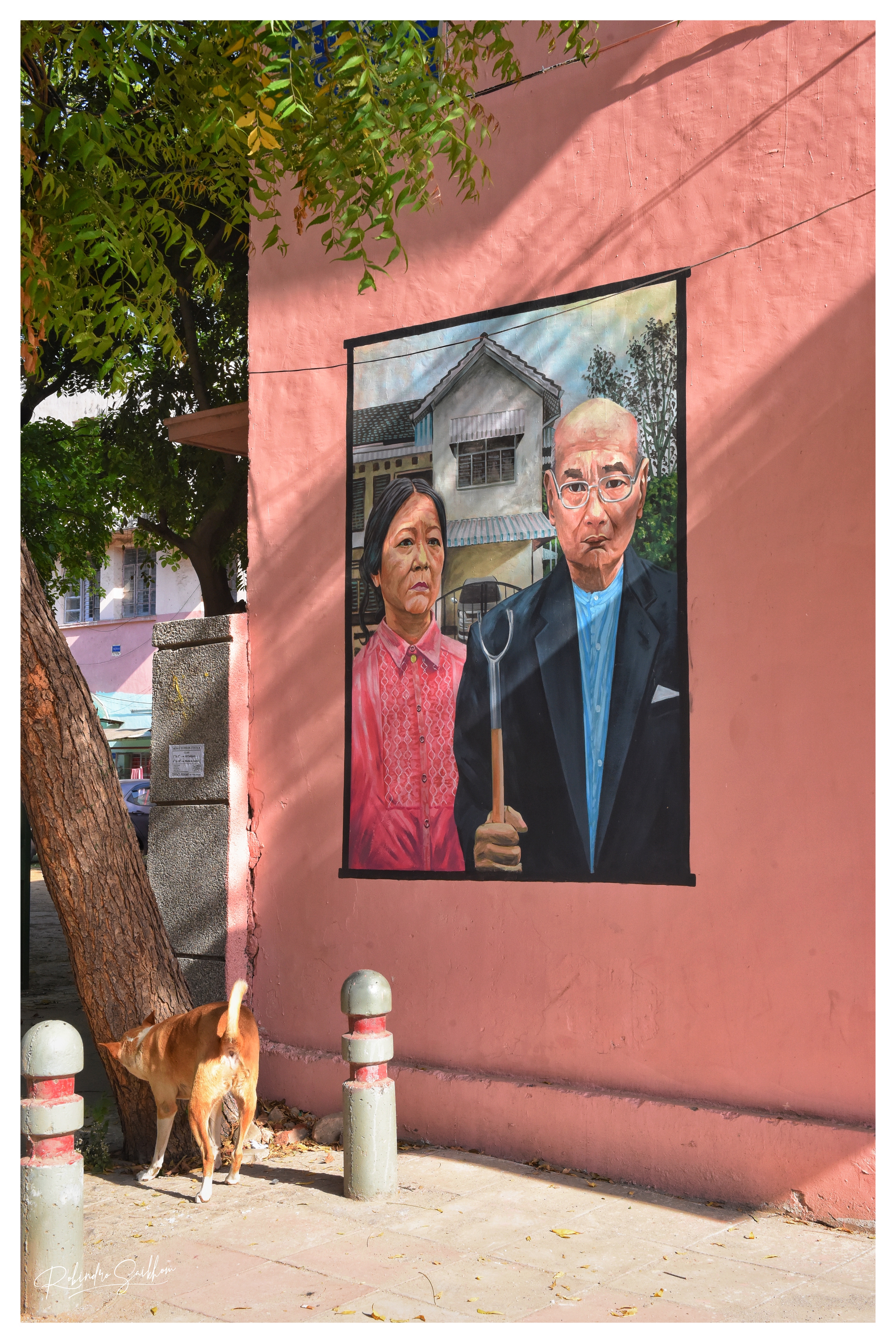
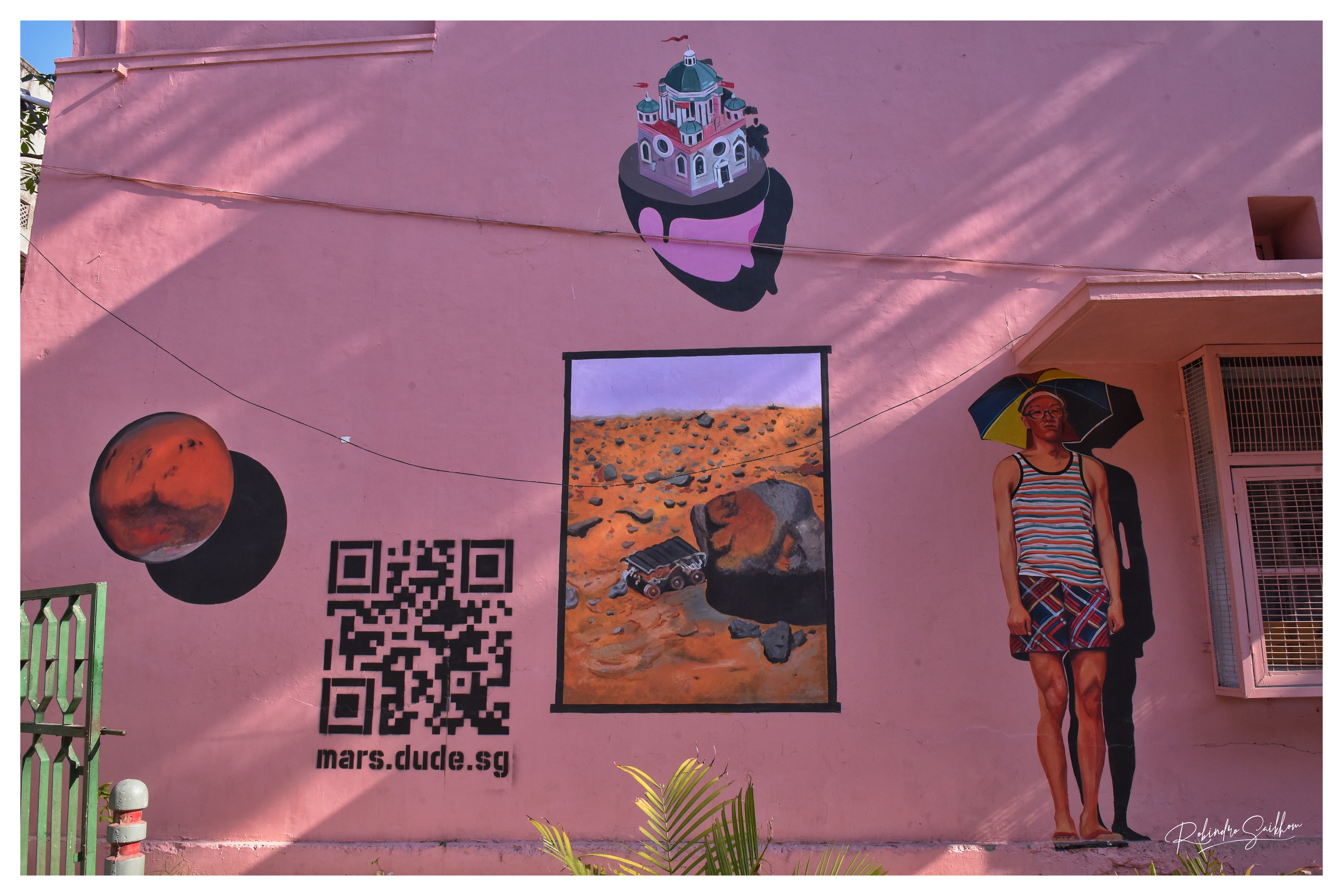
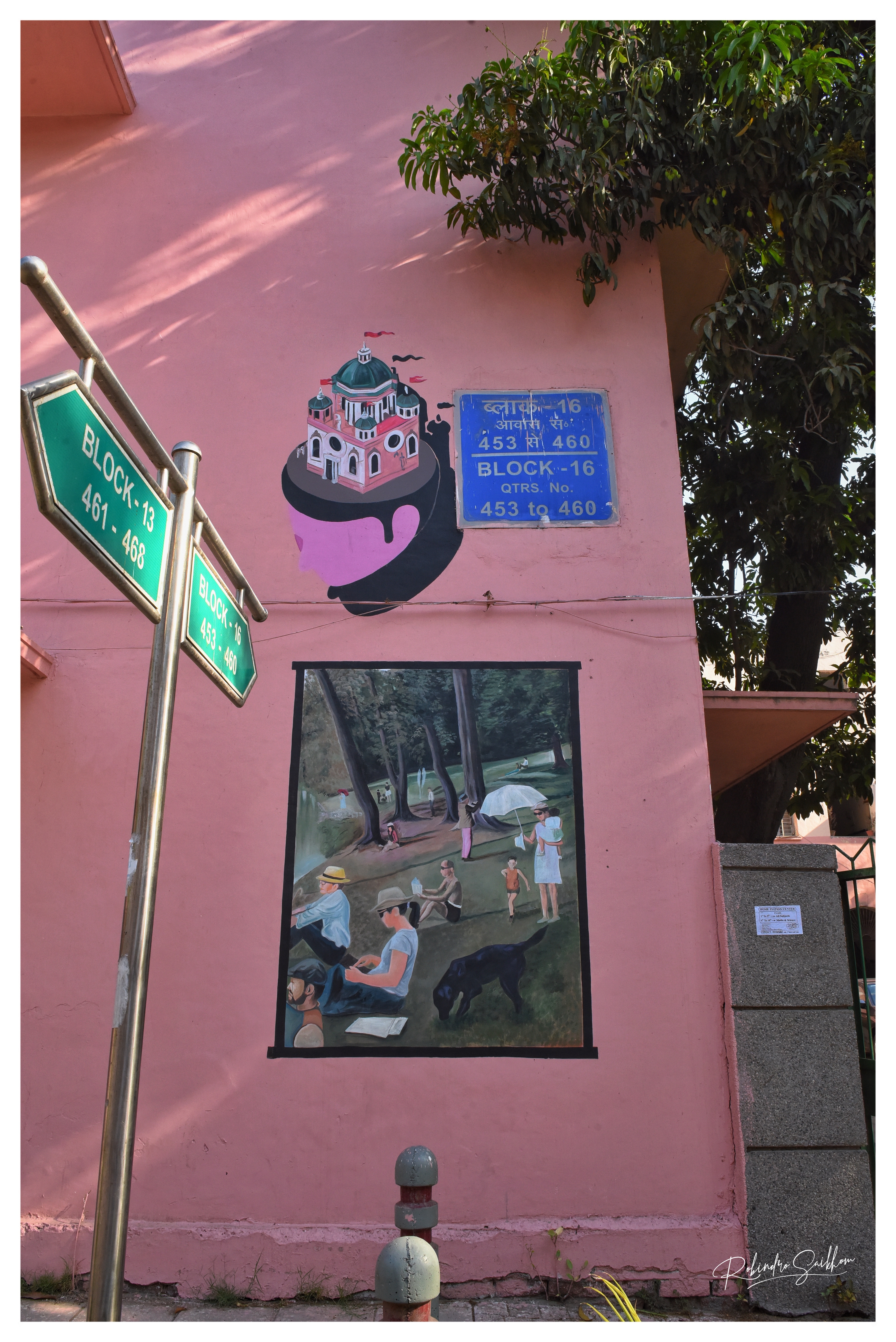
Robindro Saikhom
robin@serenejourneys.co
www.serenejourneys.co

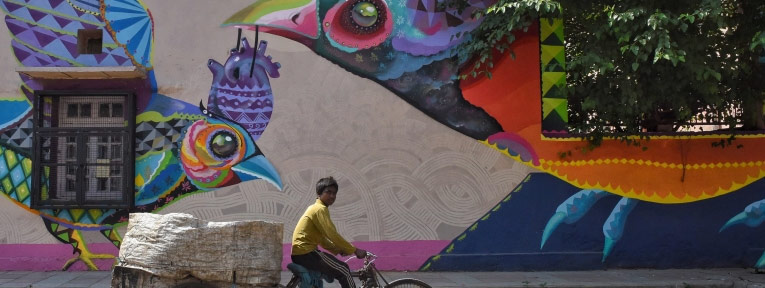
Great Blog!!!
Thank you Victor.